Rolling along with the Fall line-up for comics, here’s another September release, Hang Dai Studios has teamed with Alternative Comics to release their fall schedule, which includes three titles Beef with Tomato by Dean Haspiel, Smoke by Gregory Benton, and Schmuck by Seth Kushner and an all-star line-up of cartoonists. It’s a powerhouse line-up of talent, each book with its […]
Viewing: Blog Posts Tagged with: Indie Comics, Most Recent at Top [Help]
Results 51 - 75 of 249
Blog: PW -The Beat (Login to Add to MyJacketFlap)
JacketFlap tags: Previews, Dean Haspiel, Indie Comics, alternative comics, Top News, beef with tomato, hang dai studios, Add a tag
Blog: PW -The Beat (Login to Add to MyJacketFlap)
JacketFlap tags: call for submissions, animation, nickelodeon, Indie Comics, Top News, CAFs, spx '15, Add a tag
Here’s a on offer that many people might just get excited about: The Small Press Expo and Nickelodeon are teaming for a Call for Submissions where cartoonists can pitch ideas for an animated short. One person will be selected and get a cartoon made, working with the Nickelodeon animation staff. The offer is open to exhibitors […]
Blog: PW -The Beat (Login to Add to MyJacketFlap)
JacketFlap tags: Art, Previews, Indie Comics, Koyama Press, Michael DeForge, Top News, lose, Add a tag
It’s time to get back to what’s best in life: COMICS. The fall publishing season has been announced (and Spring ’16 is coming soon) so here’s some previews of what’s coming starting with Koyama Press . Next month will see the publication of Michael DeForge’s acclaimed series Lose with issues #7, now for the first time […]
Blog: PW -The Beat (Login to Add to MyJacketFlap)
JacketFlap tags: Indie Comics, Top News, CAFs, APE 2015, CXC, TopatoCon, Add a tag
A lot of information on small press, indie. CAF evets have piled up in my inbox. Here’s some of the news: • The newly revamped APE (Alternative Press Expo) in San Jose has put out a call for programming— The Alternative Press Expo (APE), taking place in San Jose’s Convention Center on October 3 and […]
Blog: PW -The Beat (Login to Add to MyJacketFlap)
JacketFlap tags: Paul Pope, Indie Comics, Top News, Henry Rollins, z2 comics, ian mcginty, Movies, Add a tag
Z2 Comics is on a roll, having announced a new line of graphics novels, a line of periodical comics and now a productions company, Modern Prometheus, which got inked in THR.
Blog: PW -The Beat (Login to Add to MyJacketFlap)
JacketFlap tags: Indie Comics, Top News, magnetic press, darby pop, Add a tag
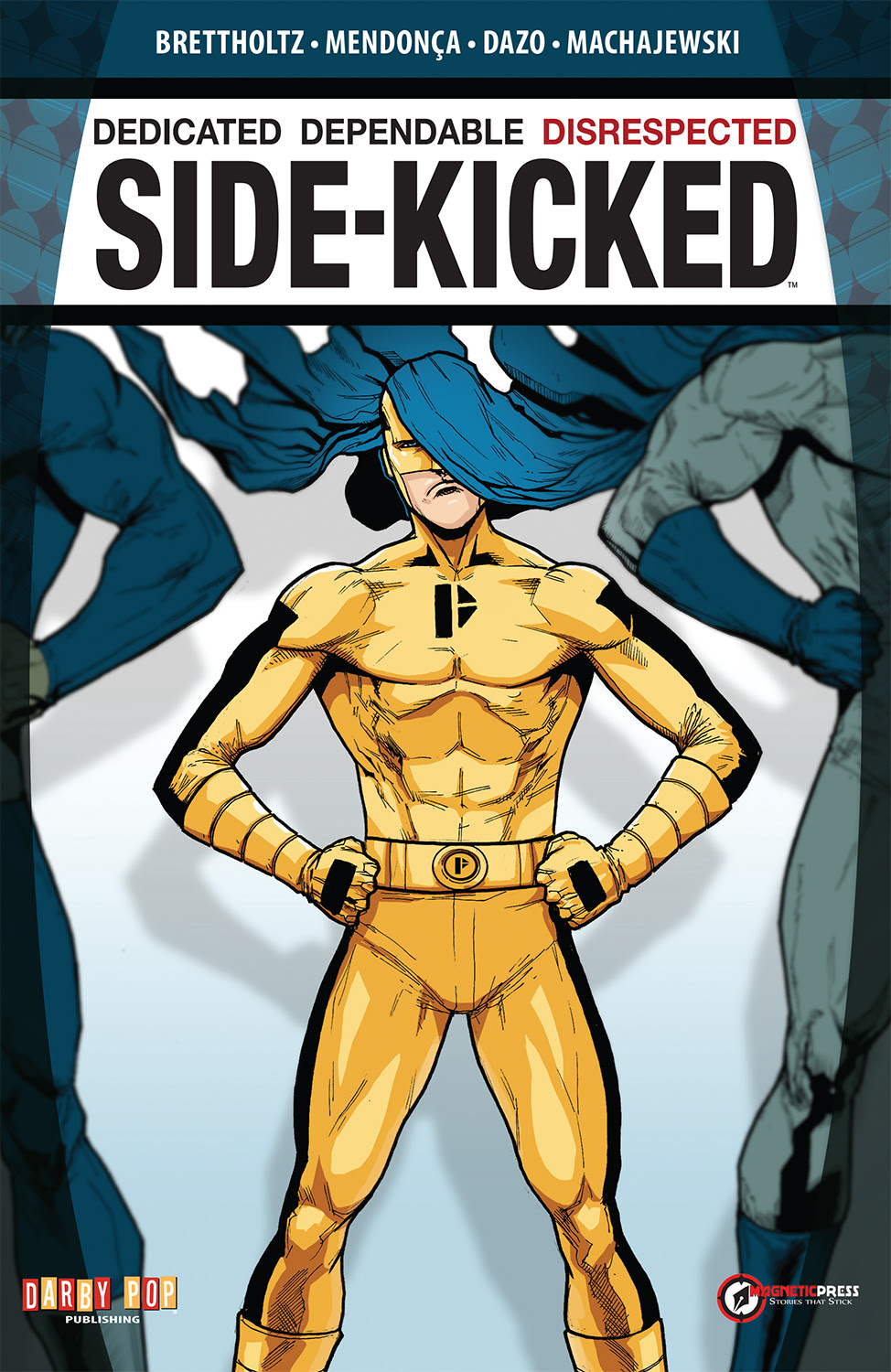 It’s team up time. Magnetic Press, best known as publisher of a bunch of award-winning and magnificent French comics in the US, has partnered with Darby Pop, a comics studio founded by writer/producer Jeff Kline. Darby Pop’s line of graphic novels will be published as an imprint of Magnetic, starting with October’s SIDE-KICKED by writer Russell Brettholtz and artist Miguel Mendonca.
It’s team up time. Magnetic Press, best known as publisher of a bunch of award-winning and magnificent French comics in the US, has partnered with Darby Pop, a comics studio founded by writer/producer Jeff Kline. Darby Pop’s line of graphic novels will be published as an imprint of Magnetic, starting with October’s SIDE-KICKED by writer Russell Brettholtz and artist Miguel Mendonca.
“In the current marketplace, it’s hard to get attention for any new titles, especially those not based on pre-existing brands,” Kline said in a statement. “But, in just their first year of existence, Magnetic Press seems to have found a recipe for connecting to a rabid fan base that both trusts their taste, and appreciates their commitment to the form. Originally, Mike Kennedy and I were just grabbing the occasional beer and sharing ‘war stories.’ But, at some point, it dawned on us that we shared so many of the same passions — and goals — that a partnership only made sense. ”
“Jeff has a proven track record for spotting and cultivating the most entertaining stories,” added Magnetic Press president Mike Kennedy. “The Darby Pop line promises that same engaging, animated audience experience with a whole new set of properties. We’re excited to support those debuts in the coming year!”
Sidekicks is a 96 page collection about a group of superhero sidekicks seeking the spotlight. Darby POp’s Kline is a multiple Emmy Award winner and wrote such comics as Transformers Prime, G.I. Joe: Renegades, and Jackie Chan Adventures. The line itself was first an imprint of IDW, where they published nearly 40 individual issues and trade paperbacks including CITY: THE MIND IN THE MACHINE by novelist/screenwriter Eric Garcia (Matchstick Men, Repo Men),THE 7TH SWORD by screenwriter John Raffo (Dragon: The Bruce Lee Story, The Relic), DOBERMAN by movie/TV writers Scott Marder, Rob Rosell, and Jack Lambert (It’s Always Sunny in Philadelphia, Unsupervised), DEAD SQUAD by multi-hyphenates Matthew Federman and Stephen Scaia (Jericho, Warehouse 13, Human Target), and INDESTRUCTIBLE by Kline himself.
Magnetic Press has certainly established itself as one of the top new companies in recent years, and while the Darby POp material is a little far afield from their French material, safety in numbers!
Blog: PW -The Beat (Login to Add to MyJacketFlap)
JacketFlap tags: Comics, Indies, Breaking News, anthology, Indie Comics, Northwest Press, Top News, RISE, Top Comics, Add a tag
by Melanie Burke
Images courtesy of Northwest Press
“It’s like an after school special but it’s a good one,” says Adam Pruett of the anti-bullying comics anthology RISE. “I’m not just saying that because it’s my book and I want to promote it—I actually believe in the material.”
Born from a frustration with caustic attitudes and gatekeeper mentalities within the comics community, RISE is the collaborative effort of editors Joey Esposito, Adam Pruett, Erica Schultz and Kristopher White. With hundreds of different contributors from all over the globe, the book currently has two issues out with Northwest Press and a third is slated for digital release this summer.
“Out of that [frustration] came this idea, ‘Let’s do an anthology of celebrating being yourself’ and if there’s any place where that should be acceptable it’s the comics community,” says Esposito of the book’s initial inception.
The editorial team began working together in 2010 and approached Northwest Press several years later, launching a Kickstarter to fund printing costs in October of 2014. The Kickstarter platform, in addition to the for-sale issues on the Northwest Press website, made it possible to fund a book that is largely given away for free.
In addition to being available for free download at risecomics.org, RISE is distributed at all-ages events and school tours by Stand for the Silent and Prism Comics.
“It feels like we’re contributing to society,” says Esposito. “In a small but important way.”
Part of the goal for the editorial team was to approach the issue of bullying from all sides—hence the power of an anthology that delivers such a diverse voice and wide range of art styles. The individual narratives range from tales of redemption and forgiveness between reformed bullies and their former targets to frustrated scientists with singing plants to aliens admonishing their peers for participating in late-night cow tipping.
“It’s not us and them, it’s not good guys and bad guys,” says publisher Charles “Zan” Christensen.“I think that the stories do a good job of showing that it’s not just there are bad people who do bad things, but that people sometimes do bad things.People can change, people can learn and do the right thing in the future.”
Tackling such a sensitive subject in a grand-scale way produced its own unique challenges—like coordinating such a large group of contributors.
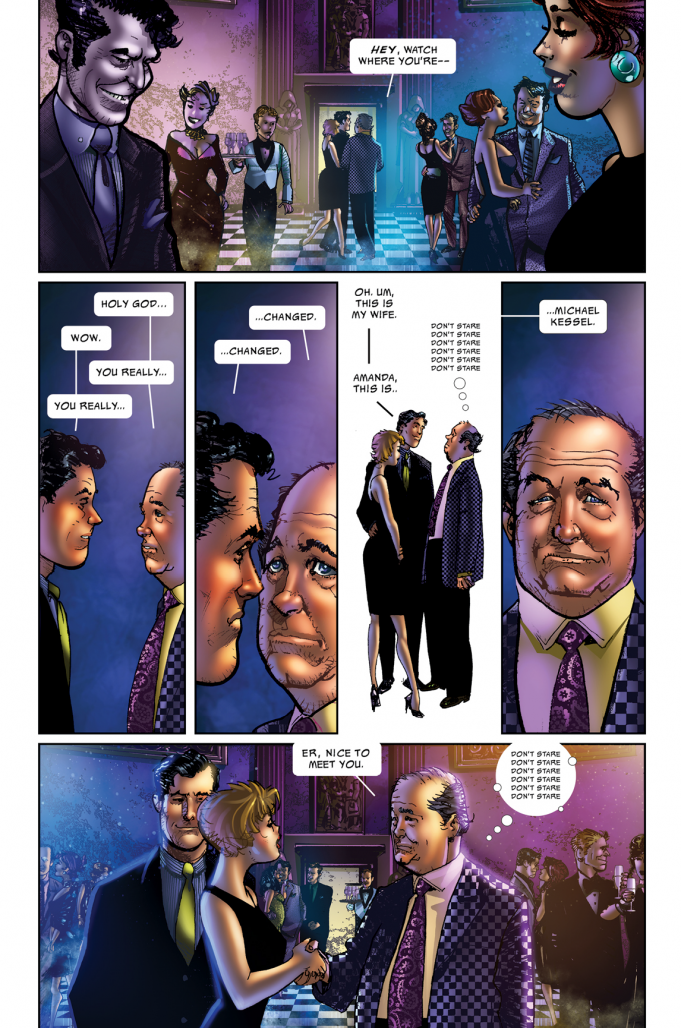
“We’re working on four different time zones, two or three continents, god knows how many countries,” says Schultz.“You’ll send an email off [and it] will be the end of the night, and then the next person who gets it is replying the equivalent of 2am for me.”
“It’s like herding cats,” says Esposito, laughing.
Additionally, the team had to make decisions regarding language and content for a young audience, without sacrificing the sometimes brutal realities depicted within the anthologies.
“That process was really illuminating,” says Christenson.“It was good to have those discussions and figure out how to strike that balance.”
Schultz says that the trade off to the chaos is “being introduced to creators who I wasn’t familiar with. And not just comic creators but people who work in different mediums as well coming on to write comics. That’s always great, getting to meet new people, getting exposed to different styles.”
For Esposito, the excitement from contributors helped fuel the process. “[Seeing] the enthusiasm from everybody but seeing these really established creators come on board—donating their time and artistic talent to do something like this—was really exciting for me.”
The third and last issue of RISE will release sometime late June or early July of this year. After that, the team hopes to see the project continue in any variety of ways—potentially a once-a-year anthology.
“I hope it takes on a life of its own,” says Schultz.
Blog: PW -The Beat (Login to Add to MyJacketFlap)
JacketFlap tags: Interviews, Cartoonists, Conventions, self-publishing, Indie Comics, michel fiffe, Top News, self-publication, HeroesCon, COPRA, heroescon 2015, Add a tag
Continuing on from our first entry this past Friday, here is the second part of my HeroesCon interview with Michel Fiffe, creator of the self-published and much lauded action-adventure comic, COPRA.
It’s funny, the way I discovered your work actually came through a friend of mine at first, as a word of mouth sort of thing. Then I firmly jumped in when Oliver Sava starting writing about it on the A.V. Club, and you ended making a ton of these “Best of 2014″ lists, which is pretty exciting right? That sort of vindication has to be rewarding.
It’s nice, it’s nice that people like it, absolutely. Oliver’s a great supporter.
Everyone wants to make a superlative list at some point, right?
Yeah, that means a lot to me personally, and it actually translates into more readers. I think word of mouth has really worked a lot on COPRA, without any huge marketing muscle behind it. That’s been the primary thing, people are just excited about it, and that’s super flattering. To like it so much – in today’s aggressive marketplace – that they spread the word out of genuine enthusiasm… what more could you want?
That’s literally what’s happening, though the only hurdle is, of course, availability.
That’s the only hurdle right now. Bergen Street Press has been working hard for a couple of years now to get over it. We don’t want to make it super exclusive, this isn’t a super limited boutique item by any means, but it’s also not as simple as pushing a magic button for books to suddenly appear. Others have that magic button.
When you made the collections, which have obviously been a great way to pull in readers, you went with Bergen Street Press, and that’s Tucker Stone’s outfit right?
Yeah, that’s Tom Adams and Tucker Stone, they’re co-owners of the store, Bergen Street Comics and they started publishing and putting out “compendium” collections of the issues early on because I started selling out of the issues. So they met that demand, they helped me meet that initial burst of enthusiasm. I was too caught up creating the next issue. My financial model is that one issue pays for the next, there’s no room for reprints, that’s not within my budget. Bergen really helped make it more available and more accessible to people. The compendiums led to an official collection, the current “Rounds” as they’re called, which collects six issues at a time. That’s the kind of thing that we’re trying to get into all the comic shops across the country.
It’s showing up in stores in Atlanta, and I even think I saw copies in the UK over Gosh Comics perhaps.
Yeah, we get a lot of orders from all over the world.
Did you just have a relationship with Tucker and Tom, is that why you went with them as the distributor and publisher and go-to guys?
I trust them and respect them, and I couldn’t happier with that specific team of players. Their point of view and their involvement with the comics industry is something I can get behind.
In regards to availability though, is digital not in the cards?
It’s not NOT in the cards, it’s just something I still have to manage and deal with. There are just so many issues with it, the platform, the way it looks, the time to get everything in order. I’m still dealing with the print issues, that’s a huge thing for me, just getting one of these out every four to six weeks. I barely have any time to do anything else BUT this issue. When it comes to digital, I want to be as hands-on as possible, and that’s a time sucker. I wouldn’t rule digital out, but at the moment it’s not a primary concern. Having said that, I don’t want to exclude anyone from reading it, I understand there’s a large portion of the readership that’s gone digital because its more convenient, but personally I haven’t related to that model. So, it’s not a priority. I don’t feel like it’s something that’s burning in me to address anytime soon.
But there is an argument you made yesterday (on a panel with Klaus Janson) about the visual of the comic as a physical object. When you go digital, you do lose that. I mean, you can put everyone of those pages, including the back cover and back matter into a digital copy, but it’s not the same.
It’s not the same, and I want to be clear that I don’t want to impose my fetish of the newsprint comic on anyone. But readers do have the option to buy the issues or NOT to buy them, and that’s the risk I take. I’m not forcing people nor am I trying to change the industry “back to the glory that it was”. I’m just doing this because it’s a model that I’m familiar with and I aesthetically like. It’s a much more intimate thing. I just don’t read that many digital comics. That’s not how I absorb this stuff. I would feel weird putting it out in the world if I’m not sure of it myself.
The comparison has been made, and COPRA has been compared very favorably to works like Cerebus, and that’s a comparison that I find to be really quite apt in that you’ve taken an analogous set of characters, like Dave Sim did with Conan the Barbarian, but by Round Three, you’ve expanded that world and its character set in a way not dissimilar from his work in “High Society”. Is that a comparison that you find interesting?
It is, mostly because Dave and I were born on the same day.
Really?
Yeah, so it just means we’re both stubborn and hard headed, and we’re gonna do what we want no matter what. But the COPRA/Cerebus thing… I imagine it’s more accurate than I’d like to think, but the main difference is that Cerebus started out as a parody. And my book…well, I personally fucking hate parody comics of that nature. I like Cerebus, but I especially mean modern indie takes on this sort of stuff. It’s low hanging fruit. You’re going to make fun of superheroes, good job, you’re wasting your precious time on earth doing that. Who cares? You’re not gonna outdo Marshal Law. I love that comic to death. There was a lot of anger behind that book, but it didn’t look down at anyone. Now, you either like superheroes or you don’t, and it’s perfectly fine to dislike it. In fact, you probably shouldn’t. I have zero interest in making fun of this stuff. From the first page of COPRA, it was serious business to me, serious business while fully realizing and basking in the absurd nature of this material.
That’s a difficult balance to achieve – seriousness without being overtly grim.
I just don’t want to wink at readers. I respect the readership too much to be winking at them – like, hey get the joke? Isn’t this DUMB? It’s like, fuck that joke, it’s a terrible joke. And I think Dave Sim wised up to it early on, because he was parodying Conan and the goofy barbarian genre, but then it took on a different identity all together.
 And I feel like that’s where you’re headed too. Round 3 is stunning, and I think when it hits a collected edition, I think there’s going to be a lot of talk. I don’t know how else to put it. I don’t want to speak too highly here, but I think that’s going to be when – people already notice it, but I mean, my god, that chapter when Wir goes back home…
And I feel like that’s where you’re headed too. Round 3 is stunning, and I think when it hits a collected edition, I think there’s going to be a lot of talk. I don’t know how else to put it. I don’t want to speak too highly here, but I think that’s going to be when – people already notice it, but I mean, my god, that chapter when Wir goes back home…
Yeah, that’s a favorite. I was worried about making that one too because it’s so bizarre, even within the norms of COPRA, you know?
It was so touching and so raw. It struck nerves for me. And then Gracie in Miami, and you’re working out some of your own feelings about the city and you even say as much on the back end.
Yeah. Every issue pretty much has at least one autobiographical component in it. And I find that interesting when I read older comics too, whether they meant it or not, I think it comes through. Especially for the older creators who really had no other option but to express themselves through The Brave and the Bold or something. But for me to actually write this stuff, I have to put some sort of personal experience in it. So every issue, there’s something there that’s really personal. But I also don’t want it to be too obvious, though.
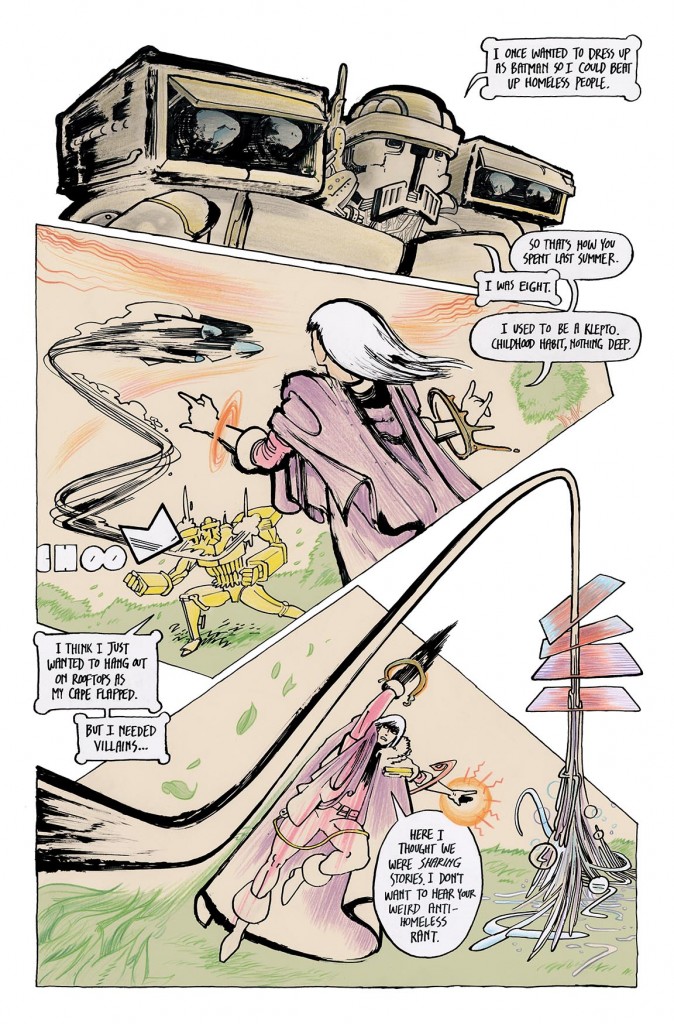 Let’s talk about Round Four or the presumed Round Four, about what’s coming up, what’s being developed. Spoiler alert: Dutch got it at the end of the latest issue. And clearly there’s another team that’s sort of gaining up on the COPRA side of things. At least that’s what it seems like. There’s an organized group of evil doers. What can we expect in the next couple of issues; I think there are two left in this round?
Let’s talk about Round Four or the presumed Round Four, about what’s coming up, what’s being developed. Spoiler alert: Dutch got it at the end of the latest issue. And clearly there’s another team that’s sort of gaining up on the COPRA side of things. At least that’s what it seems like. There’s an organized group of evil doers. What can we expect in the next couple of issues; I think there are two left in this round?
I have two left. And then I’m going to have a 25th issue anniversary-sized thing, that’s going to stand apart from the narrative, the main arc. And then starting with issue 26 that starts another arc all together. I’m going to work in six issue chunks, but there are going to be main storylines in that. I think I’m going to go up to fifty issues, so 25 will be an anniversary issue, as well as the halfway point.
So there will be an endpoint that’s set in stone?
Yes, I do have an ending set, I’ve mapped it out that far. I’m so excited for it. Knowing that it’s going to end and that everything is building up towards it makes every step of the way that much more fun for me, much richer.
So what can you tell me that we can expect in just very general terms, without spoiling anything, for the next two issues? Is it going to be a battle between the team and this group of guys that are coming after them?
It’s going to be COPRA vs COPRA. That’s all I’m going to say.
You’ve got two other narratives occurring in these books, you’ve got Dieter VDO’s back cover story for Man-Head…
Which is non-canonical.
Let me ask you how that got arranged first. Are you and Dieter friends?
Oh, I’m a big fan of his work. He did a Savage Dragon story for this collection of back ups I edited. This was ages ago. Anyway, Dieter… I like spreading the word on him. I think he’s great, one of my favorite cartoonists. I wanted to have unique back matter for this current arc and he was the first person I thought of to do something. Instead of pin ups, though, I wanted a serialized narrative. Thankfully he was on board. His own weird version of COPRA? Who wouldn’t want to see that?
So what is going on between your narrative and his narrative in these orange and white pages? There’s something appearing in the sky…?
When can we expect the next issue to hit?
Maybe 4 weeks, a month? After the show I’ve to get back to drawing it. I’m not really ahead, schedule-wise. As soon as the issue is done, it’s practically in the readers’ hands.
You can purchase recent issues of COPRA at Michel Fiffe and Kat Roberts’ Etsy store. While Bergen Street Press is currently sold out of both collected editions of the series, you can purchase the first collection at InStockTrades.
Blog: PW -The Beat (Login to Add to MyJacketFlap)
JacketFlap tags: Kickstarter, Indie Comics, Top News, Crowdfunding, the standard, ComixTribe, tyler james, Add a tag
Independent publisher ComixTribe has been steadily growing their presence in the direct market, on Kickstarter and especially on the web. ComixTribe.com is a site that’s used not just to promote their products but also to give advice to inspiring and up-and-coming creators. I spoke to Tyler James, the publisher of ComixTribe, about building a reputation in the industry, getting sales and the publisher’s latest Kickstarter campaign for graphic novel The Standard.
How’s the experience been so far Kickstarting The Standard?
The Standard Ultimate Collection Kickstarter is going great!
It’s a tremendous feeling to launch a Kickstarter, send an email, and then 36 hours later, get the printing for an expensive hardcover fully funded… and to do so without any major media coverage or heavy advertising.
That’s a testament to what ComixTribe has been building over the past four years and where we’re headed. And it’s validation for the extraordinary work of writer John Lees, artist Jonathan Rector, and the rest of THE STANDARD team.
This is not my first Kickstarter rodeo, rather it’s the sixth Kickstarter campaign I’ve actively managed. While the platform continues to change and evolve and add new features and wrinkles, the core of what works and what doesn’t hasn’t changed since our first successful campaign in 2012.
I hear a lot of creators talk about how stressful and nerve-wracking Kickstarters are… and they certainly can be. But I prefer to look at them like a month-long online comic book convention and an opportunity to build a deeper relationships with new and long-time fans. When you frame it like that, the stress melts away and you can have fun with it.
The Standard bears, at least on a surface level, a lot of resemblance to Mark Waid’s Thrillbent comic Insufferable. Was that a concern as you plunged into this Kickstarter campaign?
No disrespect to Mr. Waid, who is one of my favorite writers in all of comics, but when John and Jon first started working on THE STANDARD, he still had his comic book collection! So, any resemblance to Insufferable can be chalked up to coincidence and pulling from the same ideaspace that lifelong superhero fans such as Mark and John will draw on.
The fact that his has been a project long in the making is one of the things that’s so rewarding about this process. While some people (Lees included) were shocked at how fast we were able to get THE STANDARD funded, that 36 hours was really six long years in the making.
Marvel and DC, with their double shipping and weekly series, and the direct market in general, which is built on a monthly release schedule, shape the expectations of readers to think that comics take only a few weeks to make.
And while that may be true for well-compensated professionals working for fully-staffed companies that have been around for seventy years, it’s just not feasible in the indie world.
THE STANDARD was John Lees’ very first comic book… he was literally learning how to write comics as he wrote the series.
As John says in his Kickstarter video, when he first got started on this project, he wasn’t thinking about whether he had a marketable high concept, or whether it was going to sell, or whether there were other books out there like it. At that time, he didn’t know enough about the industry to even think if he should be thinking about that stuff!
Rather, John was thinking that this might very well be the only comic he’d ever make… so why not tell the one story he wanted to tell more than anything else in the world? And why not fill it up with everything he loves about comics – heroism, horror, mystery, romance, heartbreak, innocence lost, and yes, just the right amount of superhero cheese.
Josh Fialkov (The Bunker, Echoes) was gracious enough to write the foreword for AND THEN EMILY WAS GONE, John’s break out horror series from last year. In it, he talked (lovingly) about picking up EMILY #1 and “wanting to punch John in the face” for seemingly coming out of nowhere being so damn good.
What’s great about John’s work and THE STANDARD in particular is that it’s really not trading on a super original, ironic, hip high-concept. There have been plenty of meta superhero deconstruction tales before THE STANDARD and there will be many more to come. You mentioned Insufferable, but I’d actually point to Waid’s Kingdom Come as being a little closer thematically to THE STANDARD.
But it’s not about theme or high-concept. To paraphrase True Detective, “It’s all one story, man. Light and Dark.” What’s brilliant about THE STANDARD is its execution. There’s craft and love for the medium of comics gushing out of every page.
John is going to need a bodyguard when Fialkov realizes this was the first comic John ever wrote!
So, no, to your question. We had a few concerns about launching the Kickstarter, but none of them were about the content itself. This series is rock solid.
My main concern was juggling both the Kickstarter and also at the same time promoting the direct market launch of OXYMORON: The Loveliest Nightmare, our next series launching in August.
I don’t want to ask too many questions about crowdfunding, because you cover the subject so well on ComixTribe.com, but I have to ask a couple. One is: what’s a Kickstarter that impressed you recently, and how did it impress you?
That’s a great question, and I’m always trying to study successful campaigns so I can later model things they do well on the ones I run.
Last month’s Archie Kickstarter campaign was a big story, and many people looked at that campaign scoffing at the lofty sum of $350,000 they were trying to raise for new projects as way too much money and a ridiculous, some might say “greedy”, goal.
Meanwhile, at the same time on Kickstarter, Tim Buckley “quietly” blew past the $350K mark for a reprint of his webcomic CTRL+ALT+DEL in just a few days, later going on to raise more than $665K.
So what continues to impress me about Kickstarter is that, of all platforms available to creators – the direct market, Comixology, Amazon, conventions — Kickstarter is easily the most level playing field.
Individual creators can be more successful than 70 year old publishers on Kickstarter.
While the big numbers of some of these crazy campaigns do catch my eye, the thing I love most about the platform and what impresses me most are the guys and girls going out there and launching their first campaign and succeeding.
Guys like Bill Walko who now gets to make a quality trade collection of his great webcomic Hero Business, or Kristi McDowell whose very first comic Gamer Girl & Vixen got funded.
The numbers don’t matter. I guarantee you, Tim Buckley was no more excited (and perhaps less so) by his $666K than Kristi was about her $7K.
So, yeah, I’m impressed by people who do their homework, run great campaigns, and then fulfill them.
As a side note, the most impressive Kickstarter I’ve ever backed was John August’s Writer Emergency Pack Kickstarter… because of its massive success and because he had his act together, John was able to get rewards out to backers a few weeks after the campaign ended, months earlier than promised. THAT was impressive, and one of the biggest tips I have for creators going to Kickstarter is under promise and over deliver.
What kinds of new lessons are you still learning with each crowdfunding campaign?
So much! The platform is ever evolving. Back in 2012, not only did you have to sell your product, but you had to sell the concept of the platform of Kickstarter itself, and educate potential backers on how it all works. It’s nice not to have to do so much of that anymore, as Kickstarter has slipped more into the mainstream consciousness.
But there are still things I’m learning and working on. “Cracking the code” of the “Kickstarter Deadzone”… that period in the middle of a campaign where pledges and momentum stalls after a big open and before a huge close… that’s something I’m still working on.
Another thing I’m excited about is a new podcast I’ll be debuting next month called ComixLaunch: Crowdfunding Your Comics and Graphic Novels on Kickstarter…and Beyond! I get asked about Kickstarter more than just about anything else, and the articles on Kickstarter are the most read things on ComixTribe.com. So, I’m hoping to dive deeper with a weekly podcast laser focused on this stuff, and hopefully provide a lot of value.
Right now, more than half of all comic book Kickstarter projects fail. I know how much ink, sweat, and tears goes into creating comics and then running a campaign, so those stats are gutting to me.
But I’m very optimistic that ComixLaunch can help improve those numbers. I’ve had dozens of creators personally thank me for the Kickstarter resources I’ve posted on ComixTribe.com, and I’ll be able to go even more in-depth on the pod. Also worth noting, backers of THE STANDARD Kickstarter will be treated to an advanced listen of the first episode of the podcast.
On a practical level, is the purpose of the ComixTribe website, which features as much new content as most comics news websites, primarily to drive sales of your comics?
One of my favorite quotes is by Zig Zigler, who famously said, “You can have everything in life you want, if you will just help enough other people get what they want.” Success in business (and life) is directly correlated to the amount of value you bring to the world. So I get up every day trying to think about how I can best serve the comics community. The natural by-product of that is growth for ComixTribe. It is the epitome of a win win.
Now, when Steve Forbes (affable curmudgeon and ComixTribe Editor-In-Chief) and I first started ComixTribe on 1-1-2011, we didn’t have any comics to sell! We were both writing content for other people’s sites and decided to join forces and launch our own. We both have the heart (and in my case, the background and expensive degrees) of a teacher, and really do love helping other creators make better comics.
In fact, THE STANDARD is a true ComixTribe success story, as it was Steven Forbes who helped John Lees shape his rough concept into the polished gem it is today. Let that be a lesson to all you new writers out there… if you want to increase the odds that your first comic book project is publishable, HIRE AN EDITOR!
After you figure out the basics of this comics game, every creator and every small publisher should devote considerable effort into picking their edges. By that I mean figuring out what makes them unique? Why should anyone give a damn? What do they want to be known for?
Opening the ComixTribe kimono, so to speak, and being transparent about our successes, lessons learned, struggles and triumphs in the form of articles on ComixTribe.com has definitely helped distinguish us from other small comics publishers out there.
At the same time, as we’ve grown, and really expanded our titles, it’s been tough to balance serving both creators who are interested in our advice and readers who love our books. While there is certainly some overlap between the two audiences, and our peers are also some of our biggest supporters, it is a challenge to be viewed as both an imprint and a web resource.
But my purpose in life is to educate and to entertain, so I’ll likely always have a toe in both pools.
Have you considered adding revenue streams like advertising or sponsorships?
Adding revenue streams has been a core focus of ComixTribe over the past few years, and is certainly one of my primary focuses this year.
Here’s a little infographic showing where the ComixTribe revenue comes from, and when we’ve added those streams to our business, and relatively how important those streams are to our business right now.
If we had to rely on any one of those streams, we’d be dead in the water. The magic is in diversification.
Over the past couple months, I’ve been making a concerted effort to look for new partnerships, whether that be advertising, sponsorships, or affiliates that can bring value to our readers.
I spend at least ten minutes every day thinking of at least ten new ideas… ideas on everything from ways to sell more comics, to creators I want to work with, to things I love about my wife, to ideas for new lists of ideas… the list itself isn’t so important. The important thing is exorcising that idea muscle.
That practice is training me to see connections and solve problems more instinctively than before… granted most of the ideas I come up with are ridiculous and wrong for me. But it only takes a couple gems to make a significant difference in life and business.
So, yes, we’re adding new revenue streams and always looking for new potential partners, and you’ll see some of those come to life in the near future.
What are your other priorities?
Right now, ComixTribe’s top focus is readership growth.
That means increasing our direct connection with readers and the best way to do that is to get our books into readers’ hands.
Free Comic Book Day 2015 was a huge win for us. We increased our reader email subscribers by about 50% thanks to the 50,000 copies of AND THEN EMILY WAS GONE #0 that were given out.
And everyone who subscribes to our list gets hooked up with the first issue of our five top titles, so that’s really our single best play to turn strangers into raving fans.
But readers aren’t enough… increasing the number of retailers carrying our books is also one of my top priorities.
I’ve set a goal to double our direct market sales for our next series OXYMORON: The Loveliest Nightmare from our previous best seller. And I’ve already committed to a print run that’s double what we printed for EMILY #1, even prior to getting our Diamond orders… so the boats have been burned, there’s no turning back, now!
Most of the comics put out by ComixTribe are about superheroes. Do you think that will change given that And Then Emily Was Gone, arguably Comixtribe’s biggest success, wasn’t?
It’s true that the first four titles we introduced to the market were all superhero books, or at least twists on the superhero genre. Joe Mulvey’s SCAM for example, is a capes books where the capes were replaced with conman capers.
But I think it’s important not to confuse where ComixTribe chose to start, with where we’re going. Let’s remember that Image Comics, widely regarded as one of the most diverse and respected publishers today, started exclusively with superhero books.
And there’s a reason for that, right? Most creators were initially drawn to the medium by superheroes. Tracing cool panels featuring Spider-man at eight years old was my gateway into drawing my own comics.
When I first approached artist Cesar Feliciano about collaborating, I pitched him five different concepts… but he was most interested in doing THE RED TEN, a team superhero book, something he’d always dreamed of doing. (And that was the one I was hoping he’d dig as well.)
One of the great things about ComixTribe is that all the books we publish are, first and foremost, books we ourselves want to read.
And at 36 years old, I’m still not ashamed to say I love a good superhero yarn.
That said, I haven’t greenlit a new superhero project under the ComixTribe banner in a couple years now, and would have to have my socks blown off by a pitch to do so.
The new OXYMORON series actually takes the character who debuted in THE RED TEN, and strips away any and all superhero trappings. The high concept for the series that’s been generating a lot of buzz is asking readers to “Imagine The Joker came to a Gotham WITHOUT Batman.” So, this series is more police procedural and cerebral horror thriller than anything else.
Likewise, we’ve got EXIT GENERATION from Sam Read and Caio Oliveira, a previously self-published gem from the UK, which is an all-ages sci-fi book with a punk rock ethos coming out later this fall.
Joe Mulvey’s next series, CounterTERROR, which we are soft-launching at the 2015 Boston Comic Con, is a political thriller mashed up with a paranormal action popcorn flick. Think “What if Jack Bauer was a Ghostbuster?”
And I fully expect Ryan K Lindsay (Negative Space, Headspace) and Sami Kivelä’s unannounced new surf noir book to raise the bar for ComixTribe again in 2016.
We also have a couple new anthology projects I’m very excited about coming up that take us into new exciting new genres.
In short, we unabashedly love superhero comics at ComixTribe, but we’re about a lot more than spandex.
Do you have aspirations to work with publishers other than ComixTribe?
I think most people who make comics would be lying if they told you they didn’t want the opportunity to work on the icons and make a contribution to the great comic book universes that they grew up loving.
Every creator has a Spidey story, or a Batman story, or I don’t know, a Howard the Duck tale, they’d love the opportunity to tell.
For me, it was Image Comics that really ignited my passion for creating comics, so having a book with an Image “i” on the cover has long been a goal for me. (You can listen to me fanboy gush over Erik Larsen when he was a guest on the Final Issue Podcast.)
So, sure, if given the right opportunity, I’d jump at the chance to work with legendary publishers.
But that’s not the endgame for me.
It’s an interesting time in comics. Marvel and DC, they have great talent working for them, sure. But the absolute best talent in comics are no longer found there… or at least no longer found EXCLUSIVELY there. Millar, BKV, Staples, Kirkman, Adlard, Ottley, Brubaker, Phillips… the cream of the crop all realized that the ceiling at the Big Two was far too low for their talents.
And that’s a great thing, I think, for the industry, and for comics in general.
How do you plan on continuing to grow ComixTribe?
One reader, shop, and creator at a time.
I sold my first comic at age 14 out of my backpack in school. (9 copies sold at a $1 a piece!)
Since then, ComixTribe has managed to get more than 200,000 copies of books printed and out there into the world. (Sorry, trees!) And as crazy as that number is to me, it still means we’re just a guppy in the comics industry ocean.
Still, ComixTribe has doubled its revenue every year for the past four years.
We are poised to double again this year, as long as we continue to execute.
It’s been a long, hard road to get here… a barely profitable, low six-figure business, that reinvests 100% of profits back into itself.
But it’s still early days for us. We’re maybe on mile two of our comics marathon.
And I see the roadmap…
I know exactly what we need to do to take ComixTribe to a somewhat profitable seven-figure business, and beyond.
(This is the part where I knock on wood… and remind myself of the danger of “best laid plans” and that I could be hit by a bus or a falling anvil at any moment.)
But it’s not rocket science. And it’s not all that complicated…
The closest thing I have to a success formula goes something like this: P + A + I + N + T = S
Passion + Action + Integrity + a Network + Talent = Success.
I firmly believe that if you have all of those ingredients, the only variable in your success is TIME.
Because the truth is, those ingredients, even when found in copious amounts, do take a while to cook.
And if you’re not currently as successful as you want to be… you may be lacking one or more of those elements, and that is where you should be putting your focus.
We need a new name for it because “The Golden Age” is taken… but these are the halcyon days for being a comic book creator.
Over the next few years, we’re going to get a million ComixTribe comics into readers’ hands.
We’re going to continue to add tremendous value to the comic creator community, through continuing the awesome free content on ComixTribe.com, and through podcasts and other educational products and ventures.
And we’re going to work directly with at least one hundred creators, and help a bunch of them break into the direct market for the first time.
How is ComixTribe going to do all this?
Well, I’ve got a plan, but I’m nimble, and will be figuring it out as I go along.
And you can be sure I’ll be doing it transparently and in plain sight, as I’ve done from ComixTribe’s inception…
So, just watch.
MATT CHATS is a weekly interview series with a person of prominence and/or value in the comic book industry. Find its author, Matt O’Keefe, on Twitter and Tumblr. Email him with questions, comments, complaints and/or suggestions praise at [email protected].
Blog: PW -The Beat (Login to Add to MyJacketFlap)
JacketFlap tags: Farel Dalrymple, theo ellsworth, Indie Comics, Secret Acres, Top News, MK Reed, Add a tag
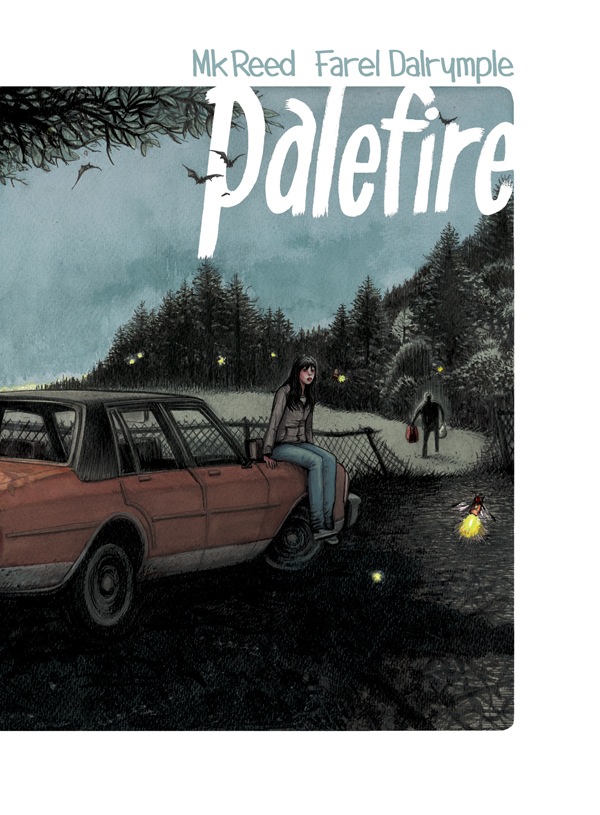
Brooklyn based indie Secret Acres has just announced a couple of new projects and one of them is like an alt.comix supergroup: MK Reed (Cute Girl Manifesto, Americus) will write and Farel Dalrymple (The Wrenchies, Omega the Unknown) will draw Palefire, due out this September, a fiery story set in high school that sounds like the perfect comics YA novel:
In the small town world of Palefire, everyone knows everybody and everyone hates Dwayne, the firebug, the bad boy trouble follows everywhere. Good girl Alison finds a warmth to Dwayne, a spark everyone’s missing. Can Alison play with fire without getting burned?
Hope Larson, author of Chiggers and illustrator of A Wrinkle in Time: The Graphic Novel calls Palefire:
“Gorgeous and moving. Dalrymple’s cartooning sings, and Reed has the best ear for dialogue in comics.”
Reed has been quietly building a powerful body of work as a writer and cartoonist and Dalrymple’s work on The Wrenchies last year was spectacular. I can’t wait to see what they do together.
The duo will promote the book at the Small Press Expo. I’m sold.
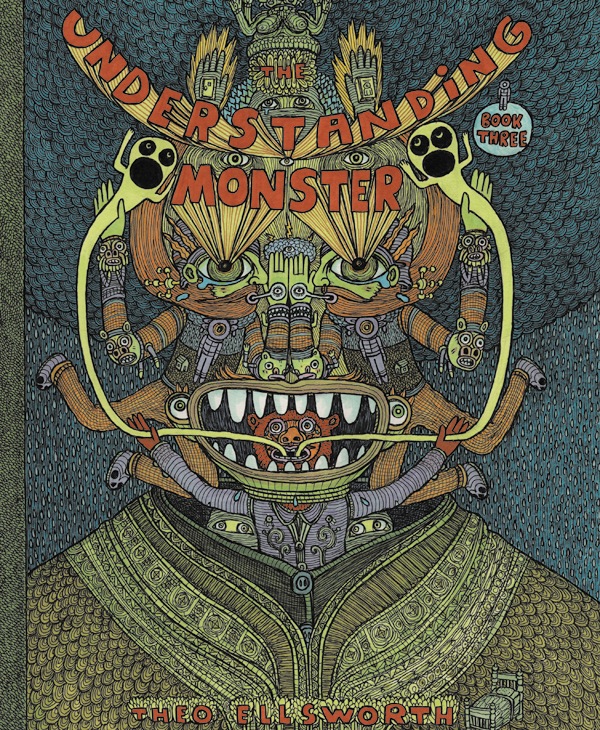
Secret Acres is also releasing two from Theo Ellsworth: Understanding Monster – Book Three and a new edition of the long sold out Capacity.
The first book of the Understanding Monster trilogy was both a Best American Comics 2014 selection and a Lynd Ward Prize Honor Book. IN book Three the story winds up.
In the Understanding Monster – Book Three, our hero, Izadore, awakes to find his mind, body and soul reunited. The last Monks of the Imaginary Man lead him on a journey beyond Toy Mountain to discover the true nature of the relationship between creativity and reality.
Adding to the excitement, Theo Ellsworth’s classic, Capacity, will be re-released alongside the Understanding Monster Book Three. Returning for a third printing in a deluxe and unique stitched, softcover binding, a limited quantity of this new edition of Capacity will include a signed and numbered artist plate tipped into the book.
Counted among the best books of its original publication year by the Chicago Tribune, the Village Voice and theHuffington Post among many others, Capacity is part autobiography, part mythology and totally beautiful. Just try to remember: this all really happpened!
Sold once again!
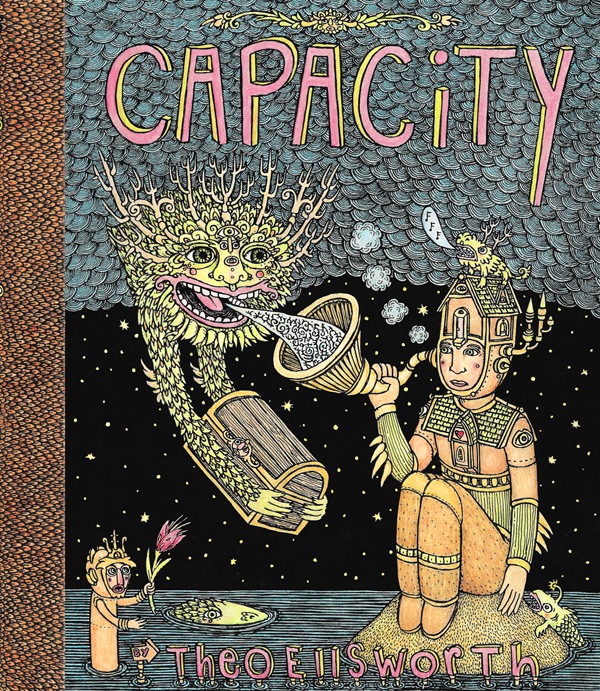
Blog: PW -The Beat (Login to Add to MyJacketFlap)
JacketFlap tags: Graphic Novels, HYPE!, Cleveland, Harvey Pekar, Indie Comics, Top News, joseph remnant, Sean Von Gorman, z2 comics, ASHES: A FIREFIGHTER’S TALE, Joey Esposito, Karl Slominski, Koren Shadmi, Mario Candelaria, PAWN SHOP, the abaddon, Add a tag
Z2 Comics just made news last week with a new line of periodicals, and here’s their fall graphic novel line, courtesy of Publishers Weekly. The slate includes a collection of Koren Shadmi’s awesome webcomic THE ABADDON, as well as a new edition of Cleveland by Harvey Pekar and Joseph Remnent, and print editions of two Kickstarted projects: ASHES: A FIREFIGHTER’S TALE by Mario Candelaria and Karl Slominski; and PAWN SHOP by Joey Esposito and Sean Von Gorman.
“With the addition of three new books to Z2 Comics, the return of Harvey Pekar’s CLEVELAND to print and the recently announced launch of the Z2 Comics periodical line, this year promises to be our most ambitious yet. And it’s just the beginning,’ said publisher Josh Frankel.
The Eisner-nominated Cleveland was previously distributed by Top Shelf, but has sold out of its 10,000 copy initial print run, Frankel told PW.
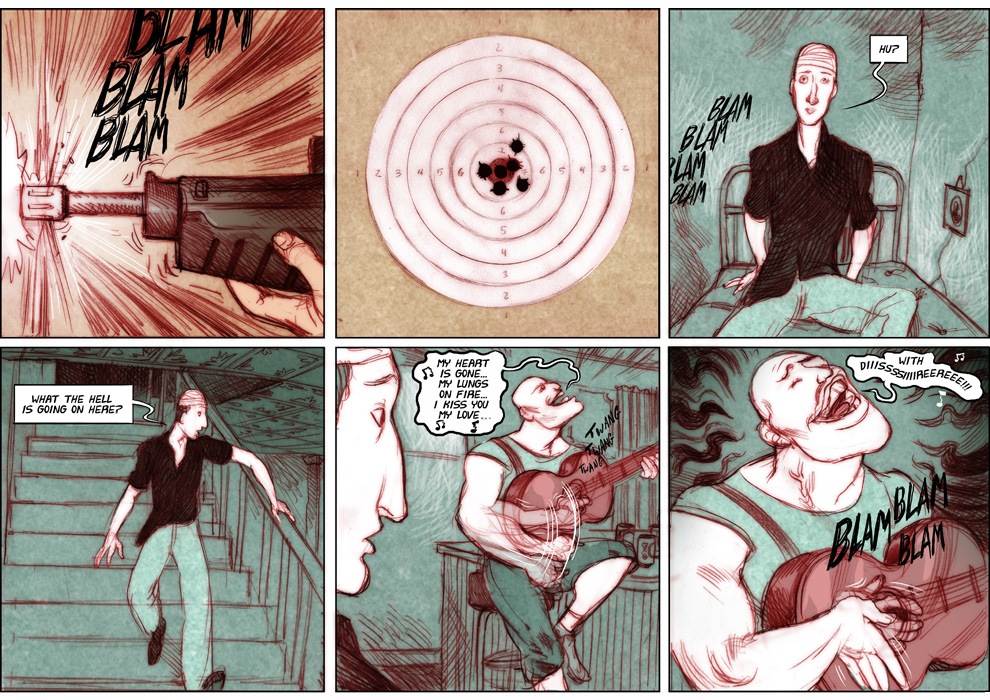
We’ve admired The Abaddon (above) here at the Beat many times before; it’s gorgeous and getting it in a nice print edition is a real treat.
Here’s the full Z2 line-up:
ASHES: A FIREFIGHTER’S TALE written by Mario Candelaria with art by Karl Slominski.
(September 22, 2015; $19.99; 120 pages; black and white)Matt always had an easygoing life. Girls liked him, his friends were more like family, and being a firefighter came naturally. Then the accident happened. Now, after the loss of his leg, Matt struggles to cope with his new handicap as he attempts to rebuild his shattered family and once budding career. A riveting tale about perseverance, hard work, and overcoming the odds, ASHES is a gripping tale told in stunning black and white.
PAWN SHOP written by Joey Esposito with art by Sean Von Gorman
(September 22, 2015; $19.99; 120 pages; full color)A widower. A nurse. A punk. A Long Island Railroad employee. New York City is an ecosystem where everybody is connected, if only by the streets they walk on. This original graphic novel is the story of four people, in a city of eight million, whose lives unknowingly intersect through a Manhattan pawn shop.
Written by Joey Esposito (Footprints) and illustrated with a gorgeous mixture of watercolor and digital elements by Sean Von Gorman (Toe Tag Riot), PAWN SHOP explores the big things that separate us and the little moments that inexplicably unite us.
THE ABADDON written and illustrated by Koren Shadmi
(November 10, 2015; $24.99; 240 pages; full color)Loosely based on Jean-Paul Sartre’s play No Exit, THE ABADDON is the story of a young man who finds himself trapped in a bizarre apartment with a group of ill-matched roommates. He discovers that his new home doesn’t adhere to any rational laws of nature and comes to realize that everyone living in the apartment is missing crucial parts of their memories and identities.
CLEVELAND by Harvey Pekar and Joseph Remnant
(November DATE TK; Price TK; 128; black and white)A lifelong resident of Cleveland, Ohio, Harvey Pekar (1939-2010) pioneered autobiographical comics, mining the mundane for magic since 1976 in his critically acclaimed series American Splendor. Legendary comic book writer Harvey Pekar’s collaboration with artist Joseph Remnant, titled CLEVELAND, was originally published by Top Shelf Shelf Comics and Zip Comics in 2012 and includes an introduction by Alan Moore. The book presents key moments and characters from the city’s history, intertwined with Harvey’s own ups and downs, as relayed to us by Our Man and meticulously researched and rendered by artist Joseph Remnant. At once a history of Cleveland and a portrait of Harvey, it’s a tribute to the ordinary greatness of both.
Disclosure: Just to be upfront, Z2 and The Beat have partnered on several events in the past, and they are an occasional client of my consulting company.
Blog: PW -The Beat (Login to Add to MyJacketFlap)
JacketFlap tags: Indie Comics, Top News, z2 comics, josh frankel, chris hunt, Gabe Koplowitz, ian mcginty, Miguel Porto, Will Tracy, Add a tag
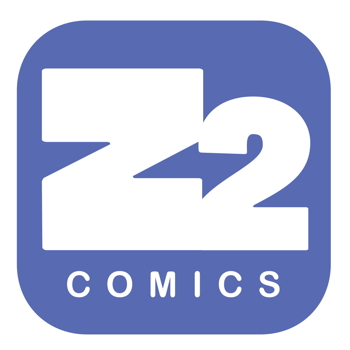 Z2 Comics, best known for publishing the graphic novels Escapo, Fear my Dear, Cleveland and Henni, is getting into the periodical business with three new titles. The announcement was made in the Washington Post where publishing Josh Frankel expanded on his plans noting, “There’s no house style, but these days there’s no need for a house style,” he said. “There’s a diverse audience of readers out there waiting to discover the next big thing in comics. We think this could be it. ”
Z2 Comics, best known for publishing the graphic novels Escapo, Fear my Dear, Cleveland and Henni, is getting into the periodical business with three new titles. The announcement was made in the Washington Post where publishing Josh Frankel expanded on his plans noting, “There’s no house style, but these days there’s no need for a house style,” he said. “There’s a diverse audience of readers out there waiting to discover the next big thing in comics. We think this could be it. ”
“Being able to offer readers new stories from incredibly talented creators is really gratifying, and will also help Z2 Comics continue to grow,” Frankel told The Post’s Comic Riffs. “Serializing comic books is a great model for a smaller publisher, allowing us to pay all the artists and writers a livable page rate for their creator-owned comic books, which helps me sleep at night.”
“As a publisher, our job is to find ways to get our stories into the hands of readers, across multiple platforms, working closely with our distribution partners,” Frankel said. “There’s so much excitement for comic books right now, and comics readers are more diverse than ever before. It’s the perfect time to launch three equally diverse titles.”
The addition of a new creator owned line of periodicals s a pretty bold move in today’s market, but as we just pointed out, this industry needs more options.
Here’s the full line-up, with an exclusive look at the Welcome to Showside cover:
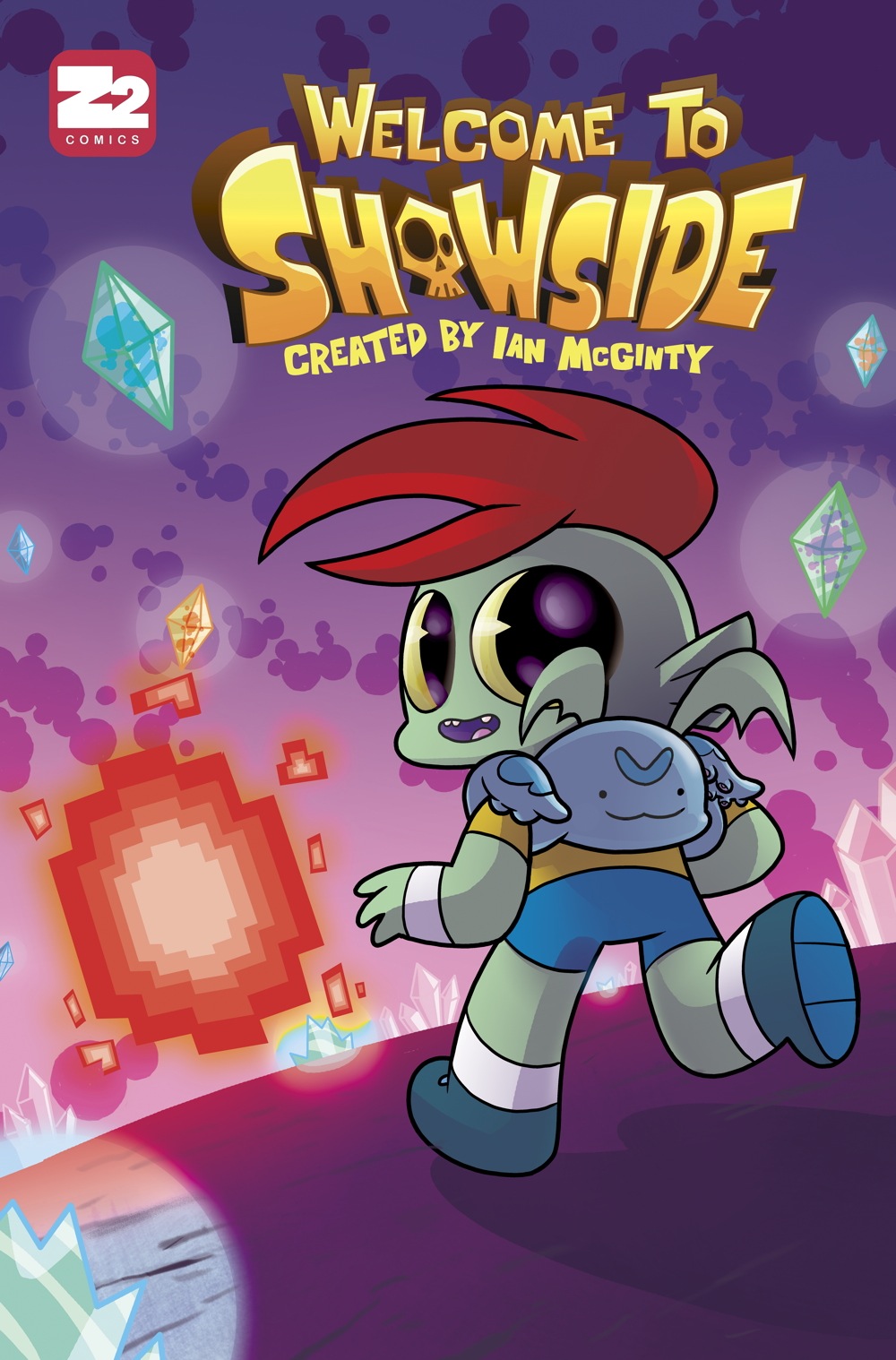
WELCOME TO SHOWSIDE by Ian McGinty
October, 2015
Following his stint as artist on the BRAVEST WARRIORS comic book, Ian McGinty will publish his creator owned debut as a writer/artist with Z2 Comics. WELCOME TO SHOWSIDE features the adventures of Kit, a lovable kid with a monstrous secret: his dad is the Great Shadow King and he wants Kit to take over the family business of destroying the world.“Kit is a fun-loving dude who wishes he didn’t have a care in the world,” said Ian McGinty. “But as much as he wants to skateboard, eat rad food, and hang with his buds like any kid would, well, his father is the Shadow King, Ruler of the Nexus, and that means sometimes Kit and his friends have to defend the town of Showside from ghosts, demons and monsters.”
CARVER by Chris Hunt
November, 2015
After an absence of five years, globe trotting and notorious gentleman of fortune Francis Carver returns to Paris in 1923. He has come back to aid Catherine Ayers, the wife of a wealthy Parisian socialite and the only woman he has ever loved. Her daughter has been kidnapped by the leader of a crazed anarchist gang, a man named Stacker Lee. In order to bring the girl home, Francis will have to crawl through the underbelly of the city while confronting the demons of his past, before being faced with a final choice: succumb to the man he has become, or take that mask off and be the hero he always wanted to be.“CARVER is my homage to CORTO MALTESE,” said Chris Hunt, “I’m bringing a modern edge and sensibility to classic, serialized adventure storytelling, starting with the first storyline CARVER: A PARIS STORY.”
ALLEN: SON OF HELLCOCK by Will Tracy, Gabe Koplowitz, Miguel Porto
December, 2015
Allen is cowardly, directionless, and less physically menacing than a daffodil. He’s also the only son of the mightiest hero ever to plunge his sword hilt-deep into the dark heart of evil… the mighty HELLCOCK! Enjoy the ride as Allen is thrust sword-first into a not-so-classic fantasy quest that, frankly, he would rather just sit out. ALLEN: SON OF HELLCOCK is the comic book debut of Last Week Tonight with John Oliver writer Will Tracy, co-writer Gabe Koplowitz and artist Miguel Porto.“ALLEN: SON OF HELLCOCK has it all: washed-up sorcerers and swordsmen, terrifying horse-donkeys, sensitive ogres, fashionable elves, ornery minotaur landlords, an exceedingly polite retired despot, a black-hearted but oddly lovable villain, and an idealistic young woman who’s the only one with any brains,” said Will Tracy.
“Uh, don’t forget Allen,” said Gabe Koplowitz.
“Did you mention the horrid horse-donkeys already? Oh god… the horse-donkeys…” said Miguel Porto.
the boutique graphic novel publisher of acclaimed graphic novels by Paul Pope, Harvey Pekar, Dean Haspiel and Miss Lasko-Gross, announced today a new line of creator owned periodical comic books. The New York-based company will launch its periodical line in the fall of 2015 with three dynamic titles: the first creator owned comic book by BRAVEST WARRIORS comic book artist Ian McGinty, an international adventure caper by Paul Pope’s protege Chris Hunt, and the comic book debut by Last Week Tonight with John Oliver writer Will Tracy and co-writer Gabe Koplowitz. All Z2 Comics standard periodicals will be 32 pages and priced at $3.99; they will be distributed at comic book stores nationwide via Diamond and will be available digitally via ComiXology.
“There’s no house style to Z2 Comics, because our comics are spectacularly diverse,” said Z2 Comics Publisher Josh Frankel. “We have an all ages comic book chock full of demons and monsters about the eternal tension between a slacker son and his ambitious father who literally wants to take over the universe. There’s a world trotting caper full of sex, intrigue and adventure. And then there’s a hilarious fantasy story about an aspiring cartoonist who must avenge his father’s death.”
“Z2 Comics are wildly eclectic,” said Frankel. “What does a graphic novel from Paul Pope, Dean Haspiel or Miss Lasko Gross have in common with the periodicals announced today? They are exceptional works from exceptional creators and comics you’ll want to read.”
ABOUT THE CREATORS:
Ian McGinty is an American artist, writer and designer based in Savannah, Georgia. He is the artist on the comic book adaptation of Pendleton Ward’s BRAVEST WARRIORS and MUNCHKIN for Boom! Studios. He is the creator of Top Shelf’s upcoming graphic novel, CHOMP! and co-creator of Frederator Books’ ROBERTO ROBERTO. Ian has previously worked on ADVENTURE TIME: CANDY CAPERS (Boom! Studios), WHICH WAY, DUDE? (Penguin), STEVEN UNIVERSE (KaBOOM!), BEE & PUPPETCAT, UGLYDOLL books (Viz Media) and the Eisner nominated HELLO KITTY books (Viz Media).
Chris Hunt is an American cartoonist born in Columbus, Ohio, and raised in Boise, Idaho. Never formally educated, Hunt developed his talents mostly through self-directed study, and the generous guidance of his friend and mentor, Paul Pope, whose comics Chris was inspired by at a young age. He worked on the Ghostface Killah comic 12 REASONS TO DIE for Black Mask, and has also done artwork for IDW Comics, Vertigo and ZIP Comics and film and music industry work for AMC, Biz3 Mgmt, Tribeca Film and the Universal Music Group. In 2010, Hunt was invited to study as a resident artist at the Atlantic Center for The Arts, under Master Artist Paul Pope. Hunt is currently working on CARVER: A PARIS STORY, which expands the story of Francis Carver, the gentleman of fortune that premiered in Hunt’s self published VOLUME ONE.
Will Tracy is a writer for HBO’s Last Week Tonight with John Oliver and the former Editor in Chief of The Onion, America’s Finest News Source. He lives in Brooklyn.
Gabe Koplowitz is a writer/director who makes promos at VH1. Originally from San Francisco, he developed a love for comics by stealing his brother’s copies of GROO THE WANDERER at a young age. He lives in Brooklyn.
Miguel Porto is a cartoonist, and illustrator living in Vigo, Spain. He has worked for Redbook, El País, Mongolia, done posters for music groups (Foot Village’s European tour), and covers (the spanish edition of LORD OF CHAOS), but mostly he spends his days doing educational books and teaching drawing and color. He likes forests, ghosts, and owns two cats named Olive and Munchausen, and has enough scars to prove it.
Blog: PW -The Beat (Login to Add to MyJacketFlap)
JacketFlap tags: Comics, Indie Comics, out of the blue, Corey Fryia, Stache Publishing, Add a tag
Out of the Blue is a comics anthology published by Stache Publishing in 2014 that has left readers wanting more. The first volume collected some fine stories under the umbrella theme of strangeness. Now, Stache is back for a second round with Out of the Blue: Volume Two. This volume will be horror themed and the stories will have a scary slant with twist endings. Stache Publishing has announced a call for short works to populate the anthology and preference will be given to works and creators with no previous publication.
Having an anthology championed by a supportive small publisher allows contributors to have their work made available through both the online marketplace and in print, as well as directly to fans at conventions and local comics shops. To find out what is up with this anthology we spoke with Corey Fryia, who is returning as an editor on the book.
Seth Ferranti: What is Out of the Blue about?
Corey Fryia: Last year we partnered with Statche Publishing to produce Out of the Blue: A Collection of Strange Stories. As the title would lead you believe, this book was an unusual assortment of thirteen strange stories that transcend the ordinary. Contributors included New York Times bestselling comic creators, winners of the Eisner and Ghastly awards, and more. Thankfully, the book was extremely well received and we’ve been given the opportunity to produce a follow up.
This follow up book, which we jokingly call “Out of the Blue 2,” will be created in the same image as the first volume, but instead of just strange and unusual shorts, we’re looking to collect a group of strange shorts with a scary edge. If you enjoy reading bizarre horror stories around the campfire then this book will be right up your alley.
Ferranti: What is your role on the graphic novel?
Fryia: The talented Marta Tanrikulu and I share co-editor roles on Out of the Blue and we’re very fortunate to have an extremely supportive and involved small publisher like Stache Publishing to aid us along the way.
Ferranti: How did you get involved with Stache?
Fryia: I actually met Marta Tanrikulu through a Facebook group for indie comic creators called Small Press Commandos. She expressed an interest in compiling a book full of completed comic shorts that “didn’t have a home” or weren’t necessarily available to the public whether that be digitally or in print. I offered to help her in the process and, a year later, here we are doing a second volume of Out of the Blue. Marta spearheaded the effort to get Stache Publishing involved and we both couldn’t be happier with how it all turned out.
Ferranti: What is your history with comics and editorial?
Fryia: Technically, I’m more of a writer by trade, but I also enjoy taking a step back and assuming the role of an editor from time to time. As a writer, I’ve contributed work to a number of small press anthologies, including Steampunk Originals Vol. 8 from Arcana Studios. I also have plans for launching a Kickstarter later this summer to help fund a project that I’ve been working on for the past several months which is tentatively titled “The Unworldly Adventures of Dr. Crowe.”
Ferranti: What are you looking for in submissions for Book 2?
Fryia: When it comes to scary stories or just horror stories in general, I personally prefer more classic horror like something you might find in the pages of Creepy. We’re also looking for stories that have unique twist endings, but this isn’t necessarily a requirement. Generally, if you have a scary comic short that you feel is well written, has quality art and needs an audience – we’ll definitely take a look. We’re very open to welcoming any and all submissions in an effort to produce the best book that we possibly can.
Ferranti: Where can people send their submissions?
Fryia: We’re asking that interested parties submit a low-resolution version of their short as an attachment or secure link to [email protected]. If the work was previously published or accepted for publication, please state where. A short creator bio is also requested when submitting. Submissions will be accepted between July 10 and July 31st.
Ferranti: When do you plan on releasing the book?
Fryia: The plan is to have the book completely wrapped up and ready for readers by Halloween 2015.
Ferranti: What do you like about working on comic books?
Fryia: Without getting in to too much detail, my favorite aspect of working in comics is the idea of world building. I enjoy taking character and placing them in a world that just doesn’t exist in our day-to-day life. I’m fascinated by the amount of effort it takes to create something like George R.R. Martin’s A Song of Fire and Ice and I strive to one day be able to even comprehend how he did it.
I’m also a big fan of collaborating with other creative people and creating comics is by far one of the most collaborative mediums out there. When you really find somebody who clicks and understands your story, seeing it come to life in every stage of the process – whether that’s the pencils, inks, colors, letters, etc. it’s incredible to watch it come to life. And then having a chance to place that in the hands of a reader and seeing how they react? I love every minute of it.
Ferranti: What comics do you like or read?
Fryia: There isn’t really one type of comic that I’d say dominates what I read. I’m all over the board currently. For example – I really dig what Scott Snyder and Greg Capullo have done with Batman since the New 52 re-launch, I’m head over heels in love with Brian K. Vaughn and Fiona Staples’ work on Saga, and what Frank Barbieri and Chris Mooneyham do on Five Ghosts blows my mind. I also thoroughly enjoy what Marvel has done with their new Star Wars books. Ultimately, I tend to gravitate towards creator-owned books. Image has a great crop books right now from a slew of my favorite creators. I’ll read anything Joshua Williamson writes these days. That guy is on fire.
Ferranti: What inspires the work that you do?
Fryia: Perhaps it sounds cliché, but I draw inspiration from the stuff I grew up with, I’m huge Star Wars fanatic, so I feel like there’s always a little bit of Star Wars in every single thing that I write. I also grew up watching classic westerns with my grandfather; so western elements tend to bleed into my work from time to time…especially in my dialogue. Outside of that, things that catch my eye in video games, movies or other comic books usually give me an initial idea and then I just run with it.
You can find more information about Corey Fryia’s work on her website: www.coreyfryia.net. You can follow her on Twitter @CoreyFryia. For more information about Stache Publishing, check out http://www.stachepublishing.com.
Blog: PW -The Beat (Login to Add to MyJacketFlap)
JacketFlap tags: CAFs, Cake Chicago, Indie Comics, Top News, Add a tag
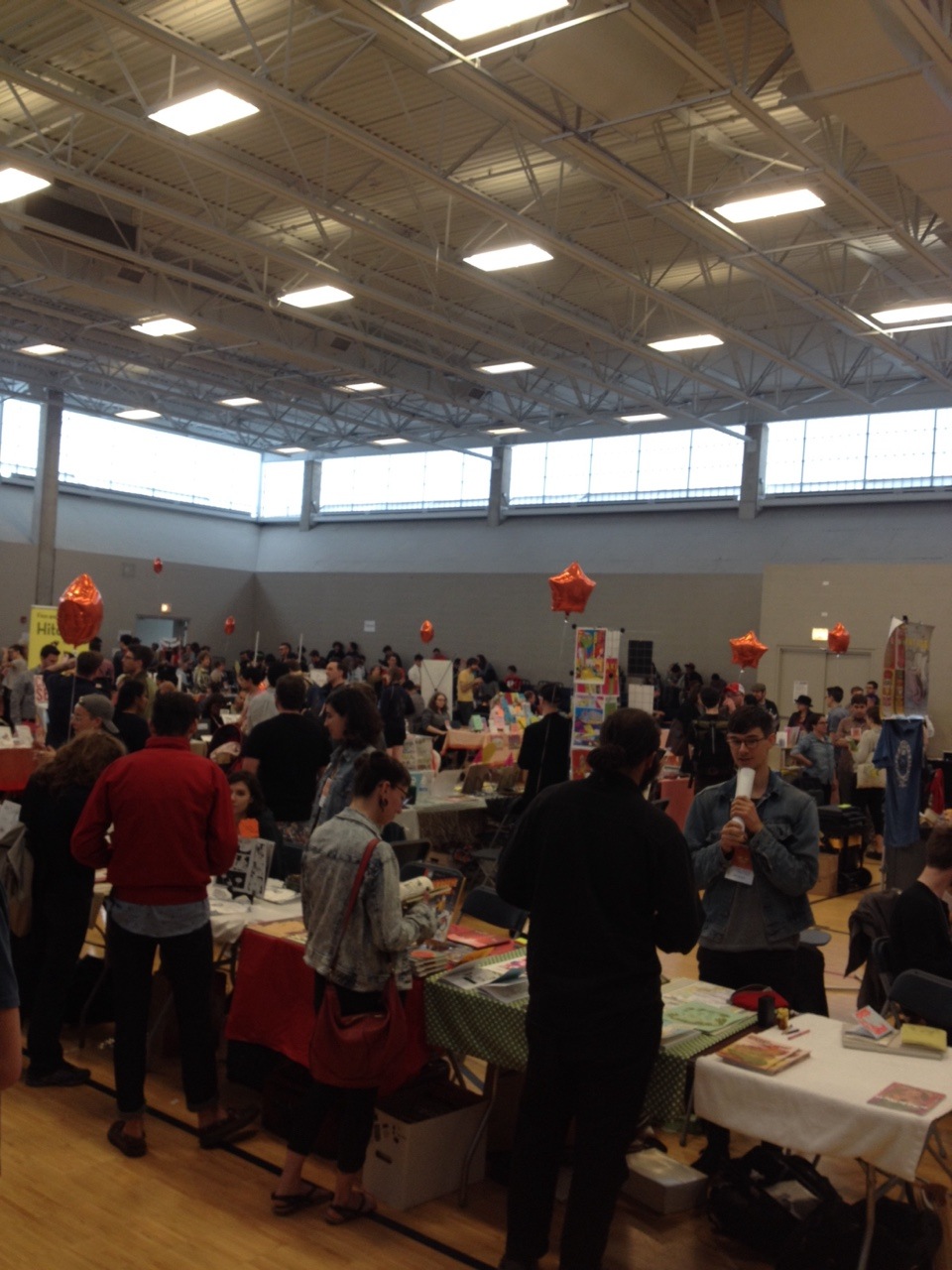
Photo via Kevin Budnick
It’s a little hard to find concrete reports from indie shows these days unless Secret Acres or Robyn Chapman post reports, from the social media, looks like CAKE Chicago this weekend was a successful indie show. I’ve heard mixed reports on sales in past years, but based on the “haul photos” I’ve seen, a lot of comics were purchased. I dug up a few more concrete reports:
Jonathan Bogart has a very funny post that reveals what Tom Spurgeon And Kevin Huizenga like to talk about, but he had a good time:
Since I’ve spent the last several years in a comics headspace dominated by European comics of the 50s through the 80s, it was great to just walk the tables and get a sort of immediate crash course on the dominant aesthetics and various kinds of scenes brewing in the self-publishing and micropublishing worlds of Midwestern and Midwestern-accessible comics.
It was a goddamn delight to see Jillian Tamaki the rockstar of the event – I saw people walking by Gilbert Hernandez on the floor without a second glance, but Jillian’s table was mobbed every time she was there, and seemed to do good business even when she wasn’t.
Sean Kleefeld has a more comprehensive post about the current con glut and how that impacts planning:
I was talking a bit with Kevin Budnik at CAKE this weekend, and I think he hit on an excellent point. He was a bit nervous going into the show this year because his table is waaaaay far in the back corner of the space. Argueably, the worst table there: the very last table in the corner farthest away from the entrance. Yet he was doing pretty well sales-wise — possibly better than SPX, but he hadn’t done a firm tally on that when I spoke with him — and he attributed that to walk-ins.
[snip]
This year, I talked to and saw several creators at CAKE — certainly more than a dozen — that sold out of some or all of their books. If one or two people sold out, I’d blame that on them for not bringing enough, but over a dozen? That’s something else. I talked to organizer Max Morris, and he was saying that their preliminary count for Day One was 1500-2000 and the half-day numbers for Day Two looked to be half that, but given how many people were selling out, I suspect the final two-day tally is closer to 5,000.
And Matt Brady bought many comics:
This past weekend was the fourth annual Chicago Alternative Comics Expo, or CAKE, and I’m happy to say that it seemed to be a successful event for everyone involved, from the organizers, to the attendees, to the many amazing artists who were exhibiting their work. I’ve volunteered for the event in previous years, but this year they asked me to get even more involved, so I was the Social Media Coordinator for the weekend, running the official CAKE Twitter, Facebook, and Tumblr accounts. I spent the weekend walking around, taking pictures on my phone, and doing lots of tweeting, retweeting, and sharing, so if you check out the past couple days of activity on those accounts, you’ll have a pretty good picture of what I was up to.
Here’s that account and a few random tweets:
CAKE! So many awesome comics artists, so much great work. (at @CenteronHalsted) https://t.co/ou1qeFBZBA pic.twitter.com/Tb2HxoxwdI
— Alex Koppel (@arsduo) June 7, 2015
Holy butts, #CAKEchicago2015 was amazing. Met so many great and talented folks who absolutely had better things to do than talk to me
— rae whitlock (@RPWhitlock) June 7, 2015
@keilerroberts RT @natebeaty: Developed a roll of many saucy cartoonists @CAKEchicago 2015: https://t.co/vv3j5q5hoi pic.twitter.com/NcUKNYO1TR
— Scott Roberts (@scaattr) June 9, 2015
Tons o’ photos in that last link:
Anyhoo, sounds like after four years this show has established itself as the midwestern incie fest that Chicago has needed for a while.
Did you go? Did you like it? Sound off in the comments!
Blog: PW -The Beat (Login to Add to MyJacketFlap)
JacketFlap tags: Comics, Commentary, Image, criticism, Predictions, Analysis, Indie Comics, Top News, Kieron Gillen, Top Comics, Jamie McKelvie, matt wilson, Clayton Cowles, Fandemonium, The Faust Act, The Wicked + The Divine, Add a tag
In Kieron Gillen’s talk on Alan Moore’s and Dave Gibbons’ Watchmen, Gillen emphasizes themes of time and cyclicality present in Moore’s graphic novel. Temporal symbolism recurs in everything from the Doomsday clock interstitials between chapters to Rorschach’s ever-shifting face to Dr. Manhattan’s past as the son of a watchmaker. Gillen, working alongside artist Jamie McKelvie, colorist Matt Wilson, and letterer Clayton Cowles, emphasizes similar themes of cyclicality in the Eisner-nominated series The Wicked + The Divine.
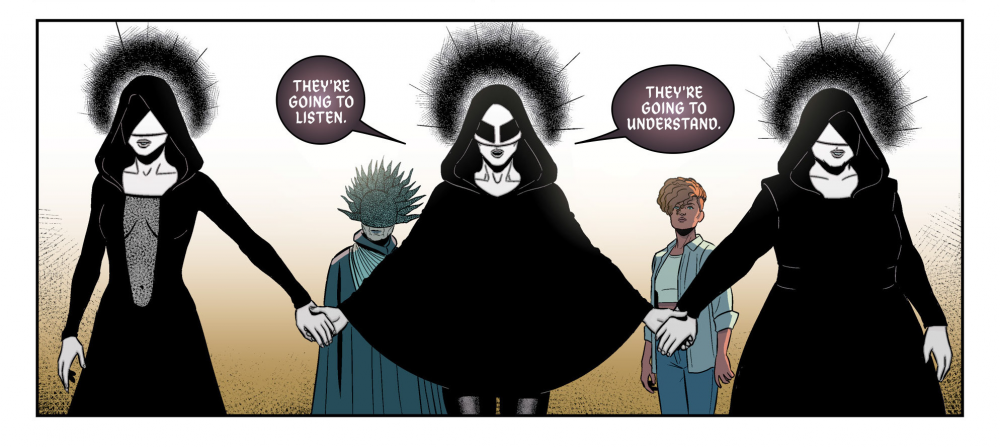
The work is shaping up to be a structural masterpiece in the vein of Watchmen and the conclusion to the series’ second arc, Fandemonium, releases next week. In honor of this, I’d like to take a moment to explore some of the recurring elements of the series that reexamine where we’ve been and clue us into the future of the series.
First Act
The premiere arc of the series is lovingly titled The Faust Act. In it, the team establishes Laura, who is our muggle POV character, and the majority of the gods present for the 2014 Recurrence. Ultimately, we see one of those gods abruptly exit stage left. The source of this arc’s name comes from Christopher Marlowe’s 16th century play The Tragical History of the Life and Death of Dr. Faustus. In the work, Faustus makes a deal with the devil Mephistopheles: infinite knowledge in exchange for eternal damnation. Throughout the play, Faustus reveals himself to be hapless despite receiving near-infinite power. Mephistopheles dances around the philosophical questions that Faustus poses to him and Faust spends the rest of his time conducting pointless experiments. He is ultimately damned despite begging for salvation.
This basically summarizes Lucifer’s arc in The Faust Act. She receives the gift of godhood and then wastes it by wasting two assassins who couldn’t kill her anyways. Ultimately, she is executed despite begging for forgiveness. While it is clear that Luci killed her assassins, debate has raged within and outside of the text as to whether or not Luci killed the judge that tried her for her crimes. After issue ten revealed that there was no link between the death of the judge and the attempt on Luci’s life, I decided to go back and look for some textual (or should it be panel) evidence that points to the identity of the judge’s killer. I keep coming back to these two pages:
I don’t believe that the WicDiv team is making this connection for giggles. I think Luci killed the judge. In issue 10, David Blake, the organizer of a Pantheon studies convention called Ragnarock, tells Laura that “we’ll never know for sure” who committed the crime, and I’m inclined to believe that that means Team WicDiv won’t ever give us a firm answer to the question. They want us to speculate, and it would certainly fit the Faustian trope if Luci were the catalyst for her own demise. The excerpted page from the first issue symbolizes her sealing her damnation, and the page from the fifth issue represents her begging for salvation.
Why would she do this to herself? Well, throughout the series, we see several gods perform. Amaterasu, Baphomet, The Morrigan, and most recently, Urdr. We never see Luci perform, but during her imprisonment, she feeds Laura this line:
What if Luci’s tragic story was her performance, and The Faust Act her stage? Her guiding principle throughout the comic is freedom, but at the end of the first issue, she allows herself to be arrested. There’s no reason why a few human police should be able to arrest a miracle maker. Later on, Luci demonstrates as much by melting through her holding cell as though it were made of wax. Luci is in control of everything throughout The Faust Act. Everything except for the inevitability of her death.
When Luci becomes a god, the spiritual guide of the gods, Ananke, tells Luci that she will be dead within two years. All the gods will. That’s the cruel joke of the Recurrence: you get the freedom to do anything except stave off your rapidly approaching death. It’s the ultimate encroachment upon one’s freedom, and the only way Luci can see to cheat the inevitable and reclaim that freedom is to die on her own terms. Getting arrested, killing the judge, breaking out of prison, and getting killed were the acts of Lucifer’s performance, and it inspires gods and men alike.

Speaking of cruel jokes, this is the cover of issue one transitioning into the issue’s first page…MCKELVIEEEEEEEEEEE!
Whose story?
Towards the end of The Faust Act, Luci gives Laura a cigarette. After Luci’s death, Laura snaps her fingers like a god, and is amazed to watch the cigarette light. Throughout the second arc, we’ve watched Laura snap her fingers constantly, trying to recreate the magic and take her place as a god. However, when Cassandra is revealed to be the twelfth god, that door is closed to Laura forever. It seems, as this interstitial puts it, that The Wicked + The Divine is:
One of the most common criticisms I’ve heard levied against Wic+Div is that Laura, ostensibly the series’ main character, doesn’t actually get much to do. She’s standing, dumbfounded, in the spotlight while all the gods are throwing fireballs and resurrecting people in the wings behind her. To some extent, this is true. Laura isn’t a protagonist in this series like Dream was in The Sandman. However, this is also the point. She’s not there to inspire. She’s there to be inspired. The first two arcs of the story take place over six short months, and Laura is already a dramatically different person. Check out these two layouts:
In the first chapter, Laura is starstruck. Luci is a capital G-O-D god. Laura looks up at Luci as she takes her hand and is led into a world beyond her and the reader’s imagination. She’s dressed up as Amaterasu and actively seeks to become someone else. By the time the fifth issue rolls around, Laura’s no longer hiding. She isn’t playing at being a god. She’s a friend of the gods. Instead of looking up to them, she sees their flaws, and thus is portrayed above Luci.
At one point, Baal makes a telling statement:
The gods don’t change the world. They only appear every 90 years and disappear after two. The gods empower regular people like Laura, and people like her–people like us change the world. Laura doesn’t “do” much because she’s still in the process of being born. As long as the gods are here, her actions will always be visually trumped by the flashy powers of the Pantheon. However, even without powers, she’s managed to drive a great deal of the action in the series and inspire a lot of people. Even David Blake, who once said that she’s “learned so little that [her] opinion is pretty much void,” turns around by the end of the second arc and admits that he was wrong.
Gillen’s writer’s notes on the first issue serve as a piece of extratextual evidence that supports this reading of Laura. In his blog post, he writes that Laura’s name is inspired by the eponymous Bat For Lashes song.
Some choice lines include:
“Your heart broke when the party died.”
“You’re more than a superstar.”
“You’ll be famous for longer than them.”
People may hate on Laura, but she is the key to understanding The Wicked + The Divine because she’s going to be the last woman standing at the end of the series. She didn’t inherit the spirit of the gods. She’s inheriting something better: the Promethean gift of their knowledge. What’s left to be seen is what she does with that gift, but I have some ideas…
Once again, we return…
Ananke utters the same words at the end of the 1920s recurrence and as Cassandra takes her place as Urdr, the last god needed to complete the 2014 pantheon. Ananke is focused on the positive elements of cyclicality in these scenes, looking forward to the future and the beginning of the Recurrence cycles. She neglects to mention the end of the statement.
Once again we return
to this.
In two years, her children will be dead. Again. She doesn’t say it, but the sentiment is revealed on her face as she watches the last of the 1920s pantheon die. Interestingly, although Ananke is the constant and undying element of necessity that persists between pantheons, she seems to have aged dramatically over the past 90 years. Now granted, she wasn’t exactly starring in Dove commercials in 1923 (I can’t think of a contemporary joke, sue me), but the last century seems to have worn her down and given her more wrinkles than the time stream of Looper. She says as much in an interview with Cassandra:
Now, this is pretty foreboding. When Laura visits Valhalla for the first time in issue four, one of the major reasons why the other gods won’t help end Luci’s imprisonment is because it could mean the end of all Recurrences. Forever. As Ananke says:
Superficially, one could say that Ananke fears that humans will literally kill the gods. Now, as has been demonstrated time and time again (bullets curve around gods), this is exceedingly difficult. However, what if humans simply stopped believing in the gods’ ability to inspire? Ananke says that the “inspiration will leave the world forever” without the gods, but can she back up that statement? The years have worn on Ananke and the 2014 Recurrence is not going well. Perhaps the fault for that doesn’t lie with any of the gods. Perhaps mankind simply doesn’t need them anymore. To quote Nietzsche (which is always a good idea, I promise):
“God is dead. God remains dead. And we have killed him. How shall we comfort ourselves, the murderers of all murderers…must we ourselves not become gods…?”
Now, this is the point in the article where analysis-based hypothesizing becomes almost pure extrapolation and guesswork, so be warned. However, I think The Wicked + The Divine is showing us the last Recurrence ever. In Neil Gaiman’s American Gods, the author plays with the idea that gods are powered by the strength of human belief. They exist only as long as people need them to. If Team WicDiv is drawing from this particular school of thought, then we could be witnessing the last recurrence ever because the cycle of rebirth has run out its usefulness. The gods were originally created to “light the spark” that allows mankind to beat back an oppressive darkness and begin the construction of civilization. Civilization was constructed. Civilization has lasted. The recurrence is a cycle, a circle, a set of training wheels for mankind. Now it’s time for them to come off. We are witnessing the end of the era of gods as men and the beginning of the era of mankind as gods. Who might lead mankind towards that era? Why, Laura of course.
Let’s look back at Laura grasping Luci’s hand in issue five:
Michaelangelo’s The Creation of Adam is probably one of the most famous paintings in the world. God, on the right, is about the breathe life into Adam, the first man, on the left. Laura, on the right, gives strength to Luci on the left. Laura is the god in this allusive panel. She is the person, “rare and blessed,” who can hear everything that “all the gods have to say,” which makes her the perfect leader for humanity when they’re gone.
How the Recurrence will end and the identity of the ultimate “darkness” that threatens civilization has yet to be seen, but I’m interested to know what you all think of the postulations above. Let me know in the comments or tweet @waxenwings.
As a final thought and not to take away from the gravitas of this moment, but I think it’s funny that Laura’s still wearing a coat in issue 9 even though it’s almost July. Girl is frigid.
Blog: PW -The Beat (Login to Add to MyJacketFlap)
JacketFlap tags: Indie Comics, Ed Lavallee, Marcelo Basile, Matt Cashel, Pop Star Assassin, Comics, Breaking News, Add a tag
Pop Star Assassin, the new comic by writer/creator Ed Lavallee and art by Marcelo Basile, is a mesmerizing and surreal look into the life of Bruce, an Elvis impersonator who thinks the real Elvis was his father. The explosive first issue sees Bruce thrown into a wild situation stuck between G-Men, mobsters, and shadow agencies. All of whom are trying to use him for their own needs. As the climatic events unfold Bruce is left tying to figure what is going on, who he really is and what his connection to Elvis is. If you like guns, action, espionage, the mob, G-Men, Elvis and shadow agencies then you will love this book. Definitely check it out. Here is the exclusive interview with writer/creator Lavallee.
Where did you come up with the concept for Pop Star Assassin?
Pop Star for me has been a life long endeavor heavily influenced by all of the movies and television I watched as a kid growing up in the 70’s. Celebrity back then had a certain cache and cool that studio stars of today can’t duplicate. Genuine cool. Elvis, McQueen, Bruce Lee, Star Wars, Planet of the Apes, Saturday morning cartoons and Black Belt Theater. When these stars passed away it was always under bizarre circumstances or conspiracies that just added more to their legendary status. In my mind this made a perfect idea to to build a story around.
 What is the story about and where do you see it going?
What is the story about and where do you see it going?
Pop Star Assassin is one mans journey to discover who he really is and where he comes from. The main character Bruce, believes he is the son of the King of Rock & Roll which is true to a degree, but not the whole truth. Turns out he is the catalyst in a government conspiracy involving Look-A-Like™ robot assassins hellbent on taking over the planet. In a nutshell anyway.
What are your influences comic wise and writing wise?
My influences, like I said stem from all the movies, books, comics, and cartoons I absorbed as a kid, which luckily I never grew out of. Star Wars was huge influence on me. As a kid it was THE greatest movie to ever grace the big screen. Comics – Frank Miller, John Byrne, most Marvel comics, Heavy Metal magazine, Savage Sword of Conan. Anything I could get my hands on really. The one creator I look up to the most and consider my biggest influence is Mike Mignola. Great all around creator, artist, writer. A true visionary in my opinion. My influences would not be complete without Tarantino on my list. True master of storytelling, character building and dialogue in my opinion.
Who else worked on the comic with you and what was their part?
I created Pop Star Assassin and co-wrote the first 3 issues with fellow comic book writer Matt Cashel. Matt wrote the Image comic Paradigm and is currently working on a new title called Blank Walls. Look for it soon and please support the HELL out of it as well. Us indy guys rely on each other and a grass roots kind of marketing to help get the word out there. The artist on Pop Star Assassin is the one and only Marcelo Basile from Argentina. A true master of his craft and all around great guy! His work on Pop Star is incredible. Each new page he turns in blows me away. Great stuff happening with issue 2 as I type this up.
What is the vibe you are going for with the comic and art?
Well, Pop Star is set in late 1977, so we’re going for a funky, groovy, gritty, over-the-top, low-sci-fi action adventure trip. A Tarantino-esque vibe for sure. Definitely a strong R rating. You picked up a copy – what did you think?
What other comics are works do you have out?
I have a OGN published through Archaia titled, Revere: Revolution in Silver. Revere is my first professionally published work. I am currently working on a follow up with volume 2 – Revere: Salem’s Plot. We’re about 25 pages in on the art of it. I am also working on a couple of books for Outland Entertainment (www.outlandentertainment.com) – ITHACA and BACKLANDS. We hope to make some official announcements soon. There are a lot of great things cooking over at Outland, so check them out if you get the chance.
How was C2E2?
C2E2 was a great show. A bit overwhelming for me really. It was my first time and just the size and number of people was incredible. I am used to doing smaller, local shows so it was a real eye opener. Made a lot of contacts and new friends. Picked up some great artwork and cool books from fellow creators. Talked to a couple of pros and got copies of PSA into their hands so that was pretty cool. Over all pretty fantastic time. Denver Comic Con is next!
What do you think about the state of independent comics?
I think independent books are on a very healthy road right now. Image is really setting the gold standard for creator owned books and is in my opinion the place to be for great stories from top flight creators. I feel like there are so many options for independents to get their books into the hands of fans with Kickstarter and crowdfunding, as well as a number of options to get books published digitally. If one door is closed, there are a bunch of others you can go through and find success. No retreat-no surrender.
What is in the works for you right now?
Right now I’m gearing up for Denver Comic Con Memorial Day weekend and then another big convention in my home town of Kansas City in August. There is a slight chance I may be attending a convention in Las Vegas in June. On the writing side of things issue 2 of Pop Star is in full effect, with finished art coming in daily. I’ll start wring Ithaca in June. Backlands issue 1 is in production. We hope to debut at the Kansas City Comic Con with an exclusive cover. I have a couple of other projects in the early idea phase just waiting for the iron to get hot. Stay tuned there is a lot more coming soon.
Any other promotional ventures you are planning for the comic?
No new promotions for Pop Star Assassin right now. I put together a special prize pack for our 500th like on the Pop Star Facebook page – will probably do another giveaway when we hit 1000 likes. Stop by the Facebook page at Popstar Assassin for all of the latest news and updates. And for those of you that don’t have your copy of issue 1 I have them available. Message me on Facebook for details.
Thanks for everything. Rock and Roll!
Follow Seth Ferranti on Twitter
Blog: PW -The Beat (Login to Add to MyJacketFlap)
JacketFlap tags: Top News, Tuki Save The Humans, Webcomics, Jeff Smith, Indie Comics, Add a tag
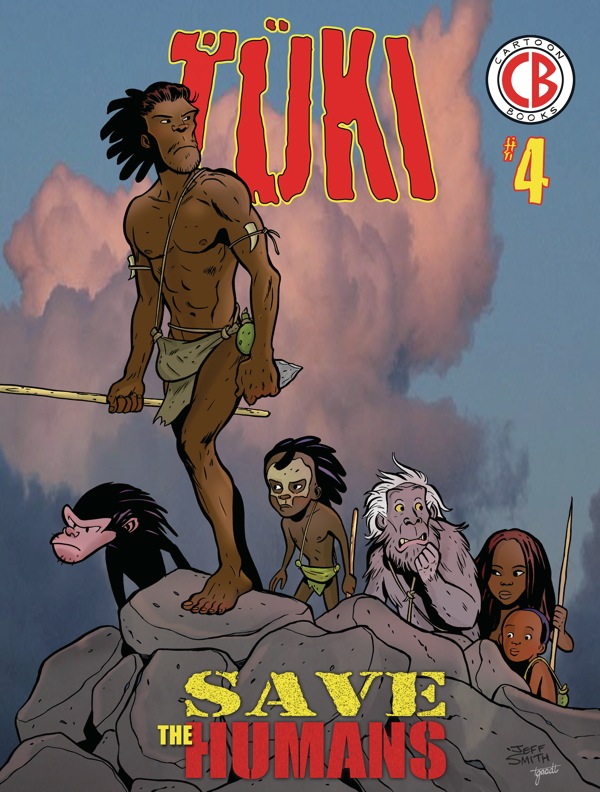
Issue #4 of Tüki Save The Humans, Jeff Smith’s saga of early humans and their migration, has been postponed from May to December due to a recurrence of an arm injury that creator Jeff Smith has been battling for a while.
“The past 12 months have been really busy,” says Smith, “and last month, after doing two issues of TUKI back to back, I noticed my arm was getting numb. I’ve had trouble with carpel tunnel syndrome before, and while I haven’t crossed the line, it’s not something I want to mess with.”
“I also have a secret project I’m working on that is adding to the workload,” he continued, “so I’ve decided the best thing to do was to slow down, move the book to where it will be best for TUKI. Sincere apologies to all of my readers, and I thank you for your patience. We plan to add a few surprises to the issue and hopefully the wait will be worthwhile!”
Tüki launched as a webcomic, with print issues following, and the third “season” wrapper a while ago.
While this is disappointing news, any “secret project” from Smith is exciting.
Blog: PW -The Beat (Login to Add to MyJacketFlap)
JacketFlap tags: Small Presses, Nathan Jurevicius, Indie Comics, Koyama Press, Julia Wertz, Michael DeForge, Top News, Cole Closser, Jane Mai, phil woolam, robin nishio, Add a tag
Canada’s Koyama Press continues to present a lively slate of boundary-pushing work, and this fall they are putting out their biggest line ever, including two books by Michael DeForge, new books by Jane Mai, Cole Closser and some newcomers, a kid’s book and a revamped version of Julia Wertz’s Drinking at the Movies. I expect one of the most interesting will be Robin Nishio’s Wailed which follows “a group of friends who also happen to be the vanguard of alternative comics making.” And you thought The Sponsor was shattering!
All the details below:
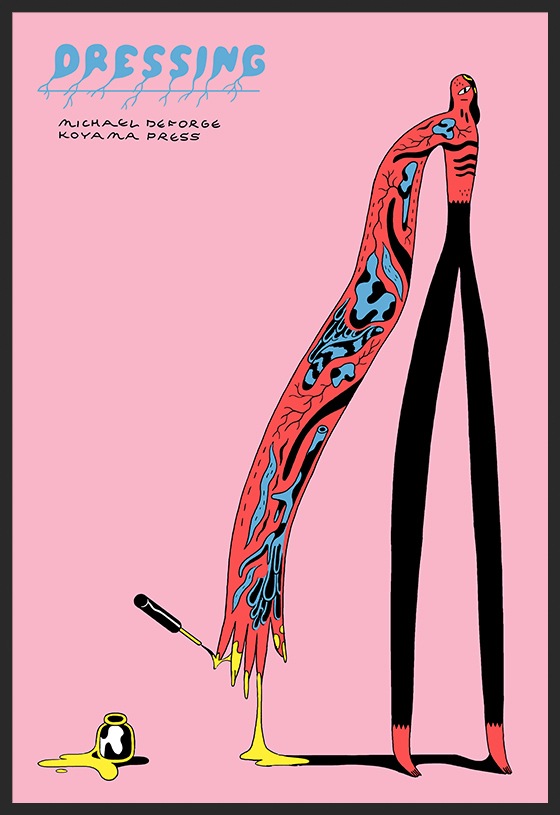
DRESSING
Michael DeForge
ISBN: 978-1-927668-22-1
$19.95
5 ½ x 8, 120 pages, colour, paper over board
September 2015
Like Very Casual, a collection of very odd odds and sods from the outré oeuvre of Michael DeForge.
Michael DeForge makes comics like no one else. This collection of the cartoonist’s mini-comics, zines, anthology work, and more, is a follow up to the award-winning Very Casual, and shows the artist at the height of his occasionally fever-induced powers.

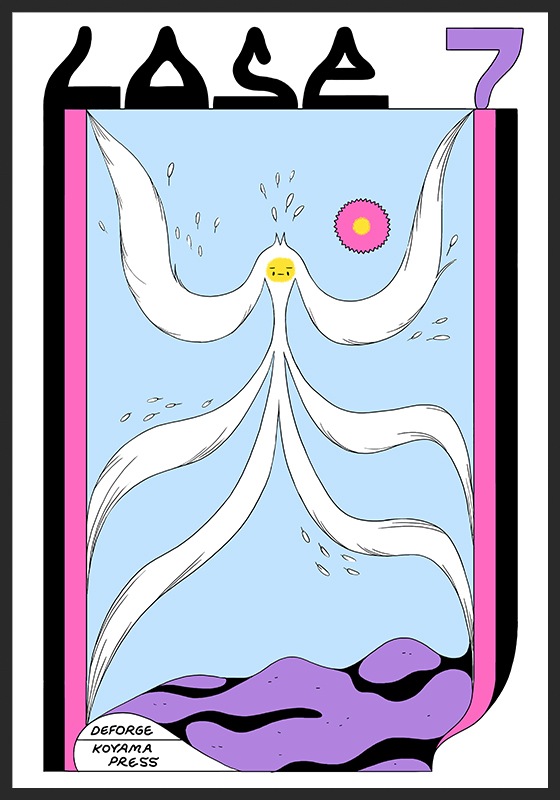
LOSE #7
Michael DeForge
ISBN: 978-1-927668-18-4
$10.00
7 ⅛ x 10, 52 pages, colour, trade paper
September 2015
Lose, now in full colour!
The multi-award winning Lose series is Michael DeForge’s comics laboratory. The art form is pushed to its limits in these first-time-in-full-colour pages. Revel in a cartoonist at the height of their powers exploring the eccentricities of a woman who befriends her dad’s doppelgänger, and the realities of a flightless bird/boy hybrid.
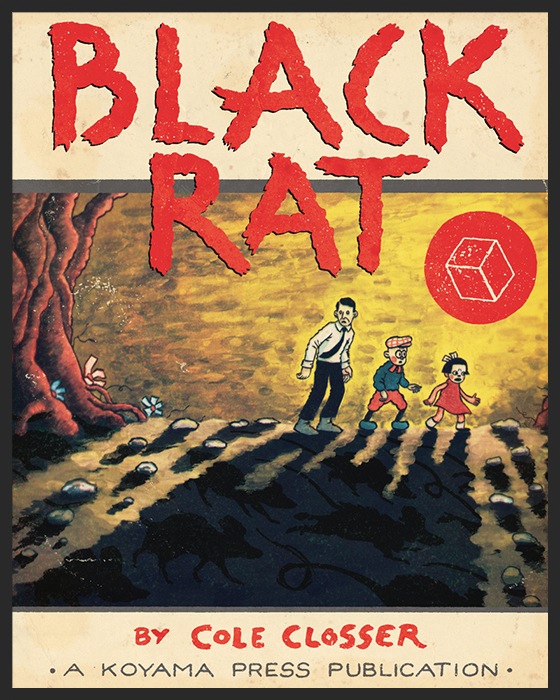
BLACK RAT
Cole Closser
ISBN: 978-1-927668-24-5
$15.00
6 x 7 ½, 160 pages, colour, trade paper
September 2015
This aesthetically varied collection of nine graphic short stories is loosely linked by the recurring appearance of a black rat.
Black Rat is the sleeper in the shadow, the wanderer in the woods. He walks between worlds and travels through time—slaying monsters, solving mysteries and philosophizing with his fists amidst a barrage of butchered quotes and borrowed styles in a series of seemingly disparate, sometimes violently visceral vignettes.
COLE CLOSSER is a cartoonist and a graduate of the BFA program at Missouri State University in Springfield, Missouri, as well as a graduate of the MFA program at the Center for Cartoon Studies in White River Junction, Vermont. His graphic novel Little Tommy Lost was named one of the ten best graphic novels of 2013 by A.V. Club (the Onion), and nominated for the Will Eisner Comic Industry Award in the category of Best Publication Design at the 2014 San Diego Comic-Con. Cole currently lives in Springfield, MO and teaches drawing at Missouri State University and Drury University.
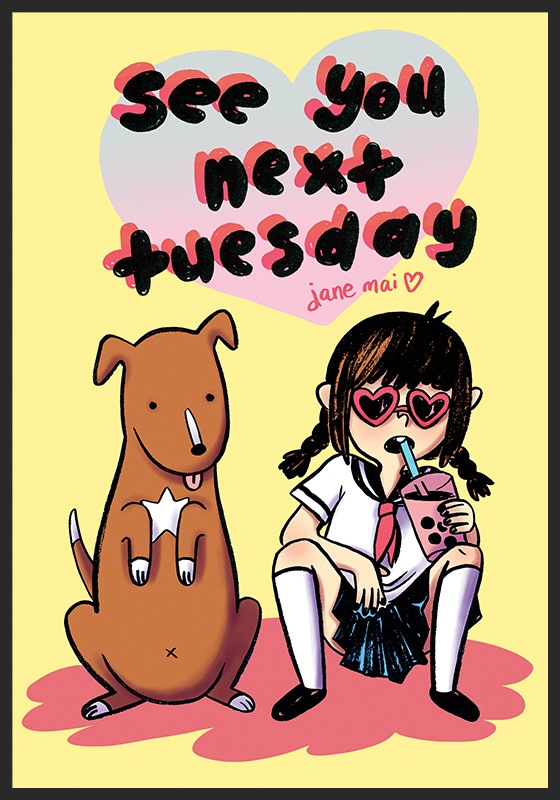
SEE YOU NEXT TUESDAY
Jane Mai
ISBN: 978-1-927668-25-2
$12.00
7 x 10, 128 pages, b&w, trade paper
November 2015
Autobio with bite.
This collection of diary comics features the ennui and wee of twenty-something Jane Mai whose emotions and art traverse the high and low. Moments of visual poetry and heartbreak are interspersed by bad body hair and bathroom disasters; much like life.
JANE MAI is a freelance illustrator and comic artist from Brooklyn. Her work has appeared in several anthologies and self-published zines. In 2012, Koyama Press published her first book, Sunday in the Park with Boys, which was followed by the zine Sorry I Can’t Come in on Monday I’m Really Really Sick.
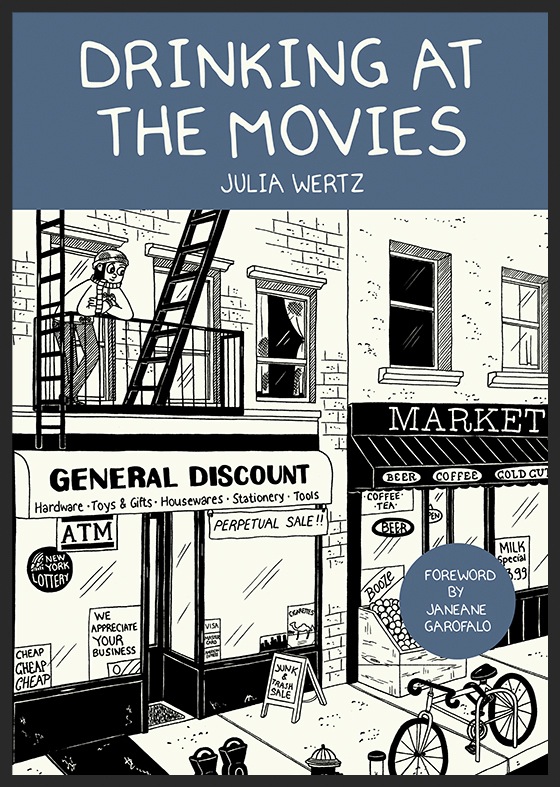
DRINKING AT THE MOVIES
Julia Wertz
ISBN: 978-1-927668-26-9
$15.00
6 ½ x 9, 220 pages, b&w, trade paper
November 2015
Julia Wertz is the anti-Bridget Jones; her diary comics are filled with life’s real and often really hilarious moments.
Representing Julia Wertz’s critically acclaimed first graphic memoir in a new format, with brand new material from Wertz, and an introduction by Janeane Garofalo. But don’t worry; we haven’t replaced any of the wrenching and ribald, whiskey-soaked coming-of-age tale. This is Wertz at her best, which is sometimes her worst.
JULIA WERTZ was born in the San Francisco Bay Area in 1982 and currently lives in Brooklyn. She is the author of the autobiographic comic books The Fart Party Vols. 1 and 2 (Atomic Books, 2007, 2009) both volumes were collected asMuseum of Mistakes in 2014, Drinking at the Movies (Random House, 2010) and The Infinite Wait and Other Stories (Koyama Press, 2012).
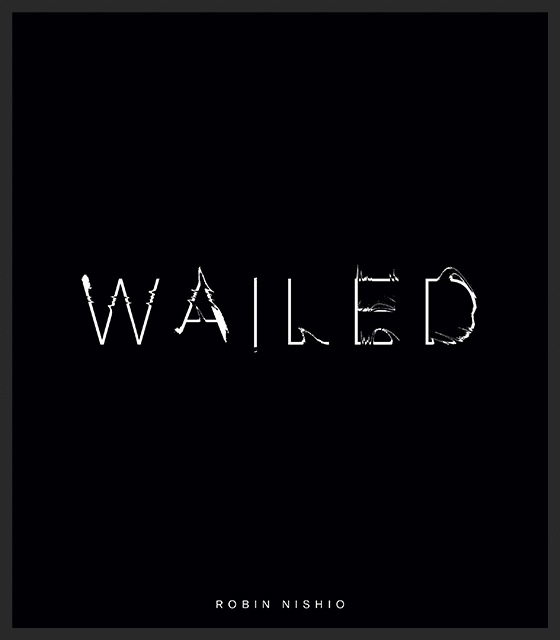
WAILED
Robin Nishio
ISBN: 978-1-927668-19-1
$21.95
8 ¾ x 10, 80 pages, CMYK rich-b&w, trade paper
November 2015
Page through the lives of contemporary cartooning’s enfants terribles.
Wailed is an intimate chronicle of a group of friends who also happen to be the vanguard of alternative comics making. In stark black and white, the lives of these young artists are illuminated. Comics are often associated with the past, but this is a document of their future.
ROBIN NISHIO is an accomplished illustrator and storyboard artist and his artistic acumen is also reflected in beautiful and raw photographs. His high-contrast black-and-white images recall the pioneering work of Japanese photographer Daido Moriyama. Straddling two market groups, art photography and cartooning, Wailed is a book with an easy hook, but a depth that allows it to transcend easy categorization.
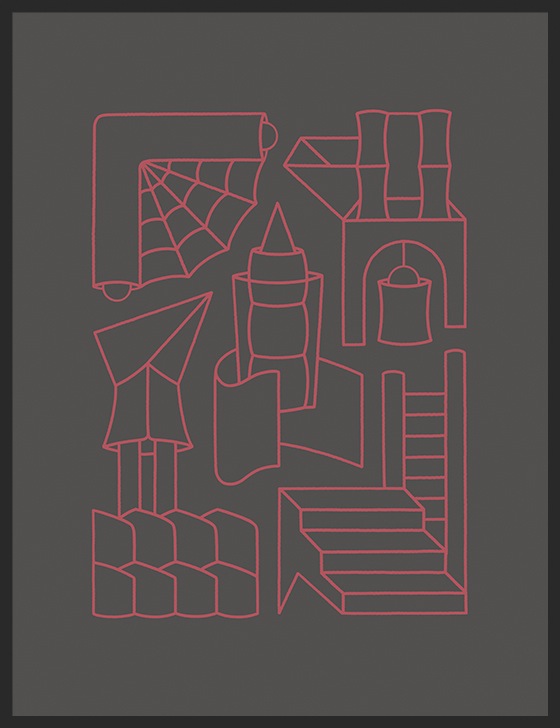
CROSSWAYS
Phil Woolam
ISBN: 978-1-927668-23-8
$22.95
10 x 13, 52 pages, 3 spot colours, trade paper
November 2015
A modern Mondrian; Woollam sees cities as a latticework of vibrant colour and fluid forms.
Crossways presents the ever-changing grids that make up the modern urban center, be they intersecting streets, crisscrossing wires or the ladder that climbs up the side of a building, as pure abstraction. For Woollam, landscape is liquid and the city is a medium as fluid as ink.
PHIL WOOLLAM is an artist living in Toronto whose drawing based practice often focuses on multiples that recall the colourful geometry of the Memphis movement and De Stijl. Trained as a sculptor, Woollam has also created three-dimensional works including mascots based on the characters and designs of cartoonist Michael DeForge.
KIDS’ COMICS

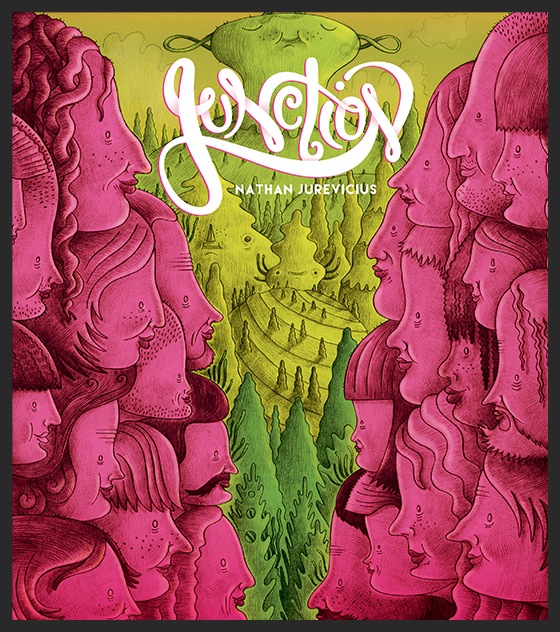
JUNCTION
Nathan Jurevicius
ISBN: 978-1-927668-21-4
$19.95
8 ½ x 10, 52 pages, colour, paper over board
November 2015
Make a face when the wind changes and it will stick, but, in this myth, you might just love it.
For generations the Face Changers have made the clay tokens that change the winds and faces of their kin. This month the youngest is tasked to take the ten thousand footsteps to the top of the mountain and engulf the town in the winds of change.
NATHAN JUREVICIUS is an Australian-Canadian illustrator who has worked in a variety of media including designer toys, video games and animation. He is best known for his acclaimed multi-platform project the psychedelic and heartfelt modern folktale Scarygirl. Nathan currently lives and works in Toronto.
“Nathan Jurevicius’ work achieves the minor miracle of being aggressively weird, deeply compelling and entirely satisfying…a rare achievement that only a true master of mysterio autentico can accomplish.” — Jim Woodring, creator of Frank and Jim
Blog: PW -The Beat (Login to Add to MyJacketFlap)
JacketFlap tags: Art, Previews, Indie Comics, Joe Casey, Top News, jim mahfood, Lion Forge, miami vice remix, Add a tag
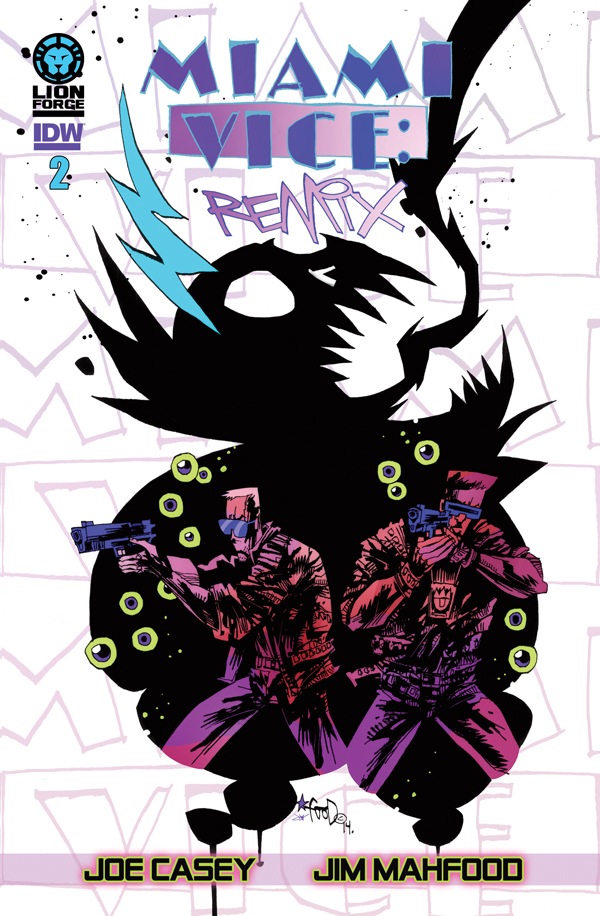
It’s almost quitting time here in EDT so let’s leave the week with something FUN for a change.
Why just do a comic book based on a classically of it time TV show when you can reinvent it as an acid trip that bends time and
space? And hooray for licensors who let you get away with it. Miami Vice: Remix by Joe Casey and Jim Mahfood is anything but a dull TV show comic…it’s an audacious tale on tropes and icons, and a gem in the Lion Forge line-up.
Last month, the TV classic Miami Vice came back in a whole new way with the neo-noir, ultraviolet, action-packed Miami Vice: Remix. The first issue left readers cliff-hanging but never fear — the next installment of car chases, palm trees, and mutation-inducing designer drugs is here!
When we last left Crockett and Tubbs (still Miami’s coolest cops) they were in a sticky situation with some South Florida zombies high on Miami Bath Salts. Now they’re in hot pursuit of the dealer of this horrific nose candy, which leads them to punching cracked-out monsters in the face while zooming through Florida Turnpike traffic. Just another day at the office! But while one situation explodes, another simmers; someone who’s got serious beef with our $600-suit-wearing-heroes claims that Crockett’s got a serious debt to pay — and they’re here to collect!
Writer Joe Casey (Godland, Wildcats, Adventures of Superman) and artist Jim Mahfood (Tank Girl, Ultimate Spider-Man, Grrl Scouts) take their off-the-wall trip to South Beach to the next level with another high-energy, neon-soaked installment, in-stores next Wednesday.
Issue #2
Pub Date: April 22, 2015
Item Code: FEB150372
Issue #3
Pub Date: May 13, 2015
Item Code: MAR150456
Issue #4
Pub Date: June 17, 2015
Item Code: APR150489
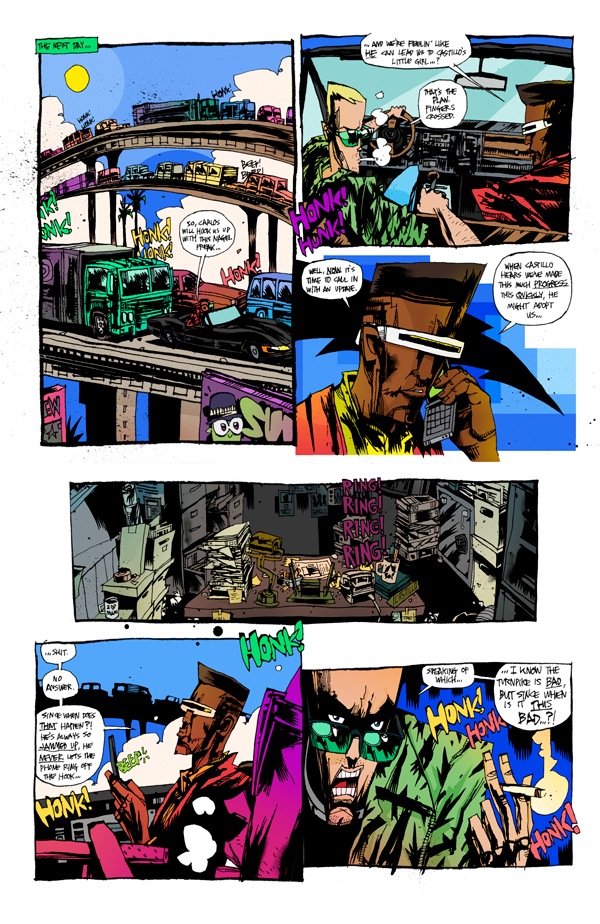
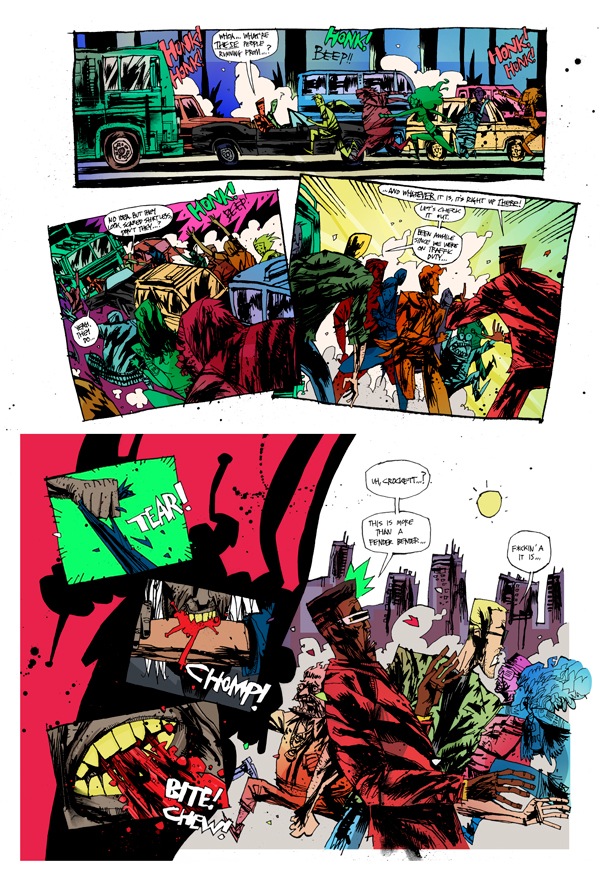
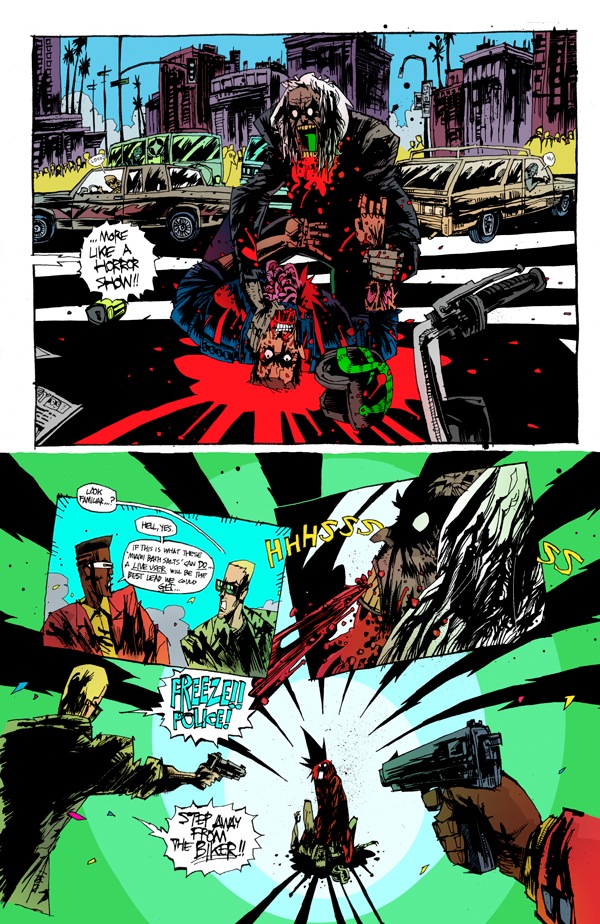
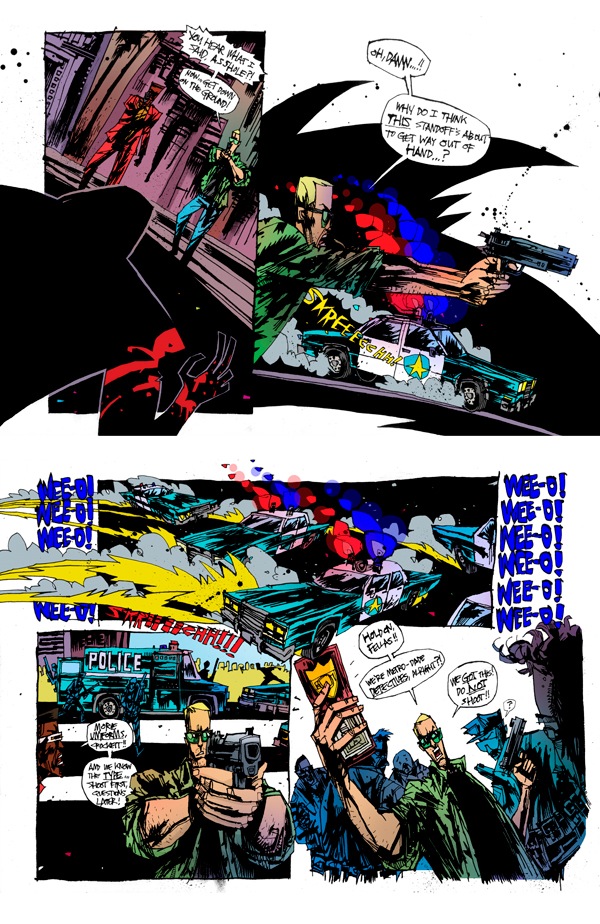
Blog: PW -The Beat (Login to Add to MyJacketFlap)
JacketFlap tags: Indie Comics, Top News, mocca '15, Photos, Add a tag
The good news is that the 2015 MoCCA Festival moved to a new venue—Center 548 in the heart of Chelsea’s gallery district—and it was ideal! Windows, flattering white walls, three floors of comicksy goodness, tons of foot traffic, and a rooftop lounge where you could sit in the sunlight and look out over the Hudson to the far lands of Jersey. And the panels held at the Highline Hotel wee a hop skip and jump away. It was smooth sailing!
The bad news is that MoCCA will never be there again. (h/t Daryl Ayo) The building—once the home of the prestigious Dia Arts Center—has been sold and will be converted to condos, like everything else in New York. When all these people move into these condos will there be anything fun left to do in NYC except shop at the Stella McCartney store? I sure hope so.
I’ll have a more detailed report on the show for Publishers Weekly, but here’s a picture run down of the week.
One quick note: while today’s multi-faceted comics publishing world doesn’t really lend itself to a “book of the show” Jillian Tamaki’s “SexCoven” in Frontier #7 was definitely the book of the show. It sold out on Saturday but you can order your copy here.

My MoCCA Week kicked off on Thursday with a VIP party for Aline Kiminsky-Crumb with a performance by Eden and John’s East River String Band with special guest R. Crumb sitting in. But first I surveyed the Alt.Weekly cartoonists show downstairs which is amazing. This 30-year old Life in Hell strip by Matt Groening is as true today as it was then. The show is up until May 2 — see it! 
It was a lively hoe down. Crumb plays with verve. And I can scratch that off my bucket list.

The hallway to the restroom is an exhibit of original art from the LITTLE NEMO: DREAM ANOTHER DREAM anthology. Art by Farel Dalrymple, Bill Sienkiewicz and more. I love this page from Carla Speed McNeill for obvious reasons.

On Friday night I moderated a panel consisting of Daryl Cunningham, Penelope Bagieu, Nadja Spiegelman and Sergio Garcia Sanchez, shown above. It was a rather unattended event, sadly, but the panelists were great. Here Sanchez shows us someof his experimental comics which use space and storytelling in very unusual and beautiful ways. He teaches cartooning in France and I hope to have more with him in a few weeks. That’s Bagieu on the upper left, and she’s a pistol.

After the panel, I trained over to the Productive for Drink & Draw Like a Lady. Every year there are more ladies! Seriously the place was jammed, and I saw a lot of names on tags that I knew from Tumblr and Twitter. This is the NOISIEST party I attend every year.

Saturday morning I got into a cab with a driver who saw a bit of crosstown traffic and decided at Fifth Avenue that he wasn’t going to take me any further. “It’s a beautiful day! You’ll enjoy the walk!” he urged. For this I had to pay him $5. I got to the Highline Hotel—a former seminary which could easily stand in for Hogwarts—just in time to see Bill K. interviewing Scott McCloud. I know other people have better pictures of this, but it’s my photo essay! With these two smart people, the panel breezed by.
Scott McCloud (l) speaks with Bill K. At #mocca2015 pic.twitter.com/E5wXuutDTB
— calreid (@calreid) April 11, 2015

I love all the details that the SOI staff puts into making MoCCA run smoothly, like this signage on 10th Avenue directing you to the venue.

Inside I made a beeline to say hi to Seth Kushner here with his heroic wife Terra. Kushner fell ill after last year’s MoCCA and he’s still recovery from the leukemia that nearly took his life, but he’s leukemia free. It was wonderful to see him, and pick up his new comic, and I think his being there was the highlight of the show for a lot of people.

Band photo with Dean Haspiel and Chris Miskiewicz

A selection of books from Atlantic Press a UK based imprint that publishes experimental and student comics. The book in the foreground, Beyond the Wire by Alys Jones was my find of the show—using hand cut holes in the pages to show the claustrophobic and deadly world of the trenches of WWI.

Steve Vrattos at the Fanfare/Ponent Mon table has a ton if imports from Knockabout and other UK publishers. While I was chatting with him, he helped someone pick up their first book by Jiro Taniguchi, so job done.

I ran into Matt Loux and Abby Denson, one of my favorite comics couples, coming out of the elevator.
Oh yeah the elevator. It’s moot now, since the 548 Center is going bye bye, but getting up and down the floors was the one thing that might have been a hindrance for the venue. The elevator held four people and took 15 minutes to make a trip. The stairs were super steep and narrow, and while they weren’t really dangerous, per se, let’s just say that if you had a little bit of vertigo, things become more challenging. But like I said, that’s all moot.

After you managed to get up four flights of stairs you were greeted with this view on the roof top.

Saturday night I went back to SOI for the Awards of Excellence presentation which were given this year to Greg Kletzel (above), Kris Mukai, Daniel Zender, Tyler Boss and Keren Katz.

Here’s Keren with her trophy. (Keren is so talented and also one of the nicest people I’ve ever met, even in a business filled with nice people.)
This party had some free beer from Lagunitas and was so much fun. The patio was open, and after this long winter, just to be outside again was a joy.

On Sunday I tried to take pictures like I always do. Alice Meichi Li
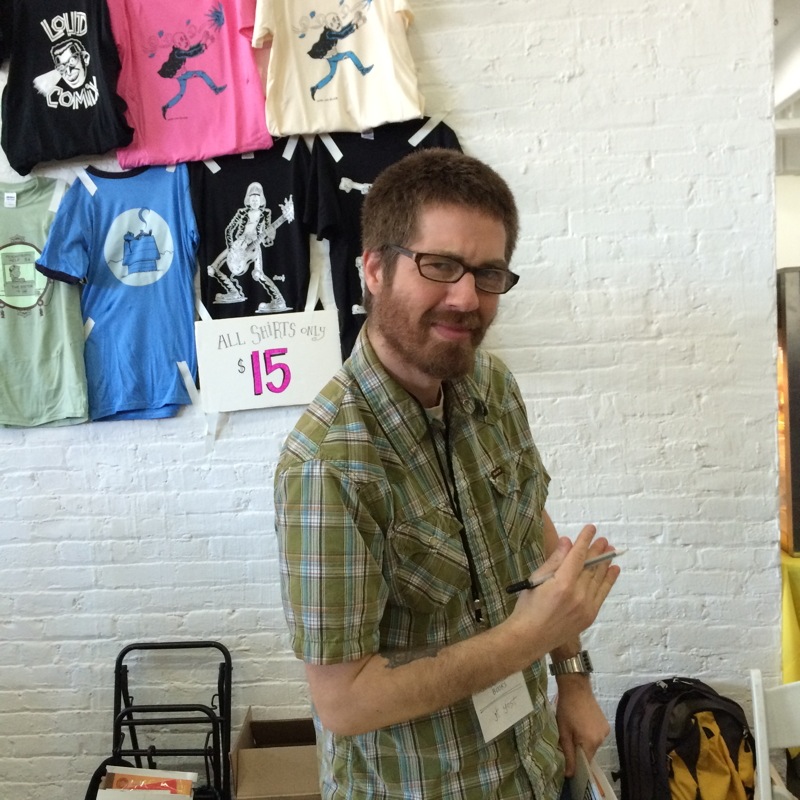
Birdcage Bottom’s JT Yost
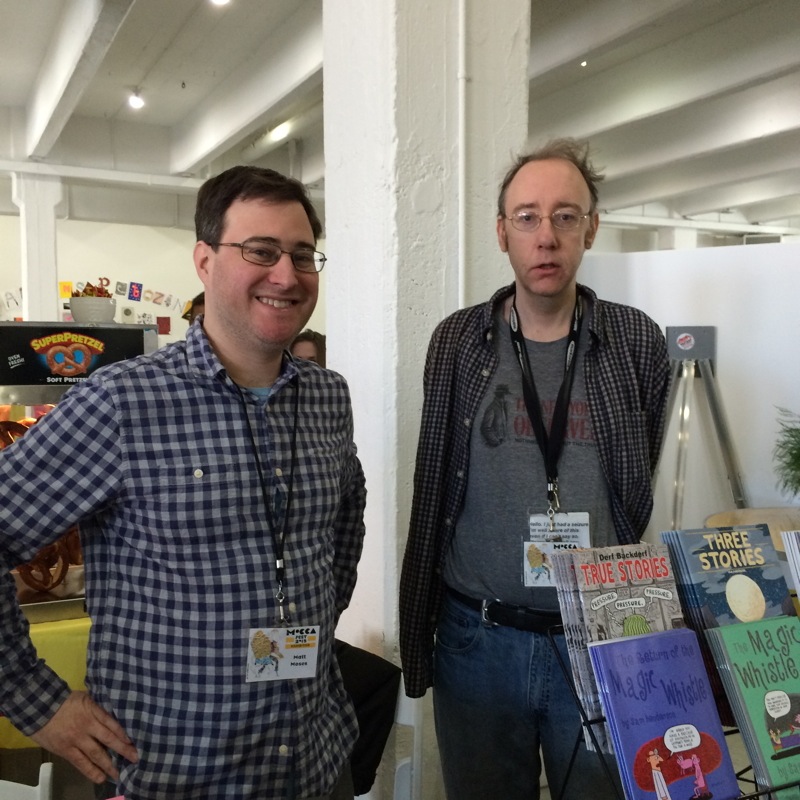
Hic and Hoc’s Matt Moses and Sam Henderson

And then I got distracted and stopping taking photos. As you can see it was a light, airy place. Too bad we’ll never be there again. Enjoy your $5 million condo that you visit once a year, oligarch.

Javier Cruz Winnik and Sara Wooley

Julia Gfrorer and Sean T. Collins. Later on we got a picture of Sean along with myself and Brigid Alverson, as shot by Johanna Draper Carlson for a Bloggers of the Aughts reunion.

At Conundrum, Kat Verhoeven, Andy Brown and Joe Ollman take their band photo. Verhoeven’s Towerkind is just out and I talked to her about it for the PW podcast this week.

The woman of the year, Jillian Tamaki.

This is the Highline Hotel. Inside it was decorated with manual typewriters and dark wood fixtures reminiscent of a century ago. When I leave New York, I want to come stay here when I visit, except rooms are $400 a night. Also you had to stand in line 20 minutes for a $4 cup of Intelligentsia coffee. They were out of cold brew and pastries by the time I got there. The barista told me they’d had an insanely busy weekend.

I checked out this panel with editors from various print and online magazines—the New York Times, Rookie magazine, Autostraddle and Tablet—and what they look for when hiring cartoonists. I took notes and will write it up in a bit.

SeflMadeHero publisher Emma Haley and Dutch artist Barbara Stok.

Ghetto Brothers, a true life tale of gang life in the South Bronx, was one of the lesser heralded books at the show, but I heard a lot about it on the floor. Here’s Benjy Melendez, subject of the story, and artist Julian Voloj. I think you’ll here more about this in the coming weeks.

Calvin Reid and I did the Buddyback!

Another view of that wonderful rooftop lounge as Brian Heater and Calvin confirm their world domination plans. Tears in the rain, baby

For those who could not binge watch Daredevil, there was a water tower.

The other Leigh of Top Shelf. I’m terrible with last names.

At the end of the day I got to ride down in the freight elevator which is bigger than my entire apartment. Sad face.

I left the show and walked over on the Highline with Marie Javins, Shannon Wheeler and Brian Heater. Here is their band photo.

And we walked off into the sunset. Seriously, comics, rooftops, Highline, sunsets…this was all so wonderful and I couldn’t ask for better people to reflect on the show with.

So yeah, MoCCA 2015 was pretty swell. I’m for Anelle Miller and the other folks at SOI will be able to wrangle a new venue for 2016, but I’ll always remember this one. It was a special time.
Blog: PW -The Beat (Login to Add to MyJacketFlap)
JacketFlap tags: Anaheim, exhibiting, Wondercon, Indie Comics, Future Comics, Top News, exhibitors, booths, Books, Graphic Novels, Comics, Writing, Breaking News, Publishers, Add a tag
By Nick Eskey
Known for being the fan favorite of major conventions, with its relaxed nature and lines, WonderCon has been gaining in popularity over the last few years.
For this last WonderCon, I was a little underwhelmed with the pick of panel selections, so I decided to spend more time on the sales floor than I usually do. The diversity of vendors, artists, and publishers gathered here are always wonderful to see and explore. During my long exploration, I came across a few booths that I felt deserved a shout out.
C.M.E. (Creative Mind Energy LLC): I’ve seen these guys for a few years now, at both WonderCon and Comic-Con. Every time I do, it’s a great pleasure. CME is a
family business that come up with original creative content for various avenues, such as print, television, movies, and video games. The artwork of their comic books are so unique, featuring beautifully, hand drawn scenes. The work stands out and makes a name for itself. One of their latest works, Deadeye, will be coming out this June. Find a copy for yourself. [http://creativemindenergy.com/]
Design Studio Press: This publisher has been around for 15 years. The level of workmanship in each book shows why they’ve been around this long. Design
Studio Press’s content is mostly beautiful reference materials for making art and designing. A couple books of theirs that really impressed me were “How to draw” and “How to render.” Each one’s a thick piece of work; highly detailed, lots of pictures, and very simple to follow. But what really was impressive is that if you download the company’s app on your phone, and train the camera on certain pages, an AR tutorial will appear on the paper, including more than what is there. This is truly the next step in books and technology. [http://designstudiopress.com/]
Abraham Lopez: A picture is worth a thousand words, so goes the saying. This artist’s work is indeed worth that many words, creating a hilarious work of fiction. Using a combination of comic and Disney characters, his drawings place them in farfetched, but yes very amusing scenes and situations. During the entire convention, his booth was consistently surrounded. I myself had to buy a few of his prints. They are just that good. But beyond their subject matter, his art is well done and polished. [http://artistabe.deviantart.com/]
Even though WonderCon is over, still check these guys out. They all deserve some patronage in my book. I’d love to see them again at this year’s SDCC.
Blog: PW -The Beat (Login to Add to MyJacketFlap)
JacketFlap tags: Indie Comics, Top News, Andrew MacLean, Apocalyptigirl, Interviews, Graphic Novel, Comics, cats, Dark Horse, Add a tag
Over the Emerald City Comic Con weekend, Andrew MacLean was kind enough to take some time out of his schedule to chat with Comics Beat about his new graphic novel, Apocalyptigirl: An Aria for the Endtimes.
Comics Beat: So give us the rundown on your book. What can readers expect?
Andrew MacLean: Sure, but I’m terrible at talking about it! Basically we follow this girl Aria and her cat, and they’re on a mission to find this ancient relic that used to be a power source for the world before it kind of collapsed. So now the world is city ruins covered in trees and undergrowth and all that stuff, and the humans of the area are all really savage. So while Aria is searching for this, she’s constantly hindered by the savages, and then other groups come in… It’s tough to talk about it without spoiling anything, but that’s the jist of it. Robot fights and savage fights.
CB: So what gave you the idea for this story?
AM: Most of the things I do usually start out with a single drawing. I did a drawing as a sort of collaboration with my buddy Toby Cypress, and we did a print. It was just a girl sitting on a motorcycle with a spiked bat and a bunch of cats. So I have a character and then I wonder what world they’re in, and it starts coming to me. Once I realized what kind of world she was in, I kind of tapped into my love for Akira and Tekkon Kinkreet and the manga style.
CB: The art is beautiful – full of texture and grain. Did you use traditional tools for this?
AM: Yeah, I used ink and black watercolor for tones, on watercolor paper and then simple colors underneath that are digital. It was my first time coloring a book, so I did a lot of trial runs.
CB: You’ve crafted a pretty interesting mythos here. Were you influenced by anything in particular?
AM: I started out with a couple things I wanted this character to do, a string of events and stuff. It’s hard to say because the pieces just fall into place on their own. I like contrasting ideas, so it’s the future, but it’s a collapsed world, so I kind of wanted the old residents to feel savage. The characters kind of tell me what to do.
CB: The story is very heavy on narrative and light on dialogue. Is that just symptomatic of having a main character with only a cat to talk to, or do you naturally gravitate to the narrative style?
AM: I’m kind of like an artist who writes rather than a writer who draws. I have a lot of respect for people than can carry a story with minimal dialogue, and so I like to attempt that. I don’t even have the cat meow that much, so it’s really just Aria carrying the story – thoughts she has or just talking to the cat. It’s more the nature of the solitude of the character than anything else.
CB: There are these striking panels littered throughout the comic that are just eyes, colored with blues and reds. It sort of reminded me of the eyes in The Great Gatsby, which in the book is a pretty dismal symbol. Anything meaning in those panels?
AM: It’s not so much The Great Gatsby… The savage boy in the comic – there wasn’t really enough dialogue in the book for me to name him – but to me he was always “Little Dead Eyes,” so the idea was that you look at him and think he’s a little nuts, even before you see his actions. So I like that Aria only had to see him once and she was kind of already haunted by him, and so his eyes always come up again and again. The two characters are head to head, so it seems only right that we could see that through her eyes meeting his on the page. It’s a little more subtle than my other stuff.
CB: There’s definitely a musical undercurrent to this work. Could you tell us a little more about your choice to have Aria sing opera throughout the book?
AM: Mostly I just chose them so I could have something that was public domain, first and foremost. The songs I wanted to sing were more like Three Stooges songs, because that’s more in line with the personality. I went to college for music, so I just have an affinity for it. I didn’t go into it thinking I wanted to use music, but the dots just kind of connect on these things. I don’t have a map. There’s no rhyme or reason to half the stuff I do, haha.
Apocalyptigirl: An Aria for the Endtimes will be released by Dark Horse Comics on June 2, 2015.
Blog: PW -The Beat (Login to Add to MyJacketFlap)
JacketFlap tags: Top News, Interviews, Comics, First Second, Publishers, Indie Comics, Add a tag
In Last of the Sandwalkers, Eisner nominee Jay Hosler combines his love of comics with his academic background in biological sciences and teaching. The result is a graphic novel aimed at students, ages 10-14, that has the intellectual weight to interest a much wider audience. Tackling themes like creationism vs. evolution, space exploration, and more, Last of the Sandwalkers features a pack of beetles searching for life beyond their home. With the graphic novel releasing today, we spoke with Hosler about the inspirations for the book and the utility of the graphic novel in the classroom.
What’s your “secret origin” in the comics industry? Have you always been interested in sequential art?
Like most kids, I was drawing at a very early age. The only difference between me and most of my peers wasn’t really the quality of the work so much as the fact that I never stopped drawing as I got older.
I have early memories of reading Tintin and Charlie Brown at my Grandmother’s lake cottage in northern Indiana. Grandma wasn’t a comics fan and I don’t think my mom or her siblings were either, but for some reason she had hardback volumes of Herge’s “The Secret of the Unicorn” and Schulz’s “Peanuts Treasury.” I would read and re-read those over and over.
I can remember being fascinated by the emanata each cartoonist used; squiggly lines and stars when someone got pegged in the head or sweat droplets flying into the air when they were nervous or tired. I started to reproduce those elements in my own drawings. Suddenly, all of the dinosaurs I was obsessively drawing were blushing, sweating and staring at stars circling their noggins.
It wasn’t until I was in second grade and got my hands on Marvel Team Up #19 that I started emulating sequential art. Stegron the Dinosaur Man drew me to the comic, but Spider-Man made me stick around for more. I started trying to tell stories with multiple pictures. These tended toward humor more than adventure stories and given my love of Peanuts most of what I tried to do was comic strips.
In high school, college and graduate school I did comic strips for the school newspapers. Unfortunately, they were pretty banal stuff; this class is hard, I can’t get a date, the bookstore charges to much, bad puns, etc. In the last 30 years, I’ve managed to shake all of those themes except bad puns. By the time I was in graduate school, I was doing a daily comic strip called Spelunker for the Notre Dame newspaper as well as a weekly strip called Cow-Boy for the Comic Buyers Guide. The problem is that I was really feeling the constraints of doing a four-panel strip and I wasn’t very good as a gag-man. I wanted to try something longer.
So, along with the editorial cartoonist at the Notre Dame newspaper and a fresh-faced aspiring writer named Bill Roseman (now of Marvel fame), I decided to give comics a try. We self-published a single, 22-page issue of Wired Comix. The comic contained three stories and was as well received as one could expect for something with such limited distribution. This whetted my appetite for more.
Eventually, I would make a 72-page issue of Cow-Boy that featured seven original comic stories. I loved it, but it was still primarily goofy humor and a super hero parody wasn’t really contributing anything new to the medium. Maybe it was the scientist in me, but I wanted to make a novel contribution to comics in the same way I was trying with my research to add a little something novel to our understanding of insect physiology. It was at this point that I made the leap addressed in the next question…
At what point did you decide to bridge the gap between your love and science and cartooning?
After I had gotten my doctorate, I stayed at Notre Dame for a year and taught a few classes. After getting your degree, the next phase of a scientist’s career usually entails postdoctoral work in another lab, so I was casting about for possibilities. I managed to land a position at the Rothenbuhler Honey Bee Research Laboratory at Ohio State University (sadly, no longer there, but not because I broke it).
My graduate research had focused on how insect muscle function was affected by low temperatures, but the work at Rothenbuhler would focus on how regions of the bee brain processed floral odors. To prepare for this work, I decided I needed to bone up on my knowledge of honey bee biology, behavior and natural history. Mark Winston’s book “The Biology of the Honeybee” was a revelation. Not only was it comprehensive and interesting, but it inspired me. I remember thinking, “Someone should do a comic about bees!” It wasn’t until I was a year into my postdoc that the little light bulb went off over my head and I realized that that someone could be me.
I wrote and drew the first issue of Clan Apis and submitted it for a Xeric Grant. Several weeks later, I got the news that it would be funded. In fact, I received that news in the same week that I received funding for a three-year grant form the National Institutes of Mental Health to fund my research and my salary. I think I was more excited about the Xeric.
You’ve crafted a number of graphic novels under your own publishing house (Active Synapse). What made you want to go that route from the outset? Did you find self-publishing came with its own challenges?
The decision to self-publish was ultimately made for me. No one was interested in publishing a biologically accurate comic book about bees in the late 1990s. I suppose if I had drawn them as buxom, gun-toting cyber bees I might have had a chance, but that wasn’t the route I wanted to go. Plus, I wanted the freedom to do the books the way I wanted. I used the Xeric Grant to get things started and then was lucky to form a partnership with my friend Daryn Guarino to form Active Synapse. This was great for my books and Daryn is an indefatigable business and distribution force. He is also a very talented man and has started writing his own books.
Self-publishing is difficult, expensive and it can consume your life and I think both of us wanted to channel our creative energies elsewhere.
How did the creative process for Last of the Sandwalkers compare to your previous offerings? Did you find that there were lessons learned that you could apply?
One of the big differences was the amount of ongoing feedback that I sought. I showed the first few chapters to a friend and his kids. These are bright, book loving kids and they weren’t sure what the heck was going on at the start of the book so their feedback stimulated me to add the short first chapter as a means of clarification.
When I had it half done, I passed the book around to a few cartoonists and comics loving friends to see if what I was doing was working. All of their feedback, along with my own glacially slow deliberations, helped me make the story better. Ten plus years is a long time to work on something without feedback. Thankfully I got some excellent advice and the book didn’t wind up a hot mess (IMHO).
I think the toughest thing for me was the fact that it wasn’t a strictly linear story like my past books. There were all of the hints of past event and flashback that I wanted to tie together with the present, but I wanted them to unfold like a mystery. This required mapping out the story, drawing connections, decided how much I could say and when I could say it. What was too subtle? What was too obvious? And how do I do all of this and make it appealing to the broadest audience possible? How do you entertain comic savvy folks and comic newbies? Kids and adults?
In terms of tone, my approach was the same with all of my other books. I emulated Looney Tunes cartoons. A Bugs Bunny cartoon had slapstick for me as a kid and word play and political commentary for my Dad. There was enough there to keep us both entertained and provide us with a shared experience. That is how I hope people respond to this book.
Did you feel as though you had a specific mission statement while working on Last of the Sandwalkers?
The science writer Matthew Ridly wrote a cover blurb for Richard Dawkin’s book The Greatest Show on Earth in which he praises Dawkins as a master of “wonderstanding.” I’m usually not a fan of cutesy words but this one has been a useful touchstone for me.
I want people to feel the sense of wonder I feel in the natural world. My goal is to share that excitement and to help provide them with more than just a surface appreciation. I want them to develop an understanding of how things works and how living things are interconnected and I want to have fun doing it. I also want them to forge an emotional connection with the natural world. Laughing and crying connects us to stories and the world in powerful ways. We come back to things that make feel. And if I can cultivate a sense of wonderstanding in my readers, then insects will become more than creepy crawling things we squish without a second thought. They will enrich our sense of who we are and our connection to the natural world.
When you’re creating a work as long as Last of the Sandwalkers, what exactly is your day to day work process?
My process was fundamentally the same for this book. I found a topic that captured my interest and started doing research, cobbling together notes and story ideas. I would write a script for a chapter, read it out-loud, edit, read it to my family, edit, start thumbnailing pages, edit, start drawing, edit, show the pages to my family, edit. Lather, rinse, repeat for each page. There were some false starts. I drew a version of the first chapter in a completely different, hyper-simple style that didn’t work.
For most of this book, there was no reliable day-to-day process. I could go an entire semester without having a chance to work on it at all. But the minute the semester ended and finals were in, I could get back to it. On the first day after my final class I usually drew a page and triumphantly posted it to Facebook.
My goal was usually to get a chapter of two done over the summer, but there were times when even that wasn’t possible. Last of the Sandwalkers took the back seat when paying gigs would pop up. I couldn’t pass up the chance to work with Kevin Cannon and Zander Cannon on Evolution any more than I could miss the opportunity to illustrate entomologist-extraordinaire May Berenbaum’s book The Earwig’s Tale. So, the beetles got shuttled to the back burner at times, but they were always in my mind percolating.
Do you script first and then move on to to the illustration stage or is there another method you find works best?
The story comes first. I need to work out the balance of science and adventure so that it isn’t too insipid or too ponderously didactic. But, as I noted earlier, once the first draft is done, there is a very dynamic feedback loop between drawing and writing.
At what point did First Second become involved? How has working for a large publishing house impacted your work?
Working with First Second was a dream. Our relationship started when I met Gina Gagliano (marketing) at SPX several years ago. I can’t remember how we started talking, but I had a draft of the first half of the book at my table and after she looked through it she said, “We’d be interested in this.” I was very flattered (and a bit surprised), but at the time I was still planning to self-publish. Of course, being self-absorbed, I tucked that compliment away in my mental files for future review. When my self-publishing circumstances changed, I put together a pdf of the first 160 pages and sent it to Gina. I don’t have an agent, so this was probably a bit brassy, but fortunately I was too dumb to know any better.
My future editor Calista Brill got back to me very quickly with a proposal and we were rolling. Calista was incredibly supportive and patient and the book is better because of her. Likewise Colleen Venable (the designer at the time) was an inspiration. She worked so long and patiently with me on the cover and in the process taught me a lot about design. Her covers are great, so I just followed her lead and we arrived at a cover that is infinitely better than the one I initially proposed.
Now, I’m working with Gina to market the book. She is so on the ball, it’s tough for me to keep up sometimes! She has lined up so many opportunities for me to promote this book and I am deeply grateful.
At every step of the way I have been treated with respect, patience and creative freedom. They’ve taught me so much and new knowledge is the greatest gift you can give an academic. I feel really lucky to be working with them.
Can you explain the relationship between The Sandwalk Adventures and Last of the Sandwalkers?
It was accidental at some level. Or perhaps serendipitous, I’m not sure. For most of the time I was working on the Last of the Sandwalkers, I was using a very different title. Once the ball got rolling at First Second, we decided that my working title might not be the most effective way to go, so we went back and forth for a long time and finally settled on Last of the Sandwalkers.
In The Sandwalk Adventures, the sandwalk was the place on Darwin’s property in Downe where he would take a noon stroll and talk to the follicle mite in his left eyebrow. In the comic, the sandwalk is where they would have adventures (both imagined and real).
In Last of the Sandwalkers, the main character is a desert beetle, or sandwalker, named Lucy. And, as the title implies, she is the last of her kind as far as she knows. Calling Lucy a sandwalker was meant to be a shout out to the Darwin book, but it really inspired my editor Calista Brill and she eventually convinced me that this was the better title.
That said, there are some interesting parallels. Darwin walked a sandwalk, so he was a also sandwalker. Lucy is a scientist living in an island oasis that is surrounded by a sea of sand. She eventually leaves the island and makes discoveries that reshape our view of nature. Sounds to me a lot like Darwin leaving England on the voyage of the HMS Beagle. Clearly, something may have been at work in the back of my mind that I wasn’t even aware of.
Is it difficult to find the right balance between providing educational facts and creative storytelling?
It can be, although I don’t think of the science I weave in as “facts.” My hope is that they are knowledge of natural history that the characters need to advance the plot or tell a joke.
As far as my approach to this is concerned, imagine a sci-fi show where the characters need to reverse the polarity of the tachyon beam to generate a ripple in subspace gravity field so that they can collapse a rift in the space-time continuum. When I structure a story, I just replace all that made-up sci-fi exposition with real natural history exposition. When I can, I try to set the stories in the real world, just not the human real world. The trick is to be willing to look at a worm or an insect as a marvelous, mysterious thing. An alien underfoot. You have to see the everyday from a different perspective, but when you do it can be startling and breathtaking.
Teaching has taught me a lot about weaving storytelling and science together. For every lecture I give or lab I run, I need to see the story in what we are discussing. Throwing a slide on the screen that is packed with information is a universal guarantee of trigger the sleep response. Information in any field requires context and cohesion and these are the elements that stories provide. A worm isn’t just a worm, it is a necessity for aerating soil or the scourge of terrace rice farmers. It is a force of nature working completely out of our site, moving and transforming the ground beneath our feet.
These are the things I keep in mind as I write, but I can easily delude myself. After all, I can enjoy a good textbook as much as a novel and I know that makes me weird, so I read everything I write to my family. They’re the final arbiters of what works and what doesn’t. They will tell me when to dial back the science or give them more. They will tell me when things are too frenetic or confusing or when I need some more excitement or humor. If I can get it right for myself and for my family, then I’m usually pretty confident the story is in a good place. For a book this long and complicated, I also sent it to several colleagues and friends to get feedback as I worked.
What attracted you to do the graphic novel medium as a tool for teaching? Have you seen an increase in the use of graphic novels as an educational tool?
Our brains are wired to receive information as pictures. When I give public talks, I often throw up a slide with a block of text describing an item. The definition I use comes from the dictionary and after about thirty seconds of reading and processing a few people raise their hands to tell me what it describes. Many other are still working it out when I through up a picture of a cog and everyone in the room immediately gets it.
Our brains also appear to be wired for story. Work form cognitive scientists is starting to demonstrate the importance of storytelling for memory formation and contextualizing information. Stories scaffold ideas for us and help us hold onto to those ideas and use them effectively.
As McCloud points out in Understanding Comics, we know this intuitively because we give kids picture books. Recognition of the power of pictures doesn’t go away when kids get to college. I pick the textbooks I use based on the quality of the illustrations and figures. But, the storytelling component is all but gone. For me, comics sit between these two extremes and I believe comics are the most powerful of all three possibilities for engaging and entertaining students and casual readers.
Of course, the medium itself is just fun and the best learning happens when we are enjoying ourselves.
The protagonists in this story are battling views very similar to creationism. Do you feel creationism is still a threat to our educational system?
Absolutely. We live in a free country and people are allowed to believe what they want to believe. You want to believe that the world was created in seven days? That’s your right. But that’s a belief that has absolutely no scientific evidence to support it. Of course, that isn’t an issue for creationists, because faith in that belief does not require evidence. The problem comes when believers start demanding that their faith-based beliefs be taught as a alternative to theories that are grounded in over a century’s worth of scientific evidence from paleontology, developmental biology, geochemistry, physics, anatomy, physiology, behavior, etc.
A science class is for science. Unfortunately, having the freedom to believe what you choose and pursue your beliefs without persecution doesn’t appear to be enough for some folks. They feel compelled to try to change laws and influence school boards and teachers to make their religious beliefs a part of the science curriculum.
Proponents of creationism are constantly changing their tactics looking for ways into the classroom, so we need to be vigilant. Remember Intelligent Design? It was all the rage in the 1990s. Proponents promised they would have experimental proof that never came, but in the meantime they managed to get their philosophy into several classroom.
The even bigger problem is that creationists have written the playbook for science denial. Their tactics have been modified and deployed by everyone from those denying climate change to the anti-vaccination crowd.
Is it difficult to espouse a pro-science message without creating an anti-religion tone? Or is that the point?
Any pro-science message is going to be read by someone, somewhere as anti-religion. It is true that Lucy butts heads with a religious fundamentalist in Last of the Sandwalkers, but I’d like to believe the story is more generally about the conflict between science and the powerful individuals and organizations that oppose it. The majority of those that seek to discredit climate change scientists and their results do so for economic reasons, not because of religious objections.
As I read, I definitely got a space/sci-fi feel from the book, even though it all takes place in small corners of the Earth. Last of the Sandwalkers is about the pursuit of science and exploration – is any of it meant as a commentary on the low levels of government funding in NASA and space exploration?
You bet. The human race has become like a comfortable older couple. We don’t going anywhere anymore! We need to dream again about the worlds beyond our comfort zone. When we are at our best when we are exploring and seeking to understand the universe better. Plus, the work done to get ourselves into outer space invariable generates technologies that make life better for us that stay on Earth..
…And lastly, we have to ask, just for fun. Any interest in the upcoming Ant-Man film?
Absolutely! The current Ant-Man comic is a hoot and it has some well drawn ants. Plus, I did do my own short Ant-Man fan film…
Blog: PW -The Beat (Login to Add to MyJacketFlap)
JacketFlap tags: Center for Cartoon Studies, CCS, james sturm, Indie Comics, chuck forsman, alexis frederick-frost, Top News, Melissa Mendes, small press comics, sophie goldstein, eleri mai harris, colleen frakes, melanie gilman, sean ford, Small Presses, Cartoonists, Add a tag
Today is a day to send shout-outs to the Center for Cartoon Studies, located in White River Junction, VT and recognize it’s many good deeds. While my shout out should be a loving essay on how teaching comics has had a strong effect on storytelling and how the bucolic yet isolated campus in rural Vermont allows students to focus in on making comics, or the print room or the other great things about the faculty which includes James Sturm and Steve Bissette, I don’t have time for that.
Instead I will just direct you to Rob Clough’s series looking at the WORK of CCS grads (which he didn’t tag with CCS, shame shame shame), and spotlight a few of them:
• Chuck Forsman, now putting out an exciting new action focused comics series, THE REVENGER:
• Melissa Mendes, who is serializing a great comic called The Weight.
• Colleen Frakes, creator of Island Brat and much more, including StevenUniverse fan art.
• Melanie Gilman creator of the Eisner nominated webcomic As The Crow Flies
• Sean Ford creator of Only Skin and Shadow Hills.
• Eleri Mai Harris whose non fiction comics grace The Nib on numerous occasions.
• Alexis Frederick-Frost artist on the Adventures in Cartooning series.
• Sophie Goldstein, whose The Oven is coming out later this month and is amazing.
……and dozens more. I have to leave the office now or I would spend hours more looking at the great great yards from this school. Someone smarter than me needs to look at how the precepts taught at CCS have changed cartooning, and how Sturms ideas about applied cartooning are changing the business. But for today…just a shout out.
Blog: PW -The Beat (Login to Add to MyJacketFlap)
JacketFlap tags: Interviews, Comics, Kickstarter, Indie Comics, Crowdfunding, matt chats, peter simeti, the chair, Add a tag
After learning about a comic-to-movie adaption not familiar to most, I spoke with Peter Simeti, the president of the Diamond-distributed Alterna Comics whose graphic novel The CHAIR was recently adapted into an indie film. I was curious about how a book from a smaller publisher gained the attention of filmmakers and was able to fund a full-length movie. Read the answers I received below to get a sense of the kind of conditions that can lead an indie comic book or graphic novel to a turn on the big screen.
Can you describe the graphic novel version of The CHAIR in your own words?
In terms of the plot, it’s a psychological horror/thriller that revolves around a man who believes he’s innocent of the crimes he’s been convicted of and his struggle to survive against a sadistic and psychotic prison warden and his guards. But the story itself has strong themes of isolation, the ethics of torture, morality, child abuse, domestic violence, fate and the demons of one’s past.
The CHAIR was released through Alterna Comics, where you’re the publisher. Can you describe its business model?
Alterna is a creator-owned company, similar to many other independent comic publishers. We’ve been around since 2006 (celebrating Year 10 very soon!) and in that time I’ve had the pleasure of working with over 100 talented individuals; it’s been an amazing experience.
What was the reception like to The CHAIR when it was first released?
Back in 2008 when the compiled graphic novel was released, I remember that it did fairly well. Nothing huge or record-breaking, but it did good for a small press indie book. The coolest part, to me, was that people really seemed to enjoy it and, more importantly, they understood it. It’s a bit of a heady, trippy, downer of a book, so I’m glad that people have taken a liking to it.
Who’s behind the movie adaption? What experience do they have in filmmaking?
Chad Ferrin is the director of the film and along with myself, Erin Kohut (who wrote the screenplay), Zebadiah DeVane (Executive Producer), and Kyle Hester (Producer) — we all helped to champion this story into being made into a film. I encourage everyone to visit The CHAIR’s IMDb page for information on our cast and crew.
How did they learn about the graphic novel, and what made it appealing to them to adapt for film?
Erin adapted the graphic novel for film (she edited the graphic novel, so of course she did a great job on the screenplay) and we pitched it to Chad Ferrin about 2 years ago. He liked the story, characters, and writing a lot – so we moved forward from that point. Chad’s previous films shared similar themes to the ones found in The CHAIR – psychological elements and stories that were ripe in metaphor.
The original Kickstarter wasn’t able to hit a funding goal of $300,000 to make The CHAIR. You successfully funded a second campaign with a $40,000 goal. How were you able to lower the budget so drastically?
Well, because of the original Kickstarter, we actually attracted many private investors that supplemented our budget. We figured out that we only needed about $140K in reality to get production going, so we worked around those numbers to hit our production goal.
Did you have a chance to visit the set while The CHAIR was being filmed?
No! Unfortunately I was snowed in, in Massachusetts during the two weeks of filming in Los Angeles. We had a historically horrible winter here; just my luck right? [Laughs]
What kinds of restrictions did a shoestring budget put on the production?
We had to be creative with a lot of things, especially our use of space. Luckily 75% of the film takes place on death row, so it was “easy” to keep location costs down. Producer Kyle Hester did a great job on bringing along some amazingly talented people on board; I can’t thank them enough for the terrific job they did bringing this film to life.
Can you describe how the rights were negotiated? What does a contract look like for a smaller budget independent film?
Well, I’m the majority rights holder of the film. It wasn’t sold or optioned, it’s as indie as it gets! We’ve got private investors and everyone gets a piece of the pie, but there’s no big studio involved here, even though there’s many well-known actors involved (all of which, are super nice people and incredibly talented as well).
How can a comic book creator who isn’t necessarily in the mainstream get the attention of filmmakers?
By asking and showing your work! I say this all the time – you can have the greatest story/song/piece of art ever made, but if no one knows about it, then it’ll stay that way until you put it out there. If you’re a creator, share your creations!
What’s next for The CHAIR?
We’ll be having another crowdfunding campaign, this time on Indiegogo for post-production funds (editing, sound design, music, color correct), in late April. For details on that, I recommend everyone stay tuned on Twitter by following @theCHAIRhorror, @alternacomics, and @petersimeti.
View Next 25 Posts



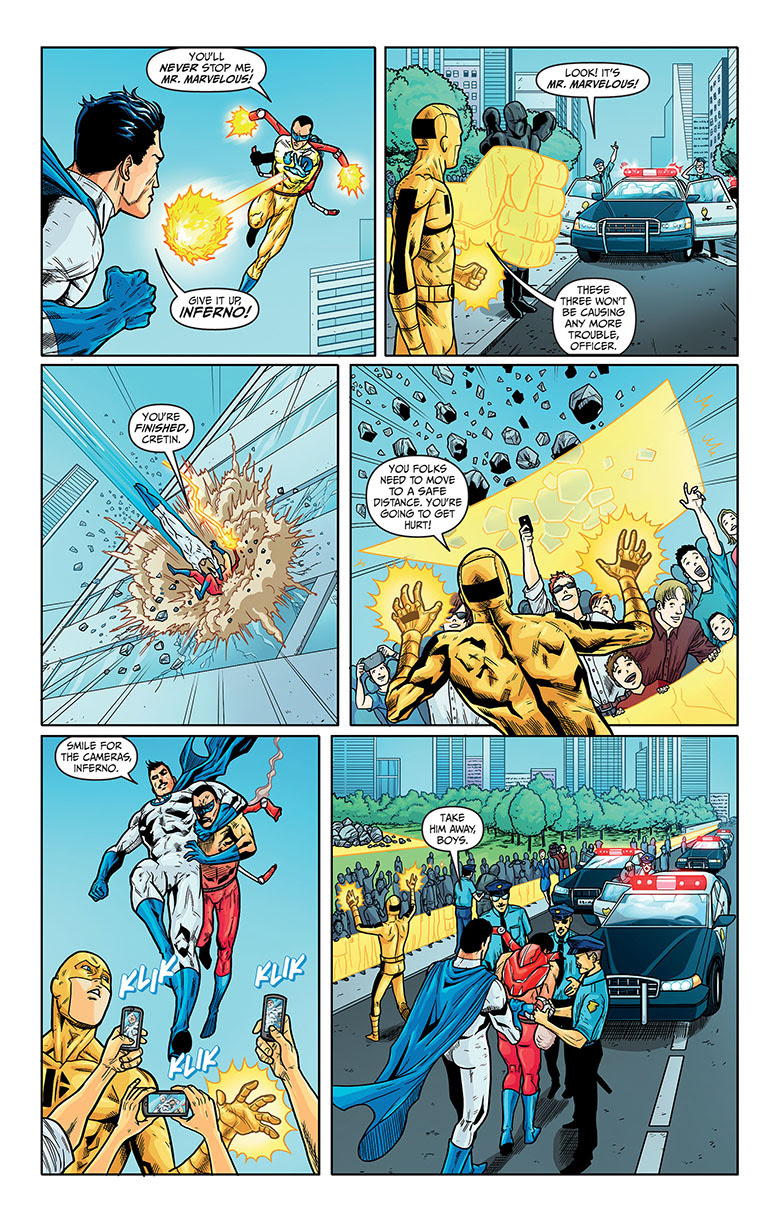
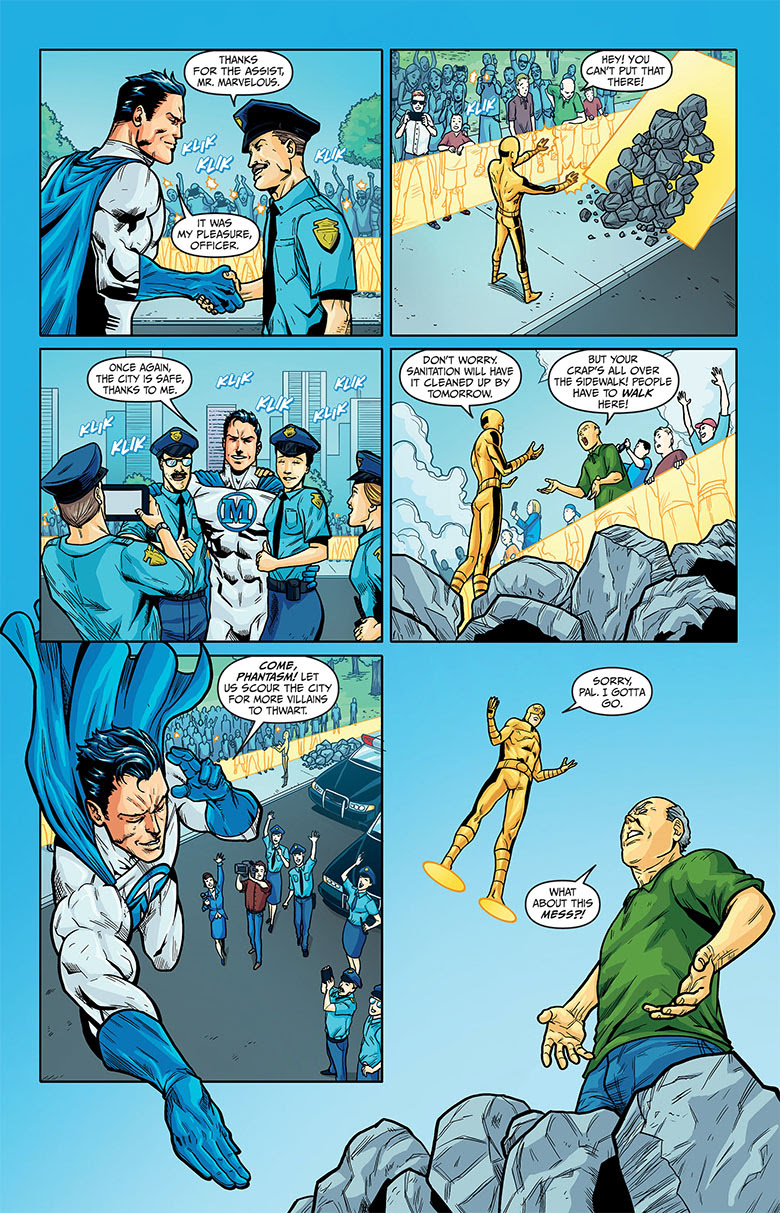


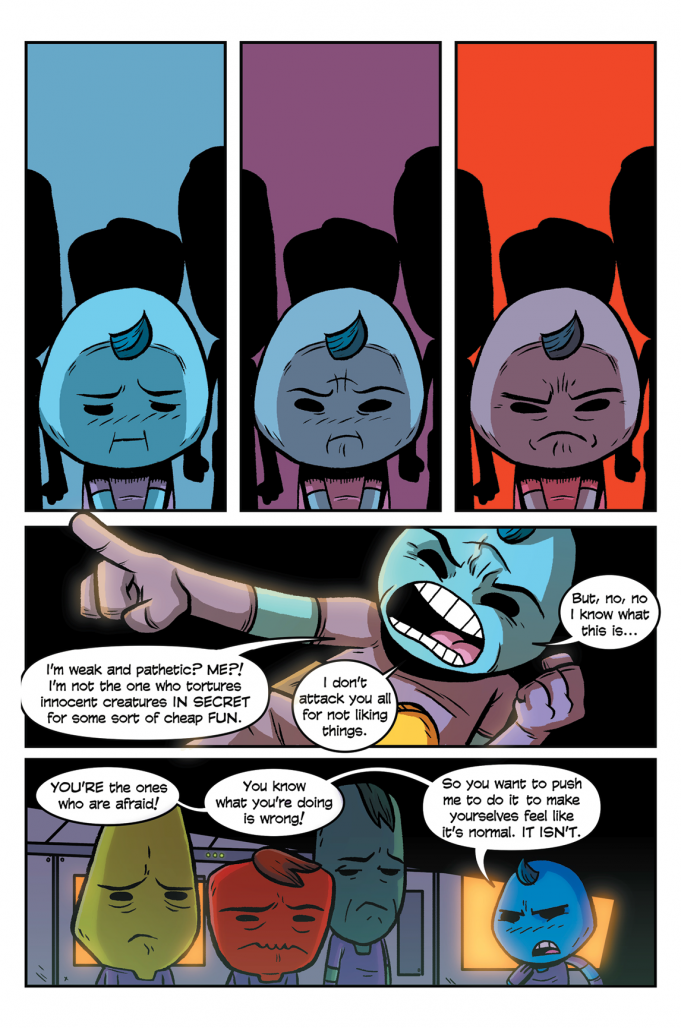
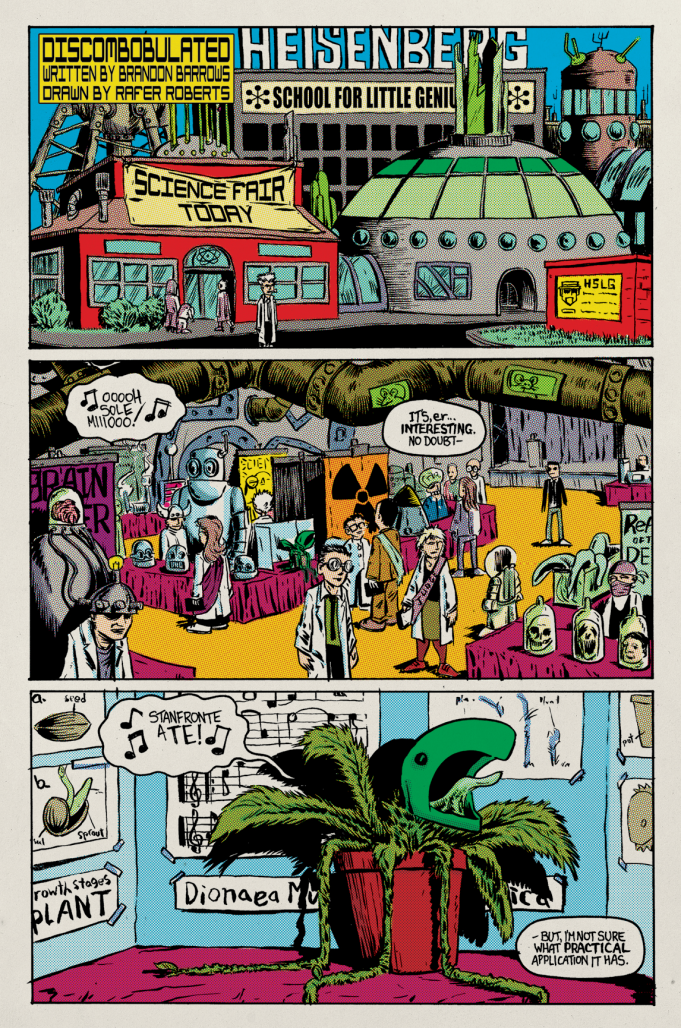
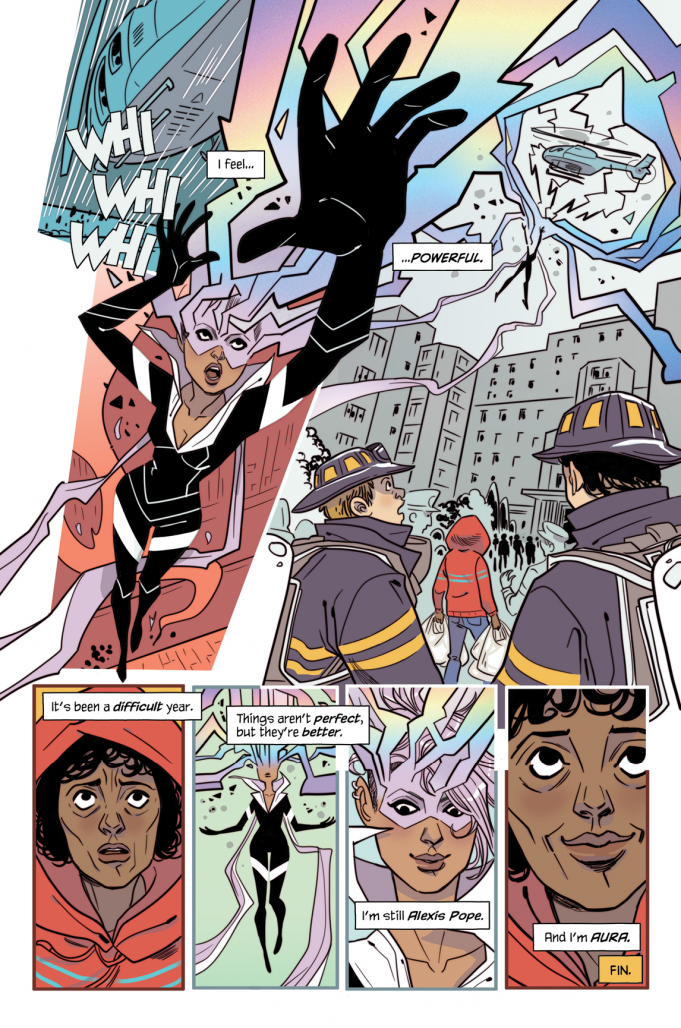
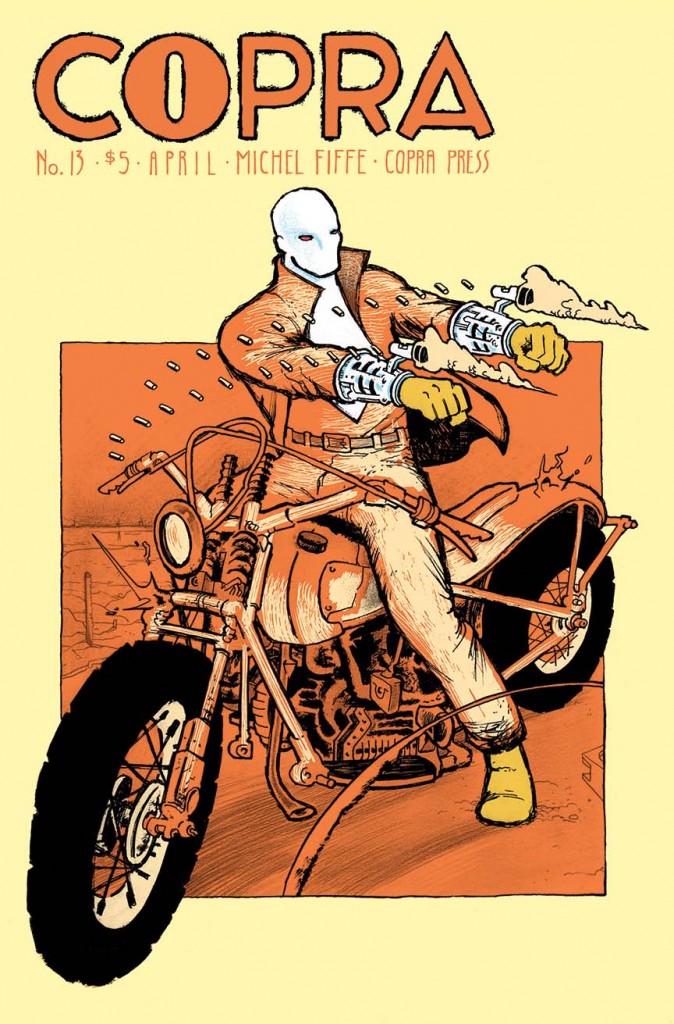

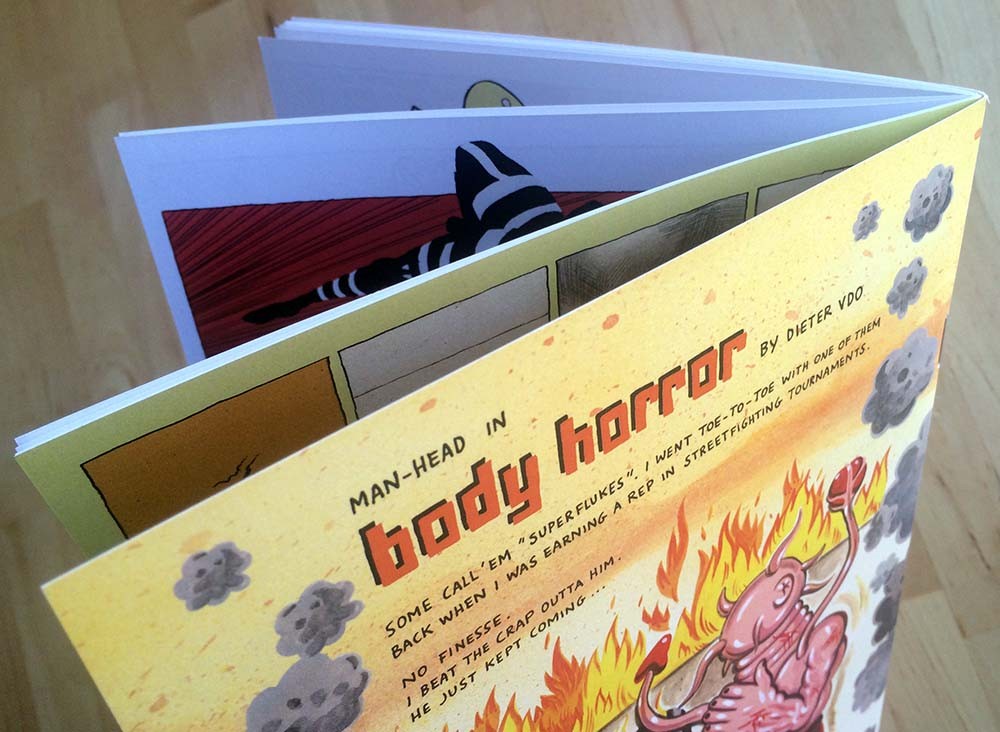
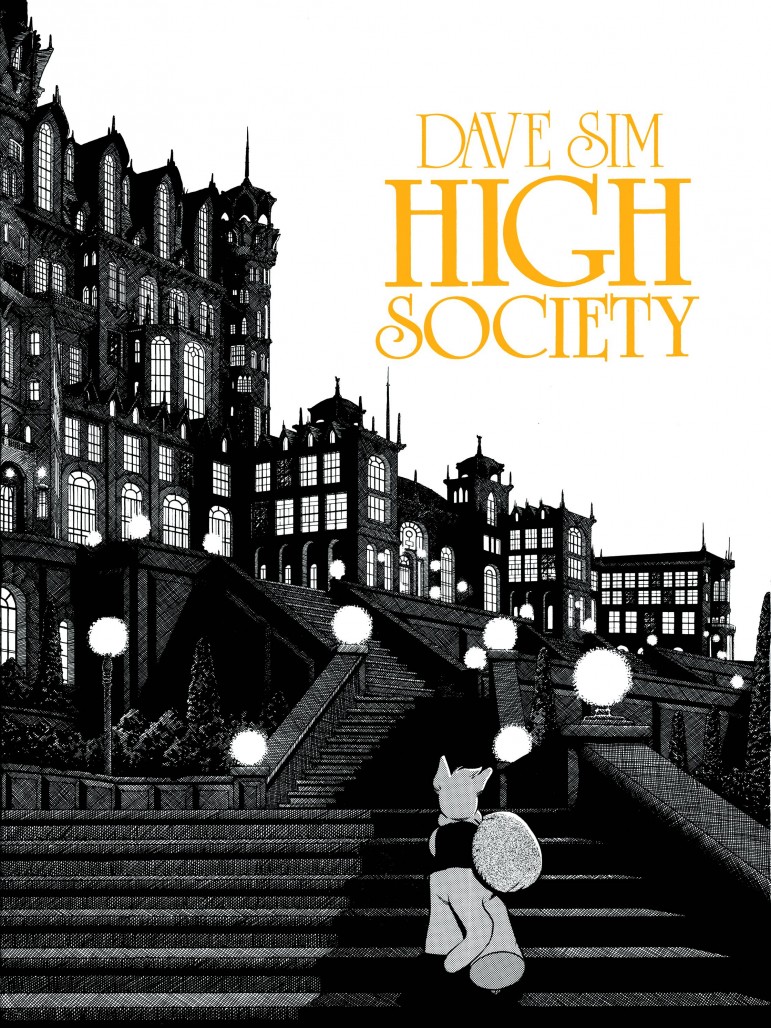
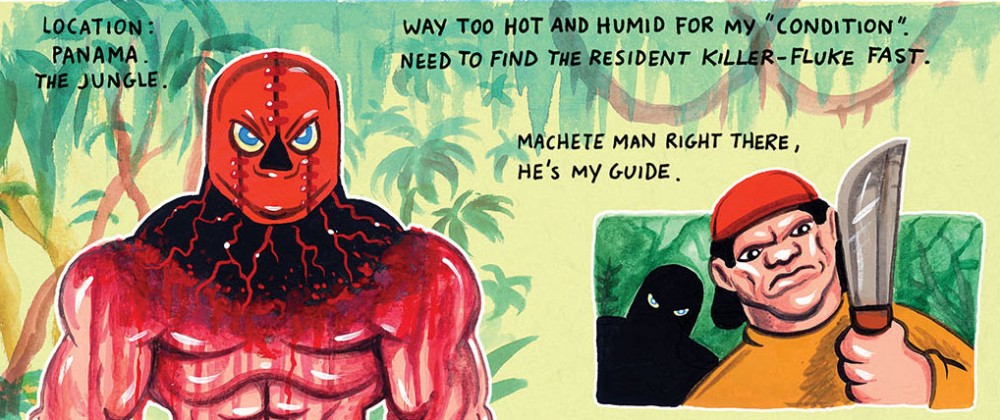
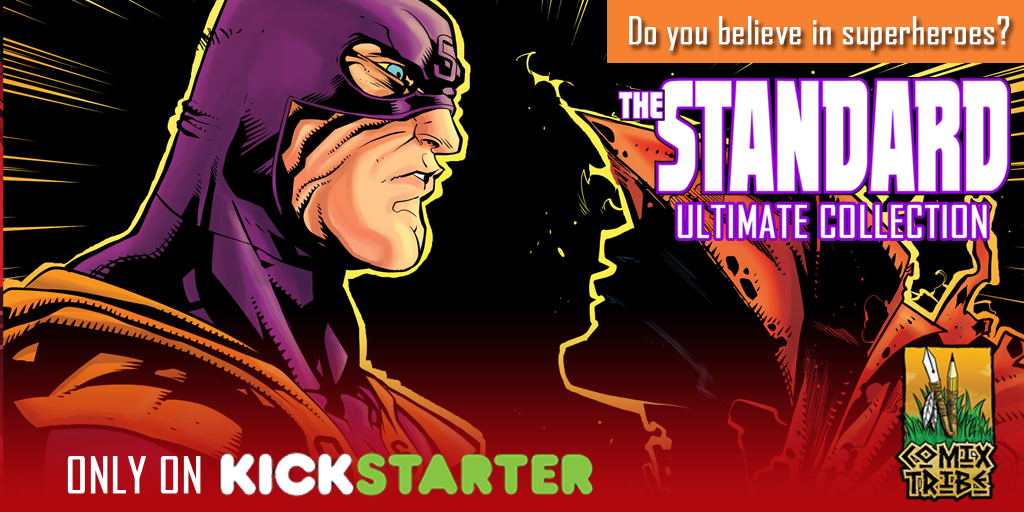
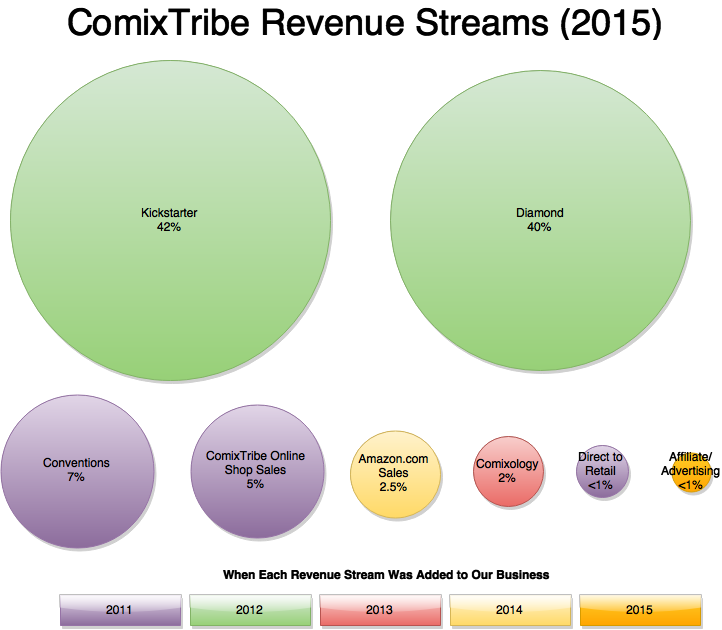





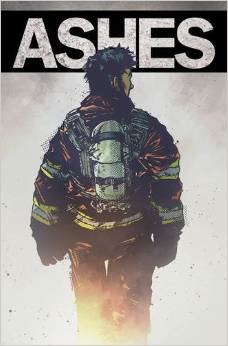
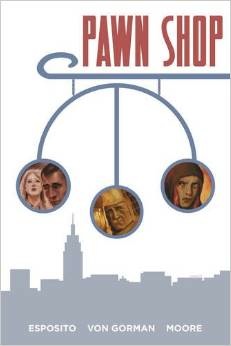
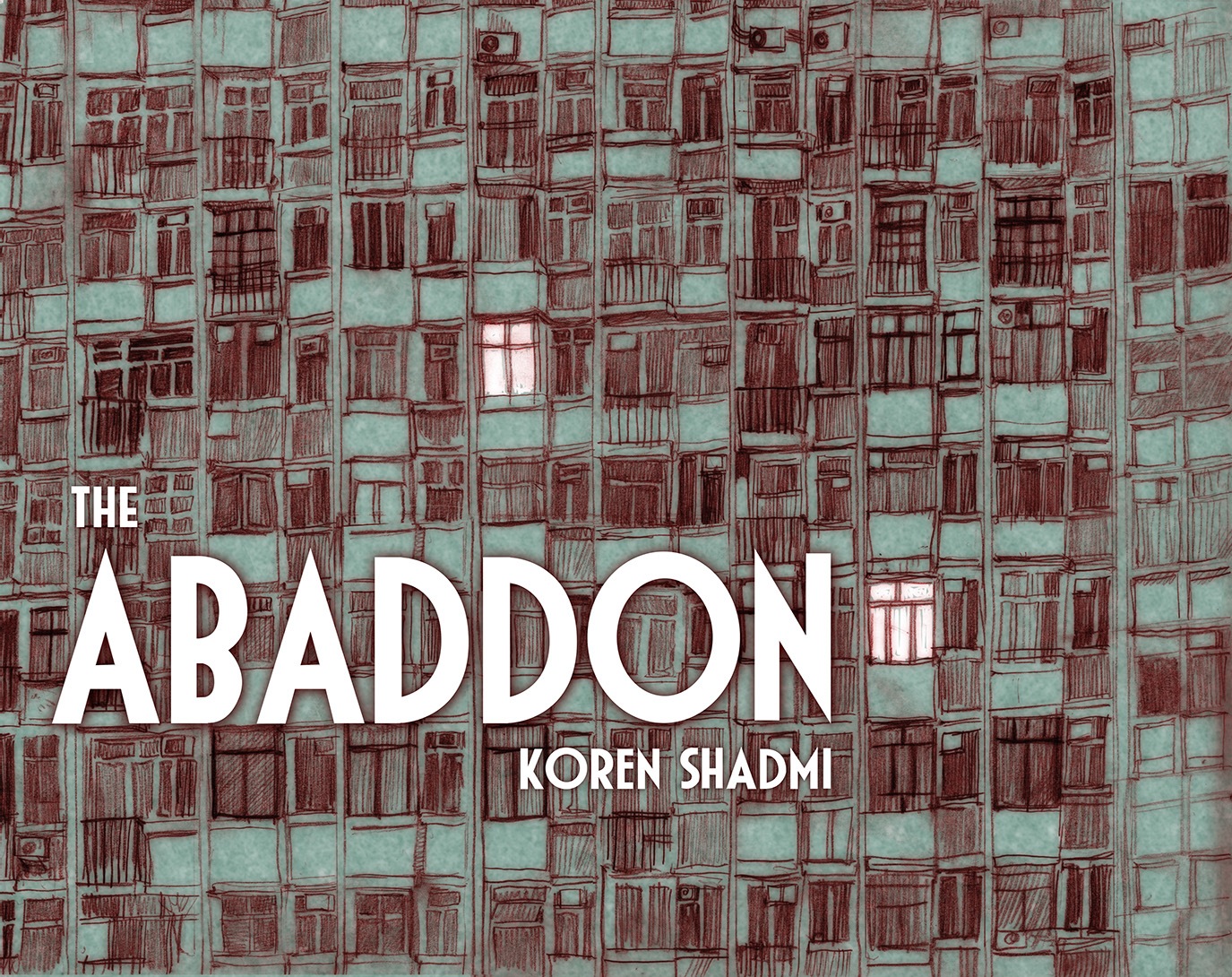
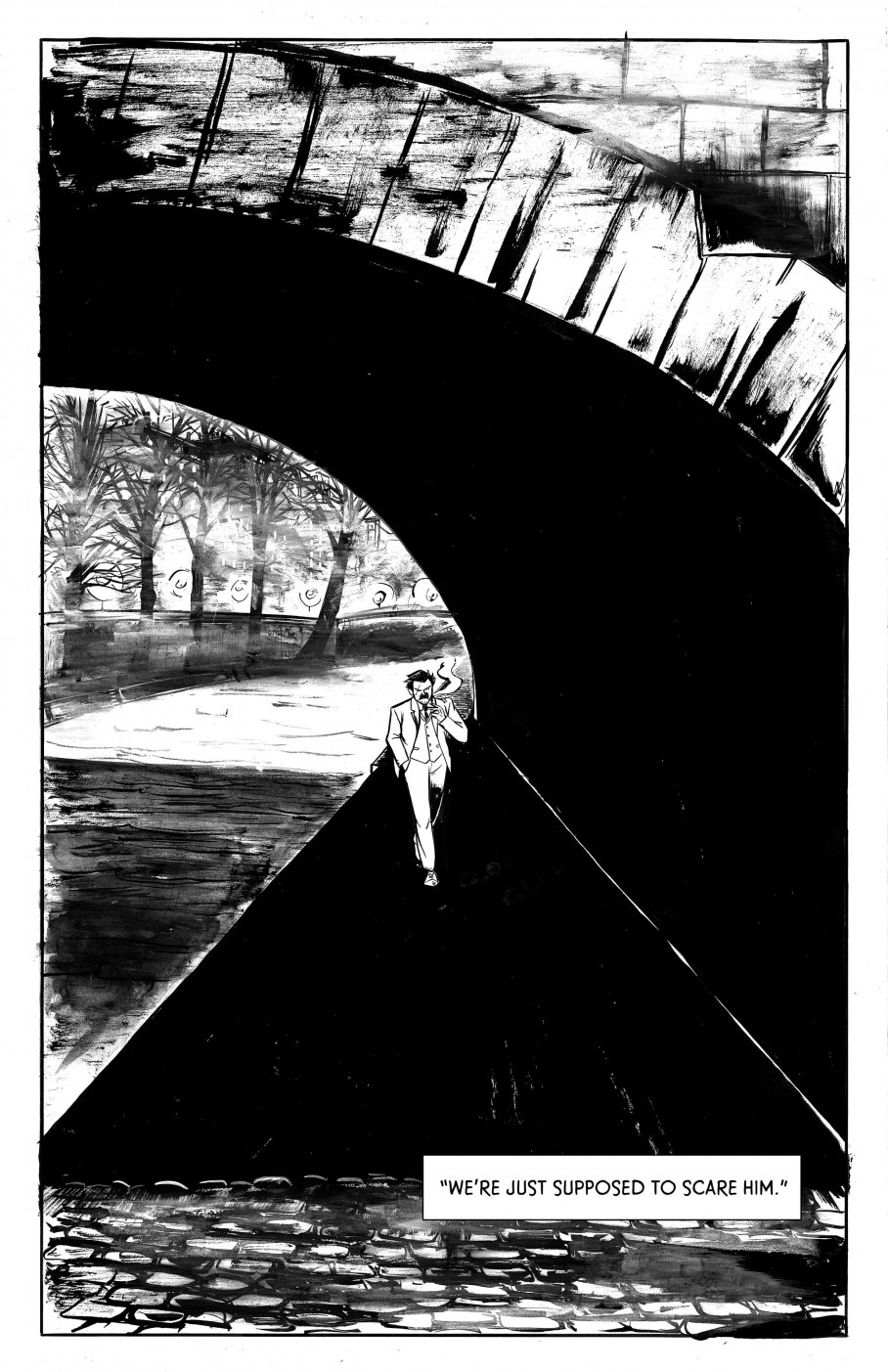
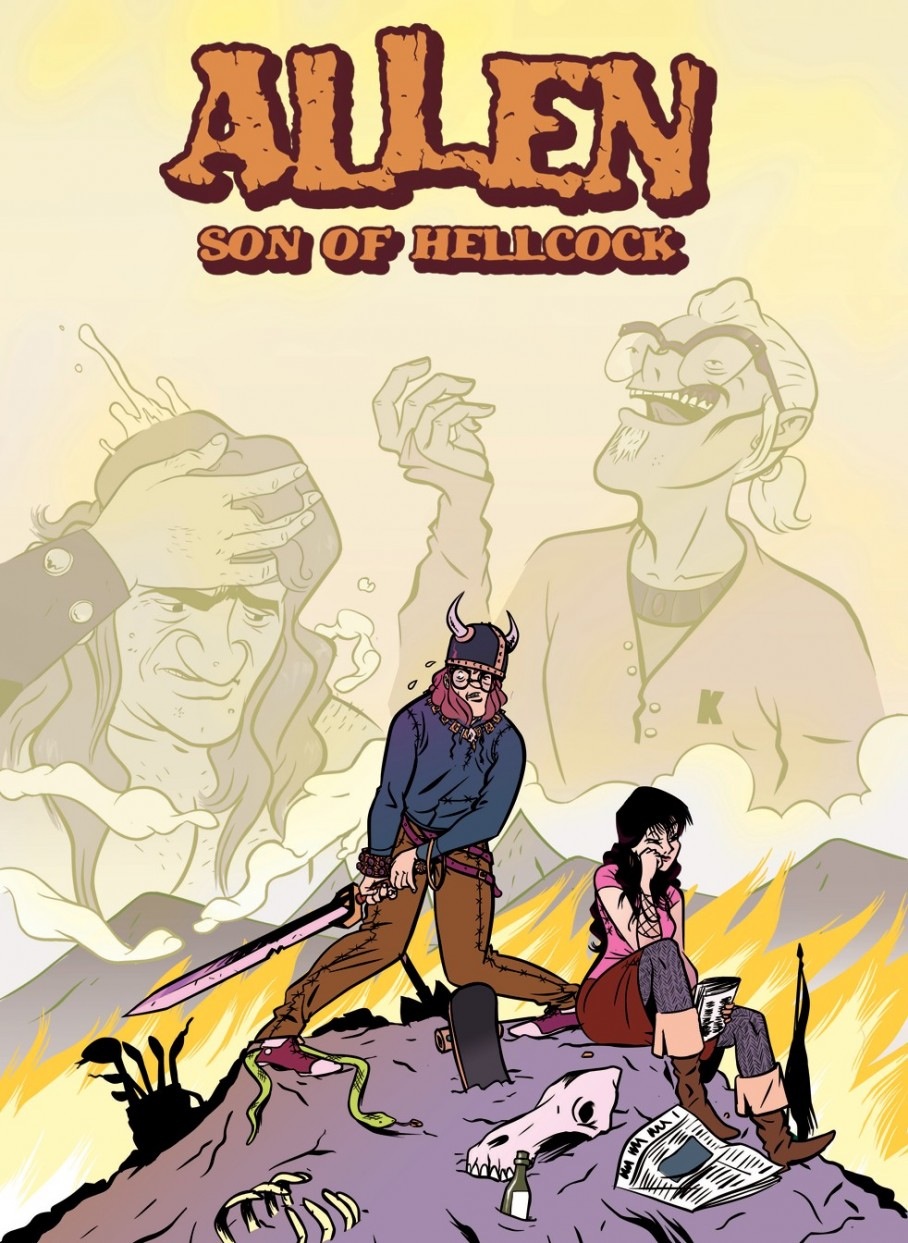
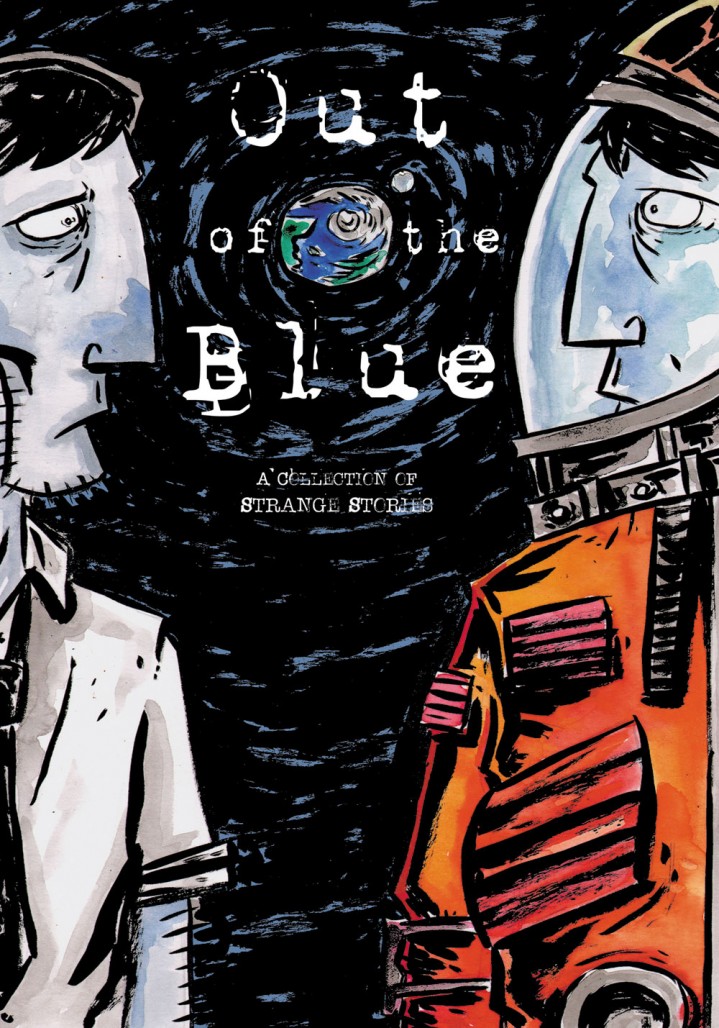
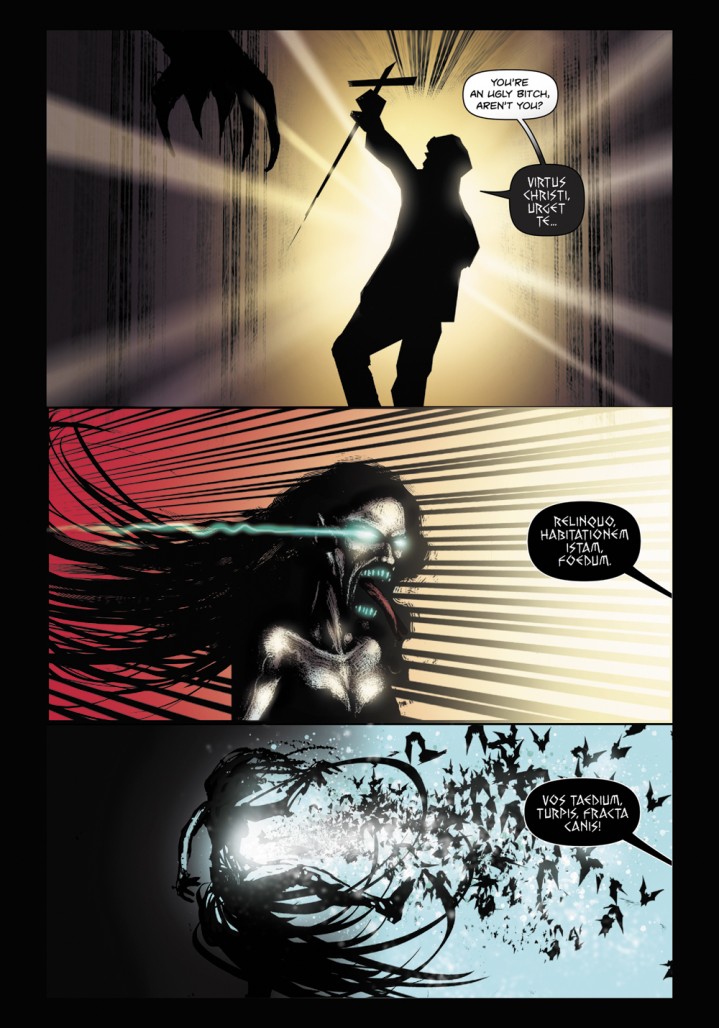
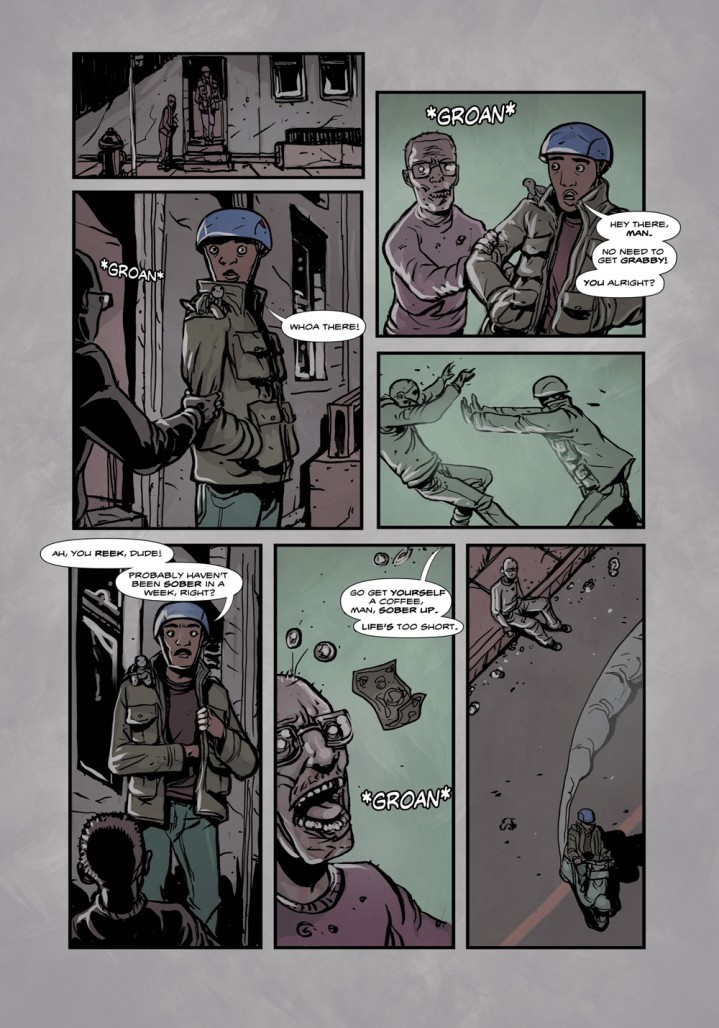
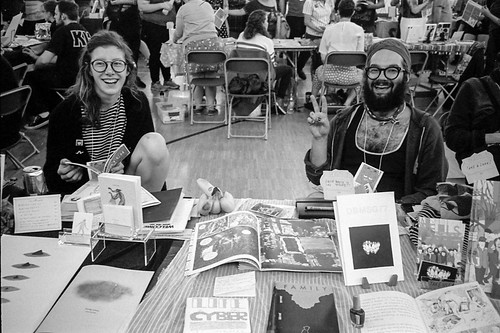
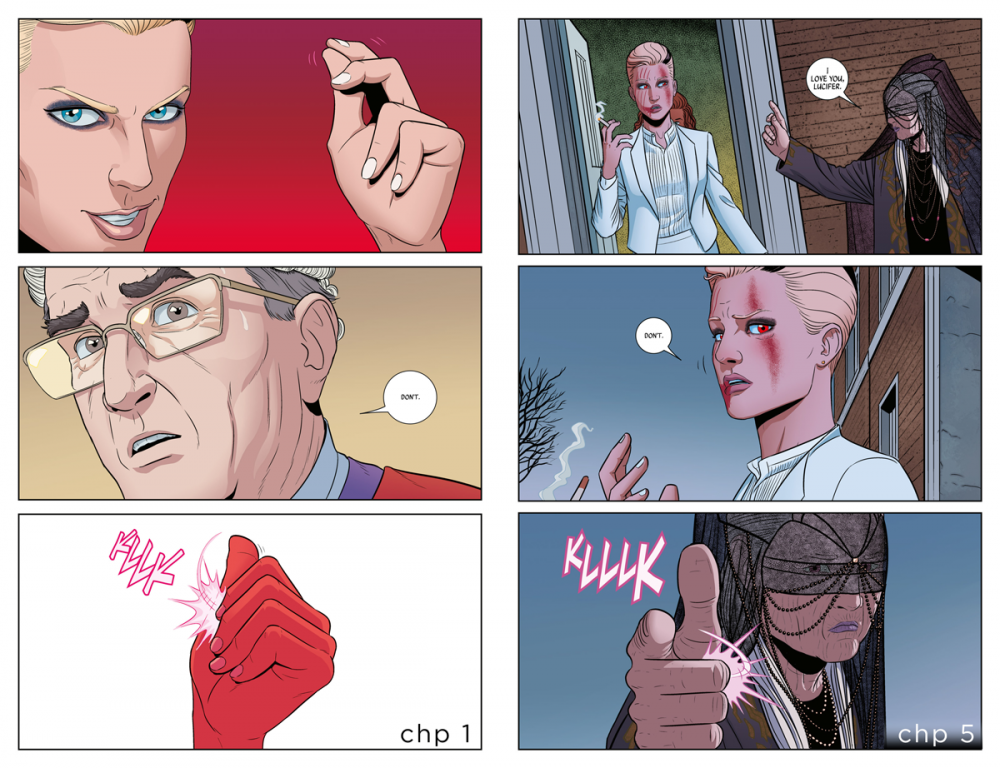
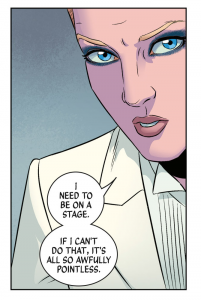
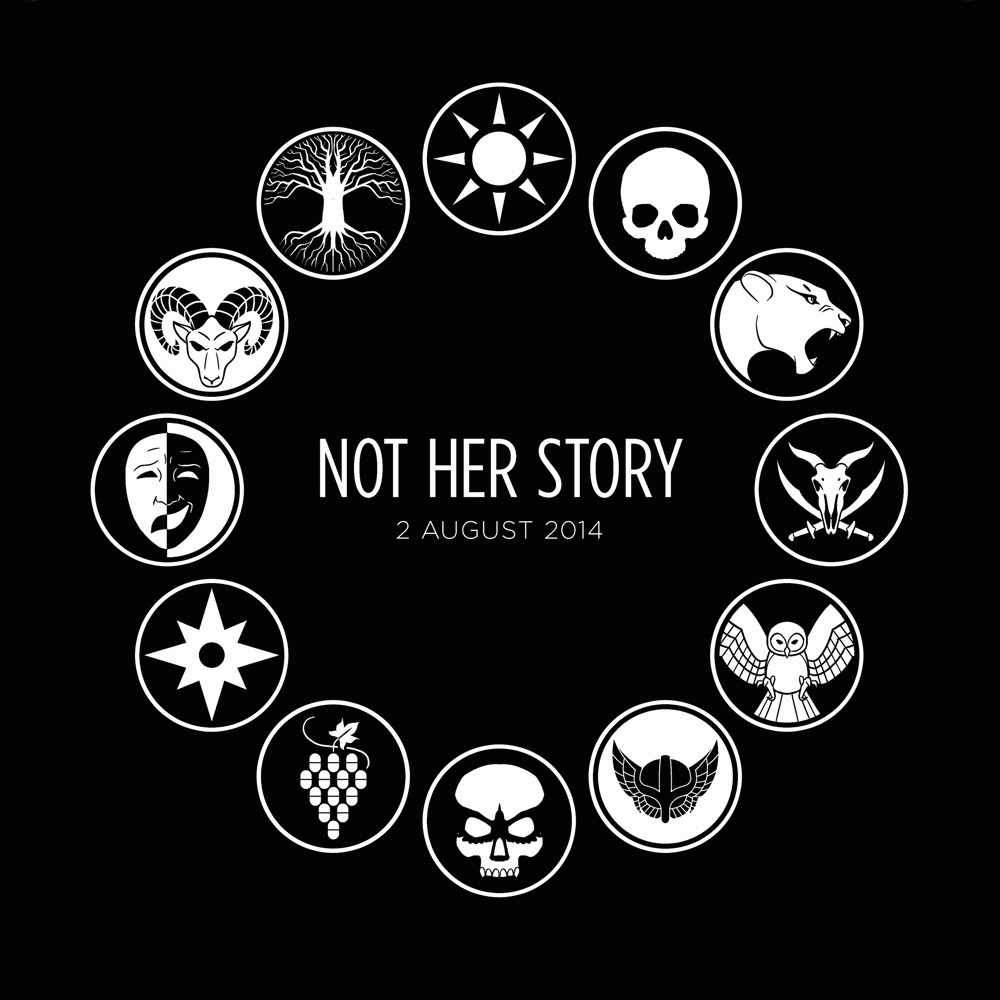

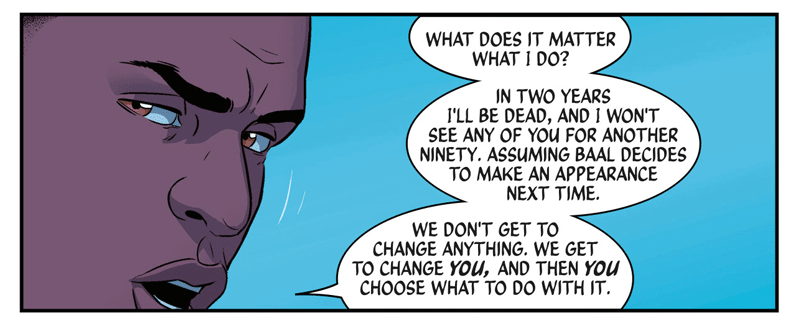
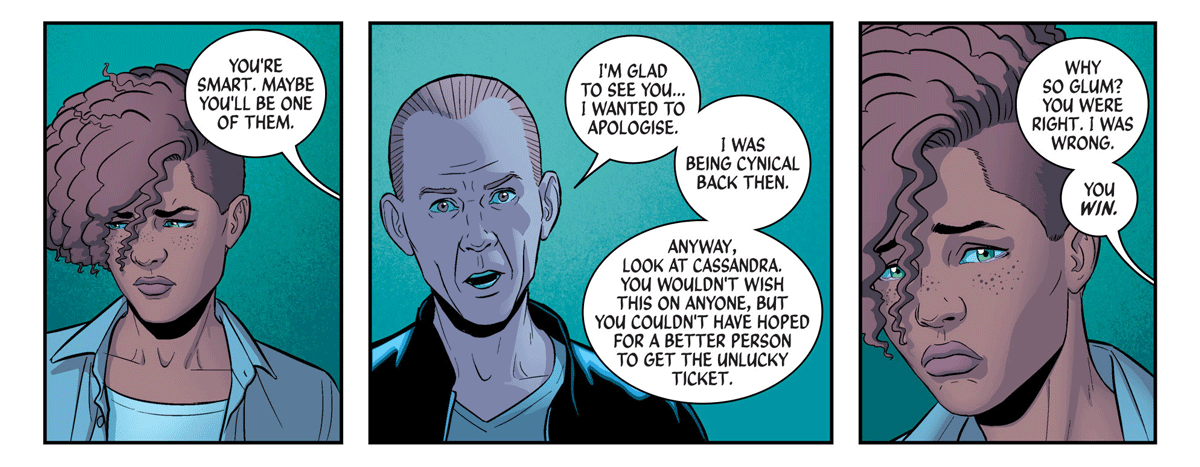
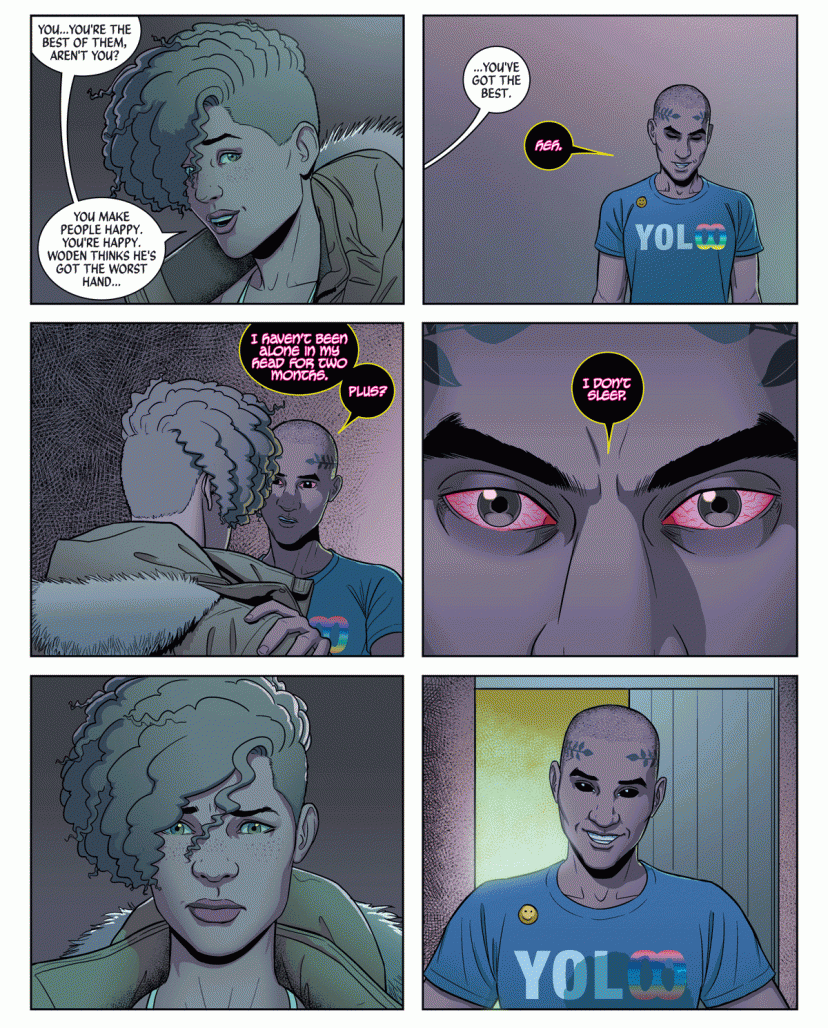
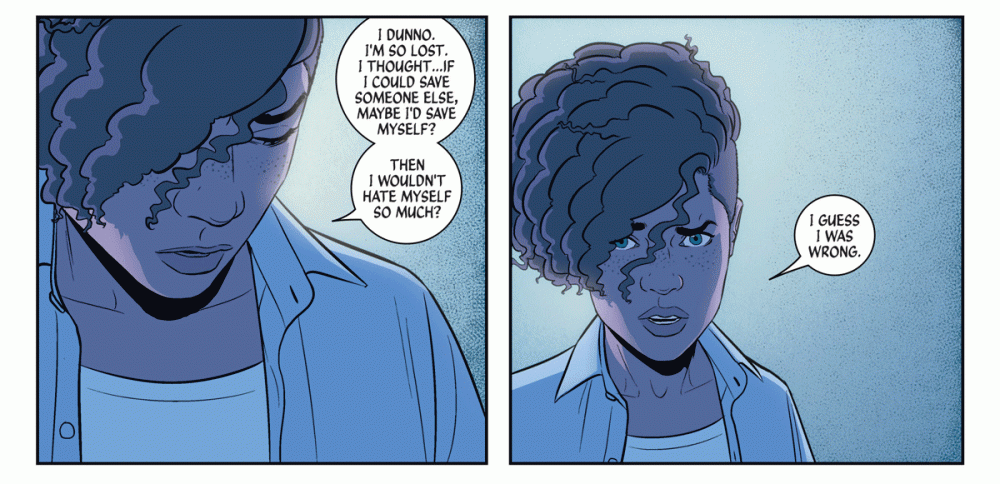
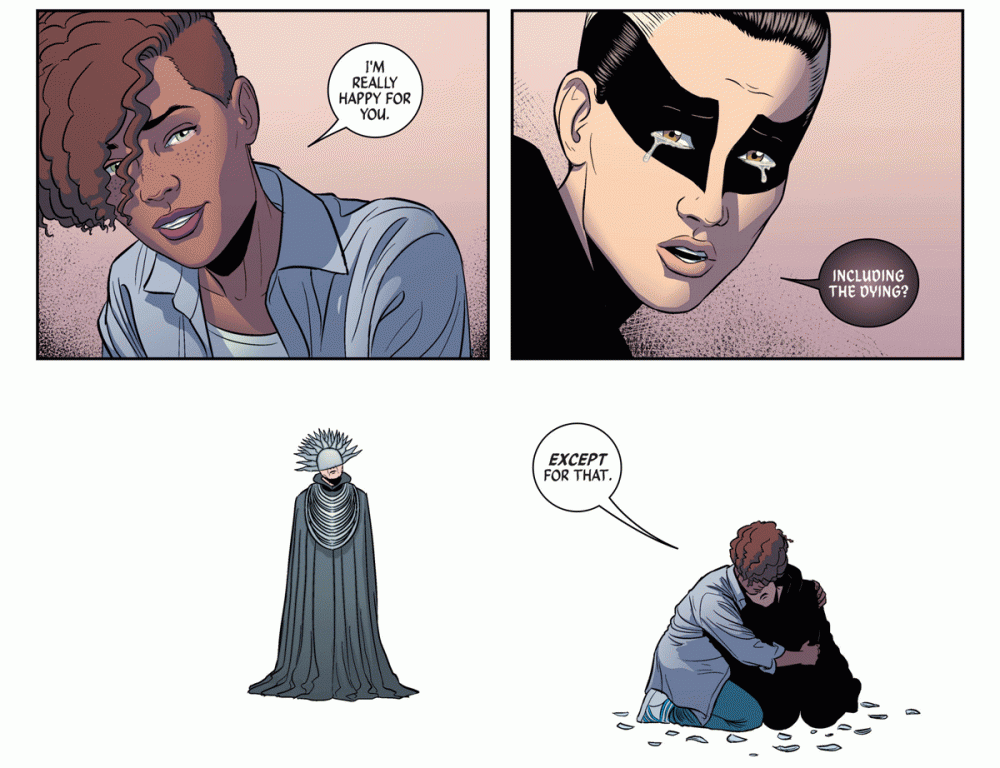
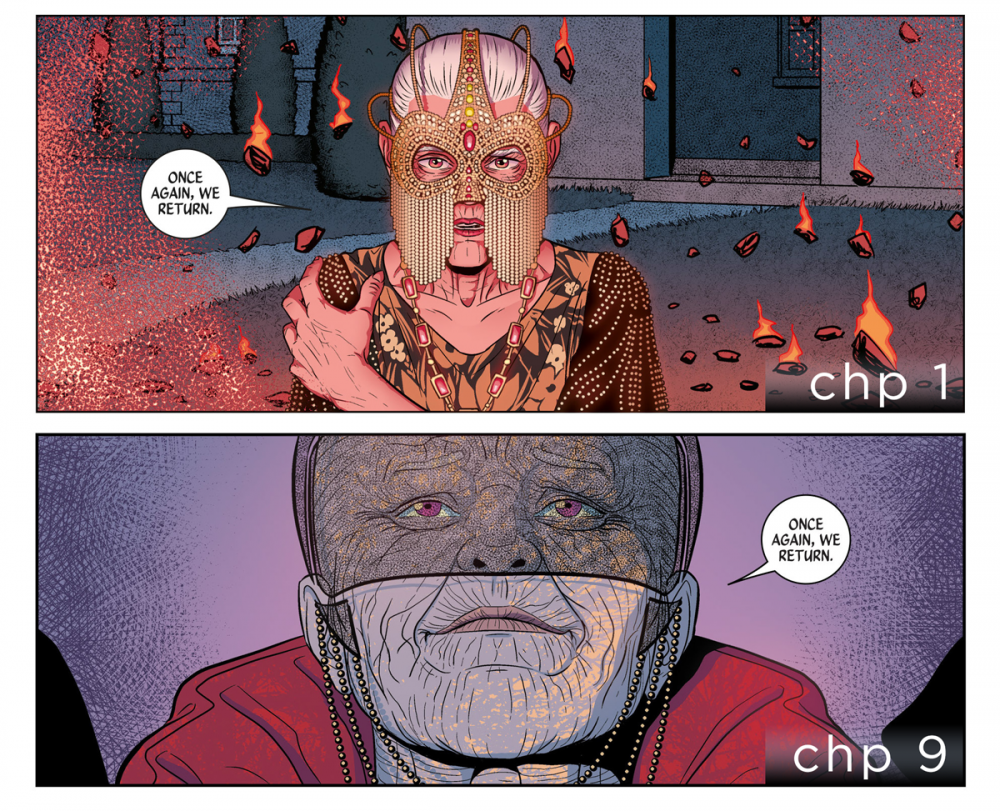
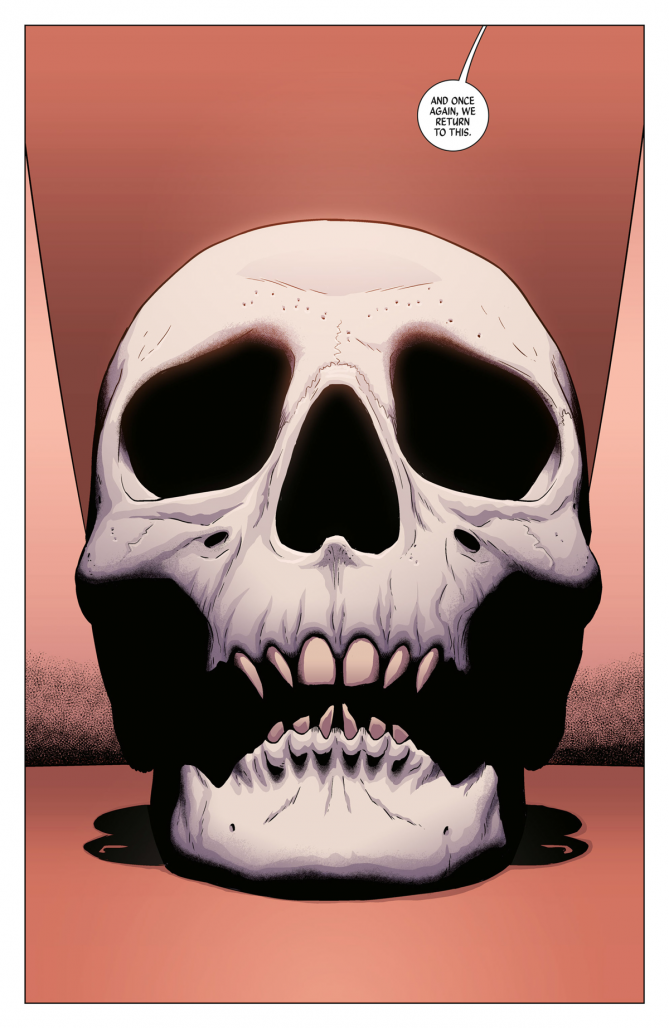
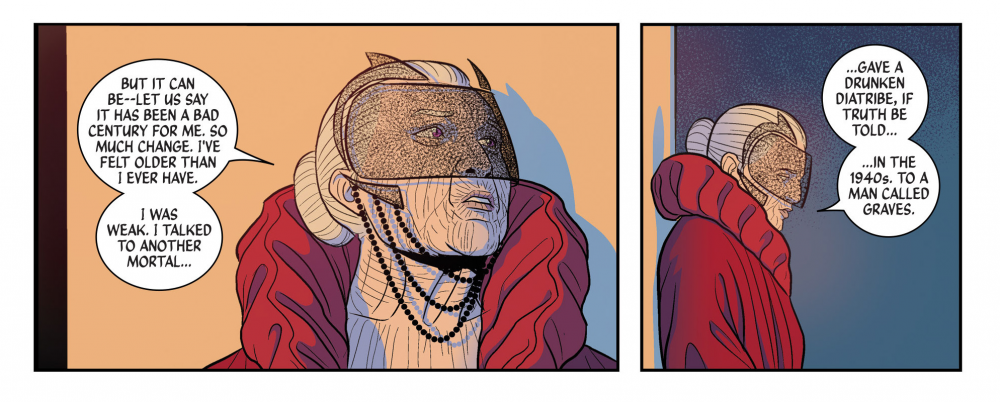
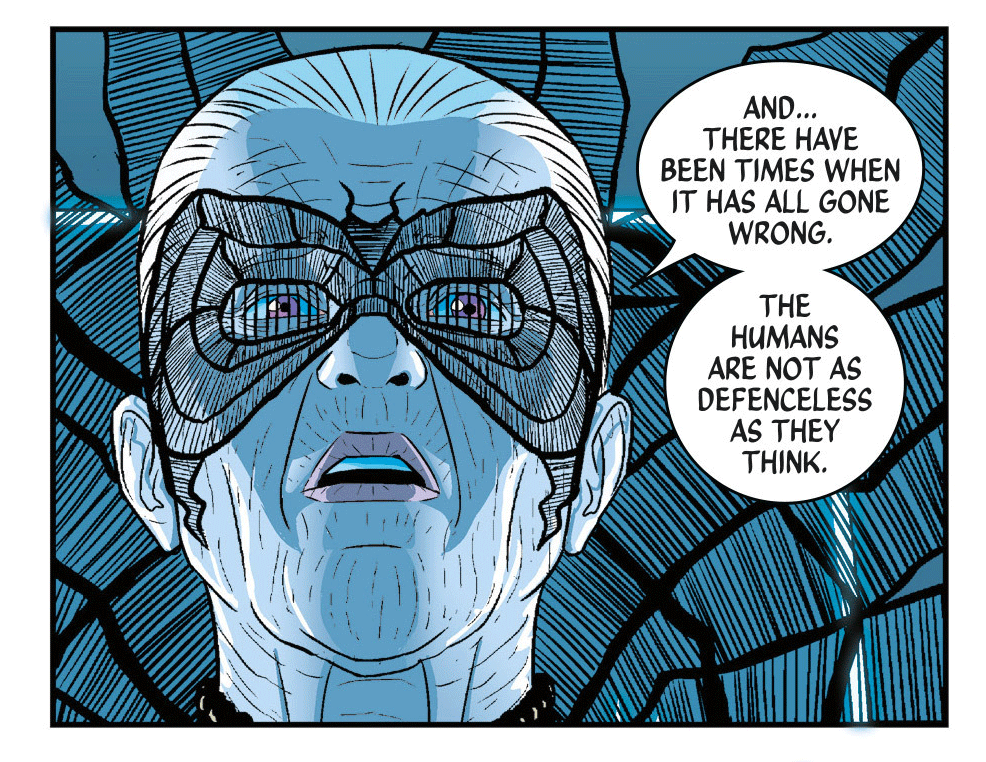
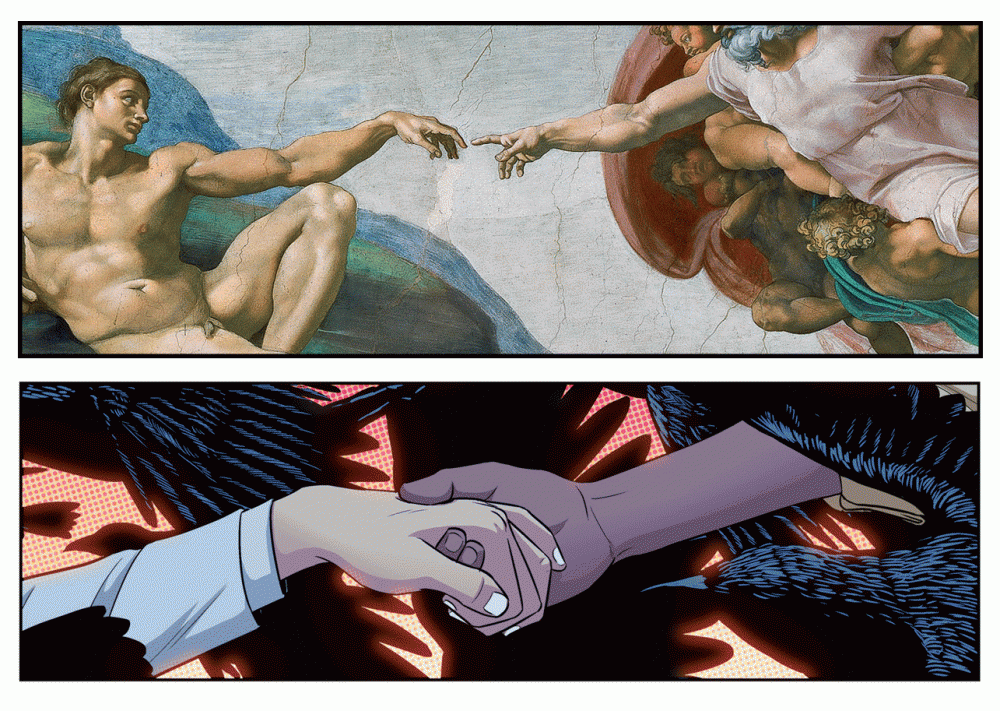
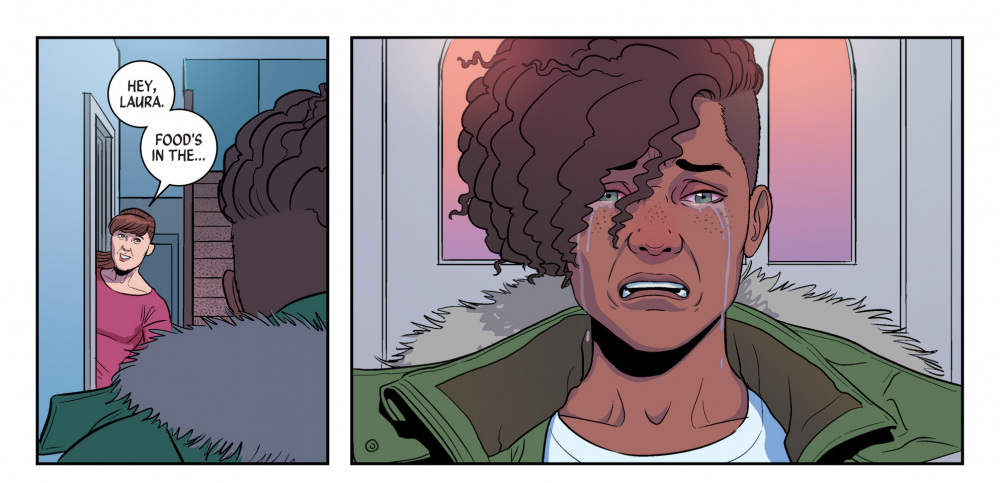
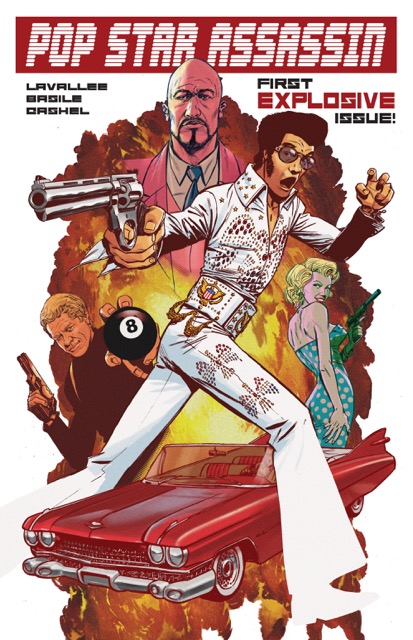
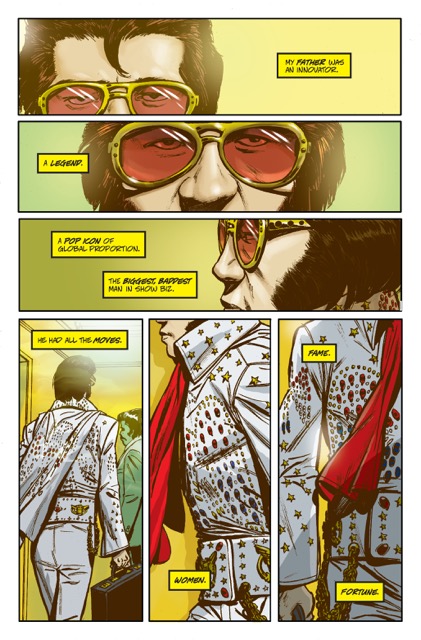
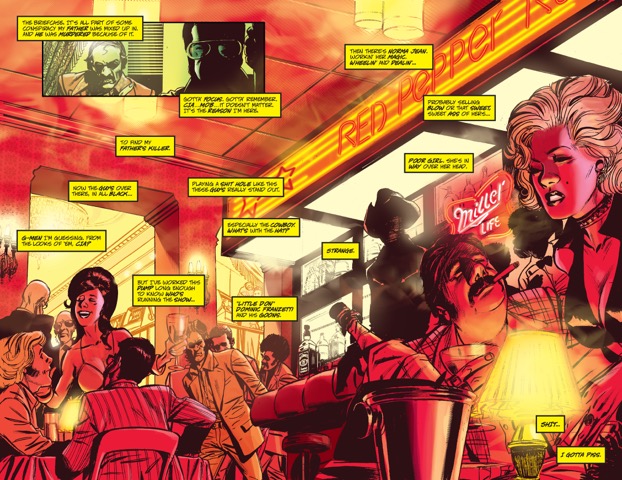
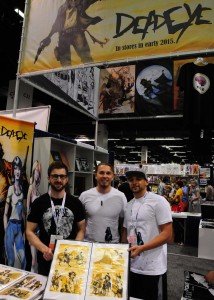
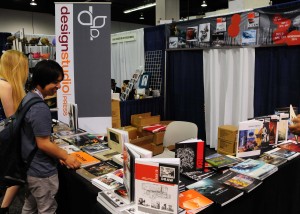
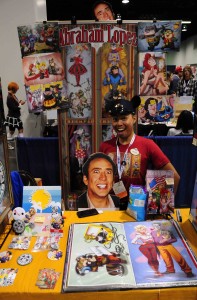
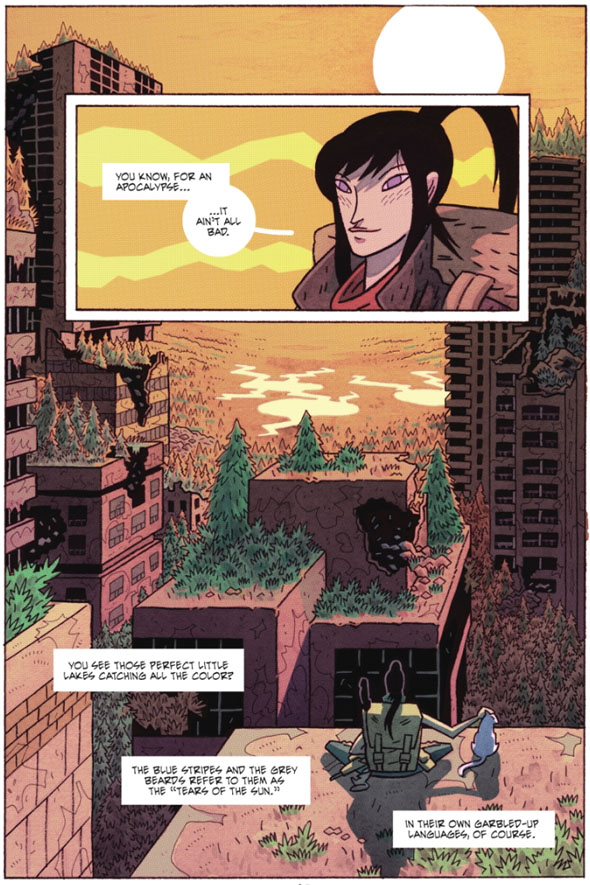
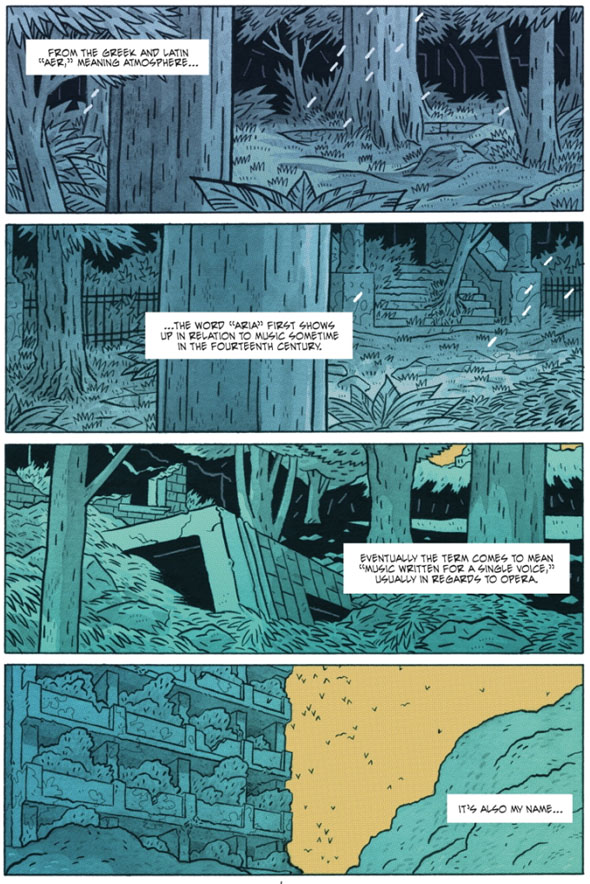
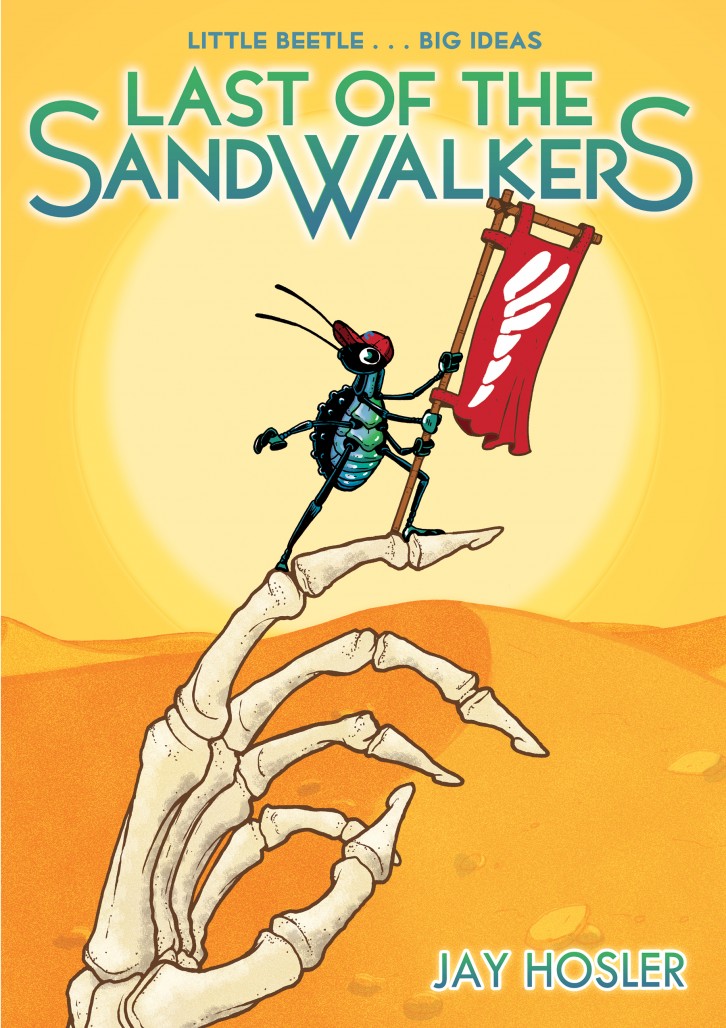
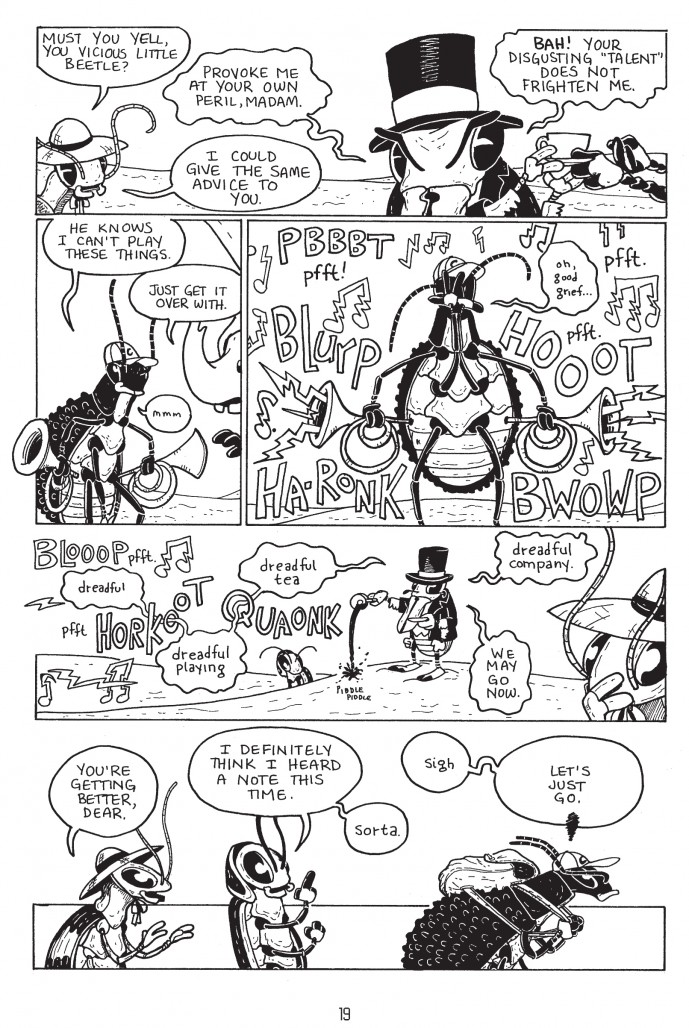
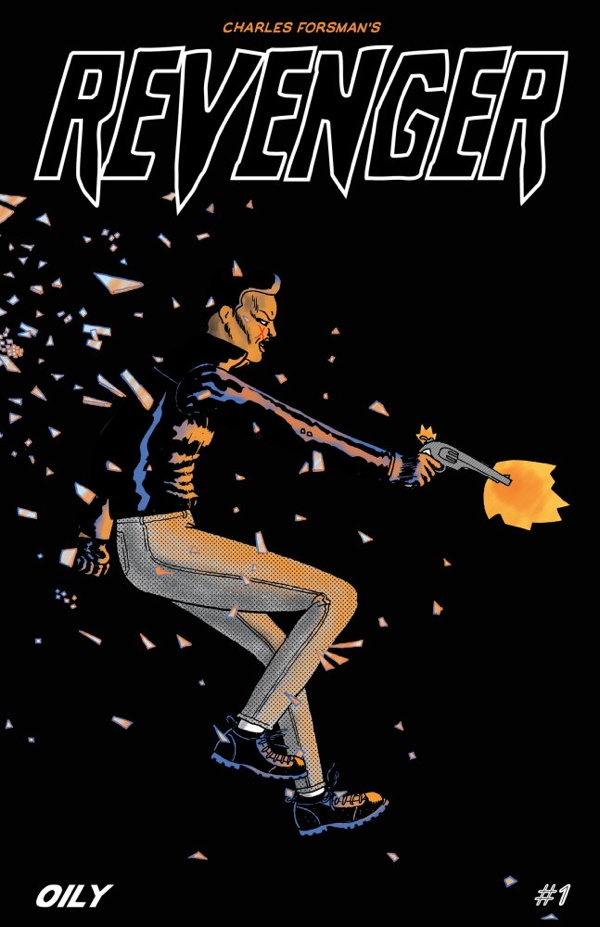
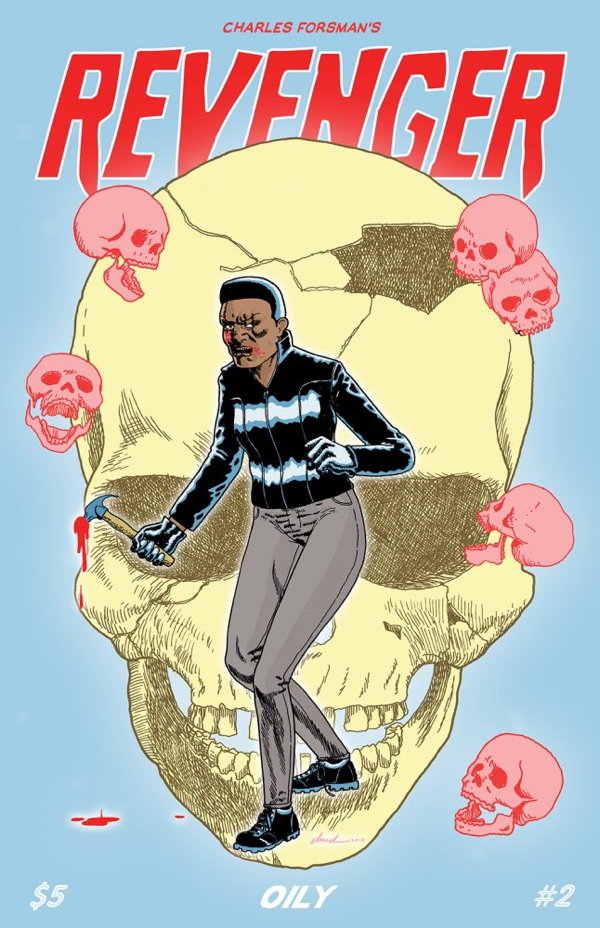

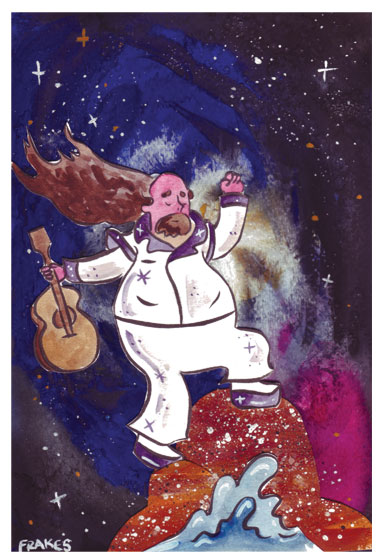
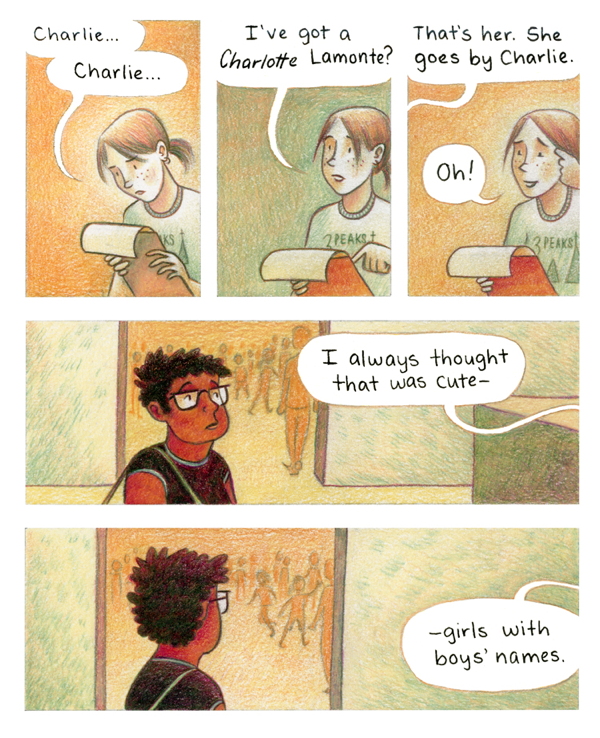
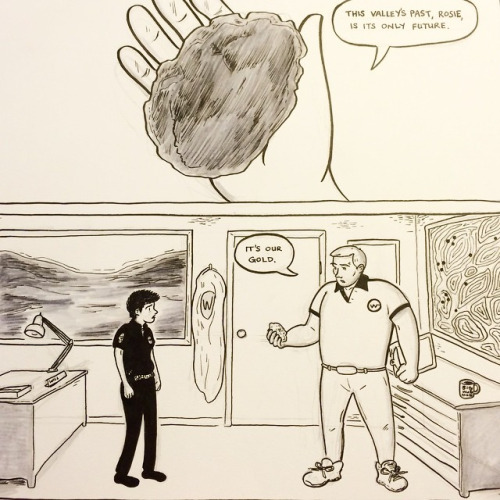
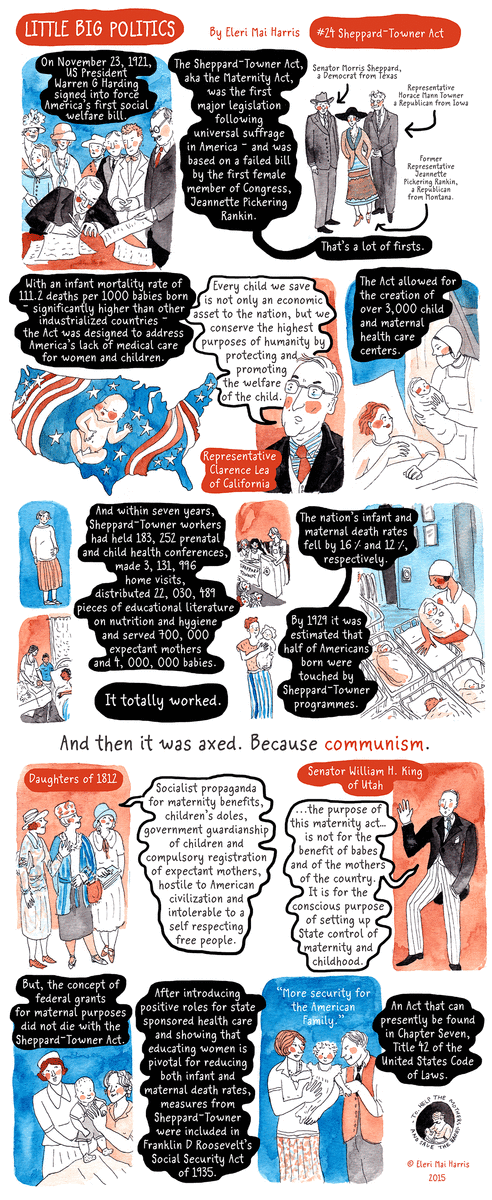
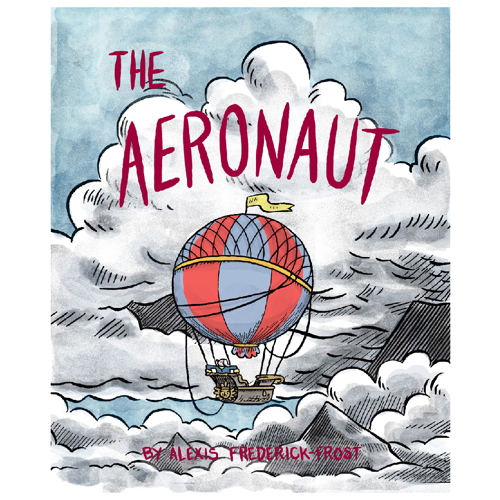

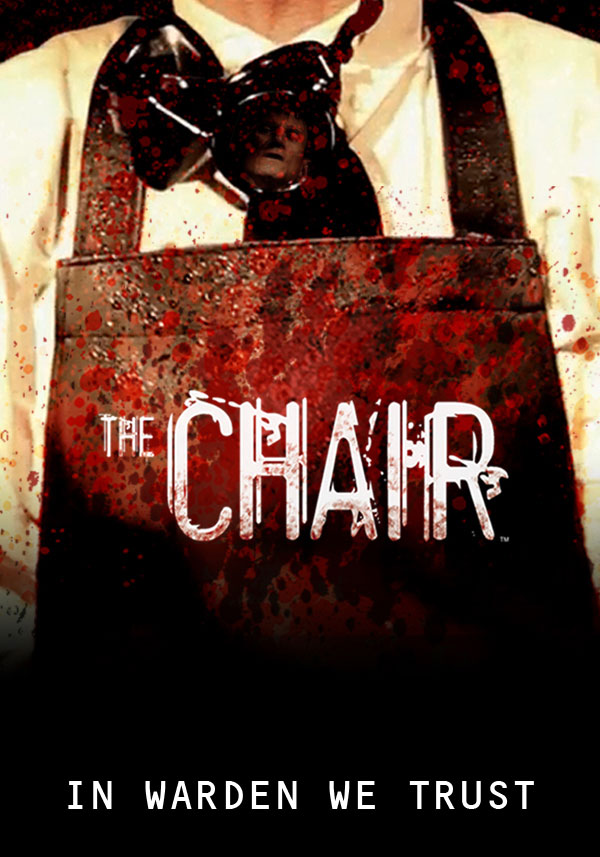

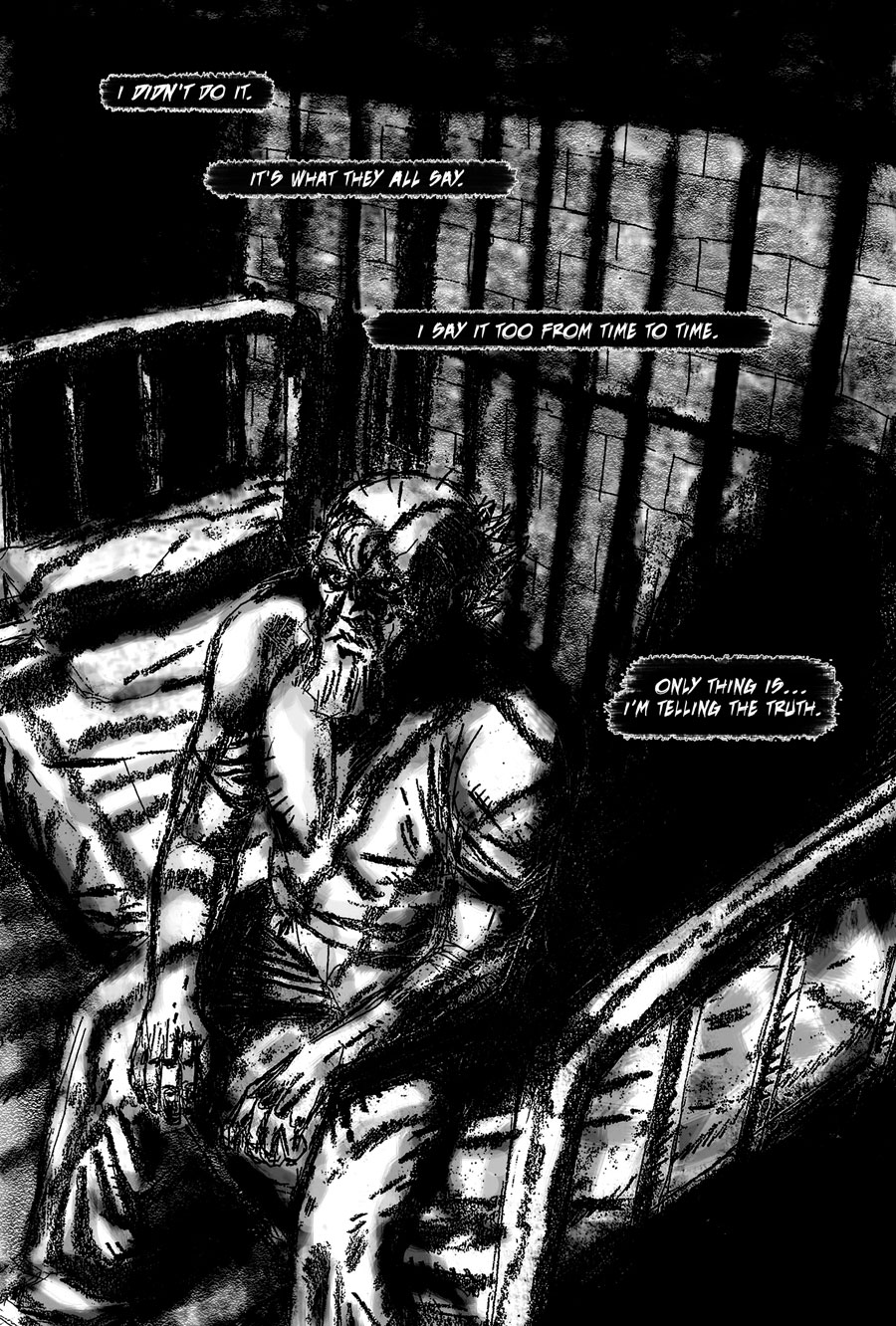

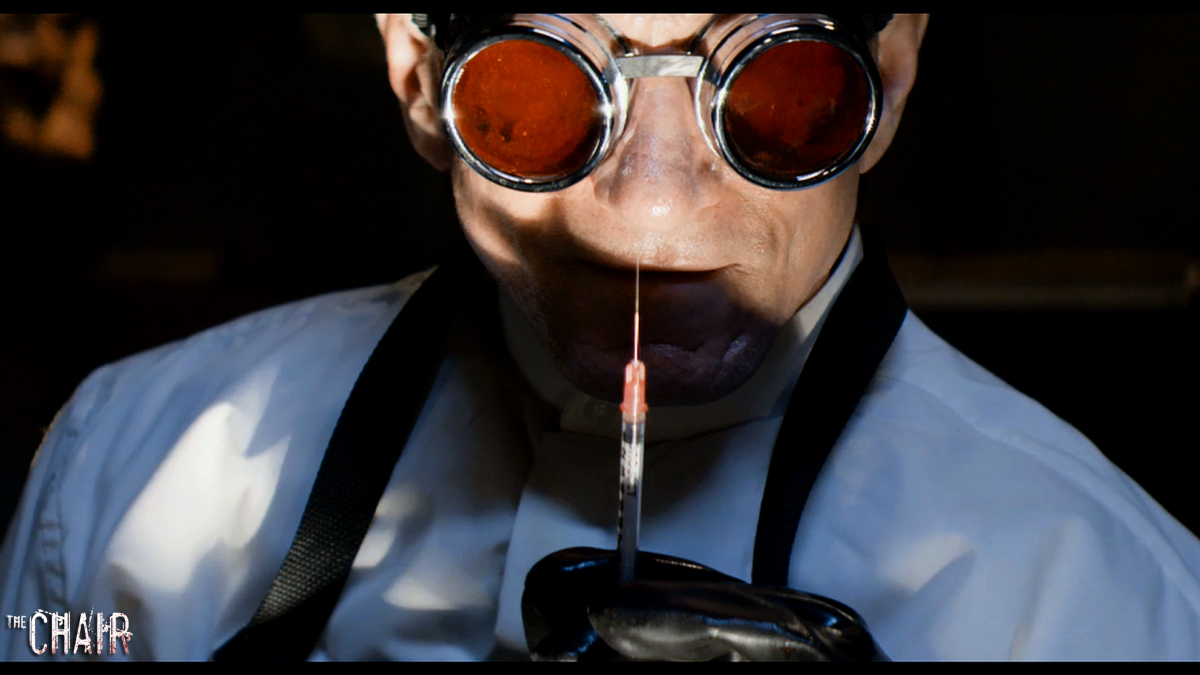
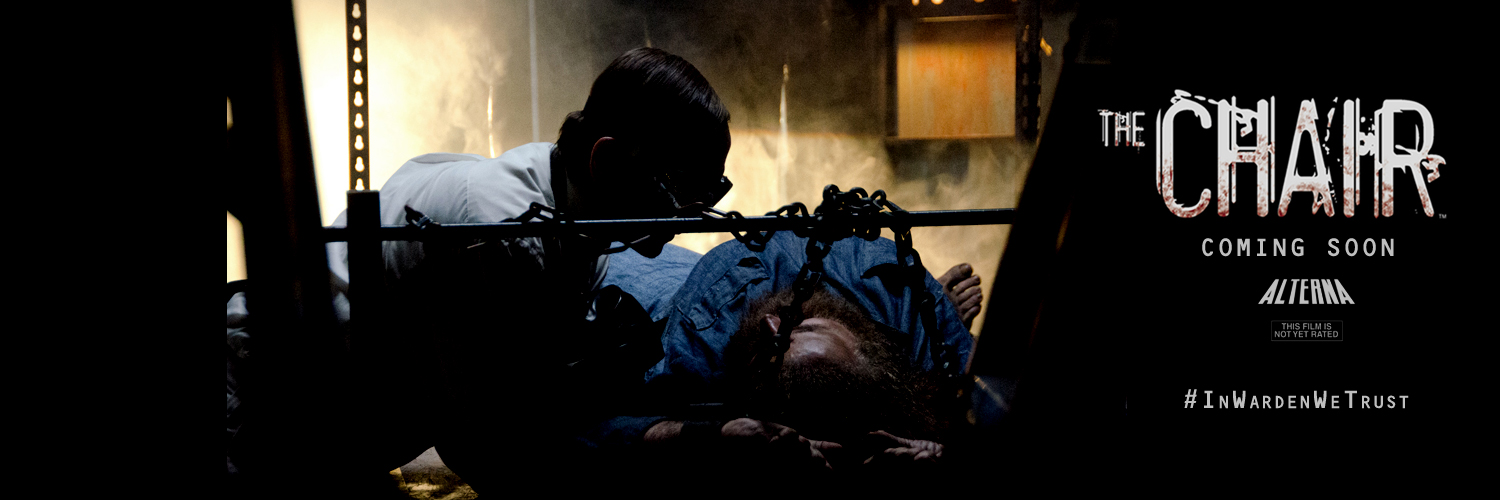
Looks great – can’t wait.
[…] Read the entire article/interview here: http://www.comicsbeat.com/fall-preview-dean-haspiels-beef-with-tomato-sparks-a-conversational-flame/ […]